Case studies
Real-time it infrastructure information system.
Our client is a comprehensive IT management company specializing in documenting and visually managing all enterprise assets, critical infrastructure and interconnectivity between systems, networks, users, locations and services. Their comprehensive Configuration Management System consolidates an organization’s IT/Telecom network assets and connectivity in one repository. Their services provide the insights necessary to maintain critical operations and create a more complete visual picture of an enterprise IT network environment.
The client had an existing application for organizing the site and infrastructure architectural design along with related information for their client companies. However, they required several improvements in order to maintain a quality service for their growing number of clients. One issue they faced was that their application was not accessible on all mobile devices. The interface was cumbersome and not user-friendly, which created several system hiccups and delays. The collected information needed to be stored back to the database in the form of a PDF for further action. In addition, they needed new administrative features to manage data and user profile information.
The client sought the assistance of AllianceTek, a software and IT solutions company that specializes in developing custom solutions that meet the unique needs of a business. AllianceTek carefully studied the challenges of the company and listened to their issues and requirements. One requirement was for AllianceTek to redesign the application without altering the existing code or logic.
AllianceTek transformed the existing web-based application into a responsive design application and implemented a new design without changing the existing logic or code.
The redesigned application has a number of new features that increase control, usability, scalability and business intelligence. It enables users to generate mapping, flooring and architectural layout design, along with related information, in a PDF format that the system automatically archives after a period of time. Users can also share this information through social networks. In addition, a new customized dashboard allows much easier use of the application on all devices, anywhere and anytime, while a scheduler form and internal scheduler feature help manage jobs and historical data related to the jobs with the facility to look up relevant information.

Implementation
AllianceTek’s offshore and onshore teams collaborated to develop the redesign using HTML5 and jQuery, giving users the ability to view and access the application on Windows, Blackberry, Android and tablets. The custom designed dashboard and interface was placed in both tabular and grid view with an expandable and collapsible function that can feature all the desired information on a single page. This provided a new, customized user-friendly interface that facilitates users with ease to upload archived data information. The administrative functions allow users to view, delete, schedule, regenerate and share all generated PDFs, edit and update profile information related to the user and manage a specific job’s schedule.
AllianceTek’s custom solution allowed the client to achieve their vision and reach their objectives by leveraging technology that fit their business structure and improved processes. We delivered a real-time information system that generates various layout designs in PDF. The system is easy to use and can be accessed from any location. As a result, the client’s Business Intelligence became more flexible and scalable, allowing them to make better, more informed decisions with reliable information. AllianceTek met the requirement of evolving the previous system’s design using the client’s existing logic to provide a full, user-friendly interface with an intuitive layout and modules that are easy to navigate.
Our Finest Achievements
Best of Our Work
With a track record of successful projects and satisfied clients, we strive for excellence in every endeavour, ensuring that our best work becomes a catalyst for our client's success.
Real Estate Loan Application Portal
An experienced commercial real estate finance company with the secure upload of many financial documents from end users.
An easy-to-use platform where government programs could be analyzed and automated.
In order to process the application in bulk, the SBA APIs be integrated with the limitations and third-party apps.
eLearning Platform
A client from sales and marketing domain was looking to change their offline method of a training platform for their executive and take it online. They wanted...
Able to monitor executives or students using reports on their accomplishments and remarks.
Schedule the repeated notifications at certain intervals.
Investor Information App
A client working in the public-oriented transportation field was looking for a unique funding solution for public transportation and municipality projects.
Integrated support for authentication through Microsoft Active Directory.
Integrated support for video content through the JW player.
Let's discuss
Your project.
Please fill in the form and our representative will get back to you.
Awards & Recognition
Certified partner, we’d like to hear, your requirements.

Home / Resources / ISACA Journal / Issues / 2021 / Volume 5 / Technology Modernization Digital Transformation Readiness and IT Cost Savings
Case study: technology modernization, digital transformation readiness and it cost savings.

“Digital Distinction” is a major trend for growing, medium-sized organizations, with growth requiring a well-executed digital platform enabled by foresight, leadership and accountability that helps ensure that societal needs are addressed with limited input resources. 1
This digital distinction story was performed with limited resources in a multiservice urban Aboriginal agency (the Agency) providing holistic, culture-based programs and services for Aboriginal children and families. The Agency strives to provide a life of quality, well-being, healing, and self-determination for children and families in the Toronto, Ontario, Canada, urban Aboriginal community by implementing a service model that is culture based and respects the values of Aboriginal people, the extended family and the right to self-determination.
The Agency faced considerable technology challenges at the start of the pandemic-induced lockdowns. The mandatory move to a remote service model stressed the existing IT infrastructure to such an extent that it exposed issues such as network bottlenecks, Wi-Fi interruptions and landline unreliability, all of which compromised the ability of social workers to perform their duties. It had become evident to management that the Agency needed significant digital transformation as part of the journey toward the increasing virtualization of social services and a much-needed modernization of its base IT infrastructure.
To be effective, however, digital transformation must build on an IT foundation that ensures reliable and sustainable outcomes. While IT modernization is a necessary condition for digital transformation readiness, 2 it is not a sufficient condition. Readiness must identify and address all IT operating model gaps 3 before innovation; unfortunately, many organizations undertaking transformation are not ready for innovation. 4
An unprepared organization is likely to see its digital transformations flounder;
…barely one in eight are successful. Even worse, only 3 percent of … 1,733 business executives … report any success at sustaining the change required for successful digital transformation…. 5
Thus, the Agency needed improved digital capabilities to support its growth and to increase its agility in response to the pandemic, so it engaged an experienced digital transformation consultancy with one executive from the group serving in the role of interim chief information officer (CIO).
The CIO title of the 1980s 6 has evolved to become one of vision as part of enterprise strategy, of managing risk as part of enterprise risk and of managing a governed high-performance team to sustain today’s ever more complex IT ecosystems. The modern CIO creates new operating models and helps the organization become data-driven. 7 The CIO takes the organization forward “… in ways that extract the maximum value from the information on hand…to make better decisions, faster” 8 as articulated in the new data strategy.
This case study articulates all the listed requirements of the modern CIO from vision to risk management to creating high performance teams as part of IT operating model modernization. Furthermore, down the road, there will be sufficient material for a future case study to document the path of the organization to achieving fit-for-purpose data for data-driven decision-making and improved reporting efficiency.
THE AGENCY’S INTERIM CIO’S FIRST STEP WAS…TO ESTABLISH THE ORGANIZATION’S CURRENT STATE TO DETERMINE ITS STATE OF READINESS FOR THE REQUIRED DIGITAL TRANSFORMATION.
The challenge: assessing the current state.
One cannot create a strategy without knowing the current state. The Agency’s interim CIO’s first step was, therefore, to establish the organization’s current state to determine its state of readiness for the required digital transformation. While tools facilitating readiness include staff surveys, 9 benchmarking and determining the business case for IT change, a survey was selected as the right tool to learn about the organization’s IT challenges (what the users experience), its IT priorities (what the users want fixed first) and its IT value chain performance (how IT creates value for the organization) through the lens of four different levels of stakeholders. The survey was distributed to staff at all levels; the output presented an end-user view of the organization’s current state.
The four key findings from the survey across these categories were:
- The organization’s executives had different perceptions of the frequency of the top IT challenges compared to the rest of the staff complement ( figure 1 ). This could be given that they were more aware of the negative impact of various IT failures on their mandate.
- The frontline staff were the most supportive of prioritizing all of the top items compared to management, who saw the priorities differently ( figure 2 ). This highlights the importance of engaging with people most actively using technology and not to depend only on management feedback for insights in this respect.
- The supervisor level experienced the severity of most of the shortcomings along the IT value chain ( figure 3 ).
- One of the major challenges experienced by end users was that it took too long for IT to fix IT issues, with users perceiving that it was getting worse. The same held for the network; network reliability was decreasing ( figure 4 ).

The fact that the survey highlighted IT challenges such as poor service request and incident management (the service desk item in figure 1 ) is more important than it may seem at first glance. As part of the journey to making IT more approachable and customer-centric, it is important that the service desk works flawlessly, as it is a major driver of staff (customer) satisfaction, which, incidentally, should be a key IT metric for any CIO.

A comparison of the actual ratio with the benchmark ratios above confirmed a historical underinvestment in IT. Reducing underinvestment in IT and addressing the associated risk areas while building future IT capabilities should be high, not only on the CIO’s agenda via IT governance, but on the board’s agenda, given the implications for enterprise governance.
The Solution: Addressing the Priority Current State Shortcomings
As a result of the current state findings, the CIO reconsidered improvements and developments that may impact the entire IT operating model. A restitution strategy was developed to address as many of the identified priority shortcomings as possible in the shortest possible time.
ADDRESSING THE NETWORK SHORTCOMINGS REQUIRED SIGNIFICANT PLANNING AND ACTIVITY, GIVEN THAT THE NETWORK WOULD NEED TO BE MODERNIZED WHILE THE AGENCY WAS STILL PERFORMING ITS MANDATE.
Restitution is about partnerships, though, another modern CIO imperative. Non-IT senior leaders are just as accountable for decisions and the delivery of ongoing IT services. 12 In other words, restitution is an organizational challenge rather than only an IT challenge, a fact that impacted the nature of the stakeholders identified to oversee the initiative. The more a CIO engages in stakeholder relationships with the goal of forging partnerships, the more effective the broad diversity of IT initiatives within the CIO’s portfolio must almost automatically become.
In this case, restitution was performed in 1) a technology stream and 2) an IT governance stream. (A data governance stream was also recently introduced but will not be explored further here.) The relationship between the CIO and IT governance took a major leap forward a decade ago when it was explicitly considered in South Africa’s King III code for corporate governance. 13 However, more than five years later, the focus still tended to be on the use of IT in regulation and compliance, 14 rather than being about the organizational performance and value creation mechanism it is meant to be.
Aligned with digital transformation principles, specifically around the operating model readiness, 15 restitution was not only about technology, but also about other important components of the organization’s operating model, such as people, process and governance.
Technology Stream
From the current state analysis, the Agency’s legacy technology landscape suffered extended maintenance, support, integration, security, and agility risk and constraints. Technology modernization projects ( figure 5 ) were identified for the Agency to address these issues while also addressing most of the user-defined IT priorities identified in the survey.

One of the CIO’s primary objectives was to measure the benefits of each IT intervention, whether they be through enhanced activity, cost savings, risk mitigation or potentially even revenue generation. Cost and activity benefits, where the interventions are complete, are highlighted for the various interventions the Agency undertook.
Network Remediation The annual operating cost of the Agency’s new network is 48 percent of the cost of the old network—savings driven largely by deploying a modern network technology with standardizing network devices using a modern network protocol.
The old network had nonstandard devices that were unmaintained, outdated with no active support, not configured according to industry best practices and had no redundancy. Furthermore, it suffered bottlenecks, single points of failure and cybersecurity vulnerabilities, with costly management implications.
Addressing the network shortcomings required significant planning and activity, given that the network would need to be modernized while the Agency was still performing its mandate. It involved an initial network discovery process that, for example, identified Internet Protocol (IP) addresses, the devices linked to the IP addresses, the functions and roles of various servers, the portfolio of critical applications, and network-based processes that needed to be mapped out and well understood. Backout plans and vendor escalation processes were created. Replacing more than 50 switches and several firewalls within a 36-hour window was challenging, especially for a new network topology in an overall process that took up to a year when including the planning and vendor identification/selection processes.
Network remediation addressed technical cybersecurity vulnerabilities, fault tolerance and failover readiness with redundancy. It also provided greater bandwidth, scalability and manageability, with Software-Defined Wide Area Network (SD-WAN) technology proving to be more secure and providing higher performance compared to the Multiprotocol Label Switching (MPLS) technology it replaced. While bandwidth demand tripled during the pandemic, it was all reliably and seamlessly accommodated within the new network architecture.
Strategically, the organization seeks to share its IT environment with smaller social services agencies that might be insufficiently funded to develop appropriately functional IT platforms. The Platform as a Service (PaaS) aspiration required a network architecture designed to handle traffic at scale and the recognition that an additional network engineer would be needed to bring this aspiration to life.
Human Productivity Tools The annual operating cost of the Agency’s new human productivity tools (HPTs) is 39 percent of the cost of the old HPTs.
The old portfolio of HPTs was a disparate set of vendor solutions that were difficult to support, offered relatively little functionality, challenged the implementation of integrated security, and were costly to manage.
A key consideration was to ensure that all data stayed within Canada. A hybrid approach was followed leveraging Active Directory Federation Services (AD FS) with Azure that allowed for failover from on-premises to the cloud, while moving all users’ mailboxes and enabling the additional functionality into production. This parallel process took six months from planning and vendor identification to deployment.
The Agency’s new Software as a Service (SaaS) HPT offered vast improvements in functionality across multiple end-user devices, such as facilitating engagement and teamwork; application interoperability; and facilitating a single approach to cybersecurity by means of integrated identity and access management. This deployment is a critical lever for successful digital transformation given benefits such as performance, scalability, security, and reliable and integrated support from the vendor. 16
Case Management A single case management system to integrate the agency’s two case management systems was identified ( figure 5 ). Two systems were deployed as a means to address the data collection shortcomings in each. To address this, a thorough business requirements document (BRD) will be created to facilitate a request for proposal (RFP) process to identify whether an integrated case management tool is available. (This will not be discussed further as it is a separate, significantly larger project that has only recently been instantiated.)
Document Management A document and content management system— coupled with appropriate workflows and governance—was needed to manage the intranet; perform as a repository for digitized, historical paper-based case files; perform document management; and provide a basis for operational metadata management and the organization’s data dictionary. A feasible tool and functionality was included in the software package provided for the HPT stream, coming in as a cost saving relative to the next best alternative. A decision was taken to use this tool given this cost benefit. A configuration and deployment plan was not yet in place at the time of writing.
Incident Management An incident management tool had been deployed at the Agency but without supporting processes or governance. There was no ticket escalation process, no ticket auto-allocation process and no feedback loop to the requester that a ticket had been received. The following were established as part of the Agency’s IT department’s emerging ITIL- alignment aspirations to improve incident management performance:
- Defined incident management processes
- Defined incident management responsibilities
- Feedback loops with workflows
- Service-level agreement (SLA)-driven ticket auto-escalation
The operational impact of these changes is evident in figure 6 . Within seven months after implementation and as the subject of continuous improvement during that time and beyond, the average ticket closing time had decreased from 34 days to three days according to the system logs, and the average ticket assignment time had decreased from 140 minutes to nine minutes according to the same logs. There are further initiatives to use more of the functionality of the selected tool in the future.

Additional service desk functionality deployed at the Agency includes IT asset management and a configuration management database.
THE ANNUAL OPERATING COST OF THE AGENCY’S NEW MONITORING AND PATCHING SYSTEM IS 30 PERCENT OF THE COST OF THE OLD VENDOR SOLUTION.
Monitoring and Patching System The annual operating cost of the Agency’s new monitoring and patching system is 30 percent of the cost of the old vendor solution.
Driven by continuity risk factors such as poor outage monitoring and alerting, poor device monitoring, and poor vendor responsiveness, as well as cybersecurity risk factors such as poor patching, the Agency sought and deployed a tool to fulfill these requirements with remote management capability.
The technology was selected based on a review of this specific technology landscape according to various IT research organizations. Then, deploying the monitoring tool required making changes to the firewall to allow agents to communicate. Furthermore, a cache server was set up to reduce the bandwidth implications of all the computers in the Agency requiring similar updates, thereby reducing the possibility of network congestion. Planning, vendor identification and deployment took less than three months.
Cloud The annual operating cost of the Agency’s new cloud data center is 45 percent of the cost of the on-premises data center, driven by the higher support and equipment costs of maintaining an on-premises environment.
THE ANNUAL OPERATING COST OF THE AGENCY’S NEW CLOUD DATA CENTER IS 45 PERCENT OF THE COST OF THE ON-PREMISES DATA CENTER.
The Agency had historically entered into a five-year contract for its data center, with further expenditure required for power to eight servers, hosting facilities and equipment, an uninterruptible power supply, and management time for maintenance and management. The risk of the data center being an operational bottleneck was considerable. The real push for a work-in-progress cloud migration was driven by the pandemic.
The selection of the cloud vendor was based on a review of the findings by various IT research organizations and the need to ensure interoperability between the various tools that were about to be deployed in the cloud. For the software tools, a primary driver was the effectiveness of the solution to serve well in a Software as a Service (SaaS) paradigm, which will be the foundation for the type of incremental transformational functionality envisaged as a strategic driver of future IT at the Agency.
Configuring a cloud infrastructure requires configuration activities such as subscribing to the services, creating virtual machine(s), the virtual private network (VPN) and the VPN gateway. Additional services that were migrated to the cloud or deployed to the cloud include the HPTs, the monitoring and patching services, and the mail system. The planning, vendor identification and deployment was performed within four months.
The operational, scale and cost advantages of the cloud at a stated availability of 99.999 percent were implemented as a desirable alternative to on-premises services, given that the modern CIO’s role is to create an environment that facilitates on-demand technology and related services. 17 The potential of this migration for future Platform as a Service (PaaS) services, virtual computing, storage and on-demand functionality positions the organization well for an enhanced digital future.
Telephony Telephony depends on a stable network, and the organization is now ready to address its telephony shortcomings. An architecture and plan to migrate between the current state and the proposed state for telephony is being developed, with the major goals being scalability as part of the PaaS vision for the organization and redundancy, given, the always- on requirement of child welfare services.
Financial Summary IT underinvestment introduces significant risk and inefficiencies into an organization. The technology modernization stream not only addressed technology risk at the Agency, it also eliminated architectural inefficiencies and high-cost structures, as demonstrated by the annual cost savings achieved ( figure 7 ).

While cost savings of up to 13 percent are expected in technology modernization, 18 savings of 18 percent were realized.
IT Governance Stream
IT governance ensures that IT produces the value expected of it. While IT governance was introduced as a mechanism for CIO oversight of the technology deployments, less tangible activities were also established by means of the IT governance stream to help establish a vision for IT, to reduce IT risk and to extend the people capabilities of the IT department.
The following sections detail the measures taken to help ensure reduced-risk value delivery from IT.
Policies and Processes Procedural and cybersecurity-related updates were made to the Agency’s IT policy. Processes were also co-created with human resources (HR) (e.g., onboarding, offboarding) and with operations (e.g., IT-facilitated process design for the handling of all possibilities of incoming telephone calls) to ensure that handovers to IT and back to HR and operations were clear, and that people had been identified in the process to accept handovers.
If an operational process needs engagement with IT, operations must co-design the process with IT to manage expectations and to reduce operational risk. Failing to do this will result in failed processes, given no awareness or clarity of IT’s role in the process.
AS A RISK CONTROL, A PASSWORD VAULT WAS CREATED FOR ALL APPLICATION AND SYSTEM PASSWORDS, SUPPORTED BY A PROCESS THAT COULD BE ACCESSED BY THE EXECUTIVE TEAM IN AN EMERGENCY.
Risk Management Risk management is a key pillar of effective IT governance. Together with policies and procedures as a critical part of effective risk management, 19 IT implemented a risk management process—Identify, Assess, Respond, Control, Monitor—with a living risk register as a monitoring and communication tool as a means to help minimize potentially negative differences between expected IT outcomes and the actual IT outcomes. The process emphasized assigning responsibility for a risk control at the point where risk is realized. Periodic IT governance meetings were established as a means to monitor changes in IT environment risk and to monitor the effectiveness of the risk controls.
Key administrator passwords held in people’s heads was a major operational and sustainability risk. As a risk control, a password vault was created for all application and system passwords, supported by a process that could be accessed by the executive team in an emergency.
Structure and People People are the most critical part of IT because they determine whether something is done well. To effect and to sustain digital transformation, IT staff must have digital mindsets; 20 be inclined to testing and learning, innovation, and agility; 21 have diverse technology knowledge, deep data skills, rich process skills, and end-to-end mindsets that includes teamwork, courage, and change management. 22
Sustainable digital transformation, thus, requires “t- shaped” people—staff with deep knowledge of their areas of expertise and broad knowledge that they can apply to solve the types of new problems that emerge under transformation. 23 T-shaped people are especially important in small IT teams, where broad knowledge overlap mitigates the continuity risk of a small staff complement.
Digital transformation demands agility—people fluidly structuring around problems or challenges in cross-functional teams 24, 25 rather than constrained within traditional organizational structures. Compromising on IT competence has been described as a subtle and even a dangerous issue in digital transformation. 26
“Build the organization,” “run the organization” and “transform the organization” 27 was adopted as the IT structure paradigm. Bespoke definitions for “run the organization” and “build the organization” were developed to define their purpose and scope for the organization ( figure 8 ).

While the Agency’s IT organization managed day-to-day operations (run) and performed technology modernization projects (build) like those in figure 8 , it had unsustainable transformation. Given the organization’s growth and expansion aspirations, “transform the organization” was established as a full-time role, and an experienced leader was recruited to focus on strategy and architecture to help define the organization’s broader digital capabilities.
Strategy and Architecture The current state of the Agency was such that it had no clear IT strategy and no clear IT architecture. Many different applications had been acquired from a wide variety of vendors over time to serve specific point purposes but with no consideration for aspects such as architectural fit, integrated cybersecurity management and interoperability. The historical approach to IT tended to be tactical, with no consideration of how the tactical deployments would impact the Agency’s overall IT risk profile.
While this worked reasonably well in a low-stress IT environment, the diverse flaws in the approach quickly became apparent at the start of the pandemic—especially to end users who suffered service interruptions—when network volumes escalated significantly under work-from-home orders.
All interventions documented in the Technology Stream section were part of a significantly more architected approach—specifically around cybersecurity and interoperability—that included business cases as part of the supporting documentation and a comparison with next-best technology alternatives.
THE HISTORICAL APPROACH TO IT TENDED TO BE TACTICAL, WITH NO CONSIDERATION OF HOW THE TACTICAL DEPLOYMENTS WOULD IMPACT THE AGENCY’S OVERALL IT RISK PROFILE.
It is useful to note that unarchitected IT is a primary driver of technology debt; 28 an unwelcome gift to current IT management from former IT management as experienced in the Agency’s current IT state. While appropriate IT vendor diversity should be supported in the interest of good IT risk management, this should occur within a strategically architected framework. IT strategy and IT architecture can sustainably reduce IT risk and improve business continuity.
Data Governance Stream Digital transformation consumes data and produces more data that not only serves general reporting and decision-making, but also potentially serves government policy direction. While data were not initially identified as a problem at the Agency, a data strategy has been developed in response to some data issues identified ( figure 9 ), and in line with a vision for data for the organization. (The data strategy will not be covered further in this case study beyond the limited discussion that follows.)

CIOs strive for data consistency, data availability, information resource control and information flow visibility. 29 Not addressing data challenges results in delayed and/or incorrect data-driven decision- making and productivity compromises, and incurs unnecessary IT effort to resolve issues arising from bad data.
As a first step toward addressing data challenges, the Agency articulated its unique perspective of the drivers of a data culture as an output of a facilitated workshop series. Some of the behavioral considerations include:
- Mistrust about what data could communicate; could they show performance levels that are lower than perceived?
- That data have not been seen as something that can add value
- That data are removed from the people whose lives they represent
- That data capture is only seen as a necessary part of getting the job done, rather than as a vital part of the data value chain
- That data are not seen as distinct from IT, with operational and strategic best practices distinct from those applicable to data
It is important that ways to address these behavioral considerations are included in the organization’s data strategy. The implementation of the cultural aspect is an overarching workstream for the data work that needs to be performed over the upcoming years to create an environment rich in fit- for-purpose data. Overall, IT culture is the single greatest risk—and, therefore, critical success factor (CSF)—not only for IT governance, 30 but possibly for data governance, too.
Key Results and Benefits
As outlined, successful digital transformation requires the barriers to an effective digital strategy—processes, technology, people and governance, in that order 31 —to be addressed. Without a sound IT operating model foundation, digital transformation will exacerbate IT operating model shortcomings with predictable consequences. Figure 10 summarizes the major IT outcomes achieved. Note that the column “Technology and/or Governance Intervention” in the figure refers to the relevant item in the Technology Stream section or the Governance Stream section.

Figure 10 item 10 refers to technical cybersecurity vulnerabilities. However, the Desjardins breach in Canada 32, 33 is a shocking reminder of the scale of breach possible in the presence of even the best technological responses. People vulnerabilities are, thus, addressed through the newly established SOC at the Agency, mandated to address people matters such as cybersecurity training and to perform vendor due diligence. This closes the loop on the cybersecurity vulnerabilities identified as part of the network remediation workstream.
Other noteworthy outcomes include digital forms with workflows for efficient forms processing compared to paper forms, and improved secure video conferencing.
What Is Next?
With many of the primary activities in figure 10 having been achieved in six months across nearly 20 regional sites, there is still more work to do, with some of the major considerations being:
- Telephony, as discussed
- Case management, as discussed
- Laptop standardization, all staff
- Addressing stable and reliable power
- Modernizing the data infrastructure as the foundation required for the implementation of an organizationwide data strategy
DIGITAL DISTINCTION’ AND COST SAVINGS WERE ACHIEVED WITH LIMITED RESOURCES IN A LIMITED TIMEFRAME, AN UNUSUAL ACHIEVEMENT IRRESPECTIVE OF ORGANIZATION SIZE OR RESOURCES.
Of these, the data infrastructure will likely be the highest cost future intervention. This will require not only technology, but a full data operating model to support the growing day-to-day requirements for data and reporting in the organization. From a CIO perspective, formally aligned organizational strategy and IT strategy interventions ultimately help minimize digital strategy execution gaps, 34 the difference between what an organization aspires to achieve strategically, and what it actually achieves.
Organizations trust the CIO to ensure that the technology ecosystem is a functional and reliable enabler of the organization’s operations. 35 This means that the role has significant fiduciary responsibilities requiring high performing, t-shaped people. Digital transformation needs executive support and visibility, and credit is due to the head of the organization, the head of finance and administration, and the head of human resources (HR) for their encouragement during some of the darkest hours of this process. Thanks are due also to the extraordinary performance of a small, but mighty and highly motivated IT team willing to go so significantly beyond the extra mile for months on end.
This case study details the types of CIO leadership needed for digital transformation readiness and technology modernization, aligned with an approach published in ISACA ® Journal . 36 “Digital distinction” and cost savings were achieved with limited resources in a limited timeframe, an unusual achievement irrespective of organization size or resources. The organization is now positioned to increasingly redirect IT spend from operations to digital innovation 37 as reward for its courageous efforts.
1 El Tarabishy, A.; “The Top 10 Micro, Small, and Medium Enterprises Trends for 2021,” International Council for Small Business, 6 July 2020, https://icsb.org/toptrends2021 2 Avanade, “IT Modernization: Critical to Digital Transformation,” March 2017, https://www.avanade.com/-/media/asset/white-paper/avanade-it-modernization-whitepaper.pdf 3 Pearce, G.; “Digital Transformation Governance: What Boards Must Know,” Governance Institute of Australia, vol. 72, no. 5, 2020, https://www.governanceinstitute.com.au/resources/governance-directions/volume-72-number-5/digital-transformation-governance-what-boards-must-know/ 4 Bendor-Samuel, P.; “Four Guidelines for Success in Innovation in Digital Transformation,” Forbes , 23 July 2019, https://www.forbes.com/sites/peterbendorsamuel/2019/07/23/four-guidelines-for-success-in-innovation-in-digital-transformation/#61401a511aa9 5 Pearce, G.; “Attaining Digital Transformation Readiness,” ISACA ® Journal , vol. 1, 2020, https://www.isaca.org/archives 6 Rivier University Nashua, New Hampshire, USA, “The Growing Importance of a CIO in Today’s Evolving Business World,” Boston Business Journal , 16 March 2020, https://www.bizjournals.com/boston/news/2020/03/16/the-growing-importance-of-a-cio-in-today-s.html 7 Op cit McLaughlin 8 Op cit Rivier University 9 Ibid. 10 Morley, L.; “How Much Should a Company Spend on IT?,” Techvera, https://blog.techvera.com/company-it-spend 11 Avasant Research; “IT Spending as a Percentage of Revenue by Industry, Company Size, and Region,” Computer Economics , https://www.computereconomics.com/article.cfm?id=2626 12 CIO Journal , “The Role of Senior Leaders in IT Governance,” The Wall Street Journal , 22 June 2015, https://deloitte.wsj.com/articles/the-role-of-senior-leaders-in-it-governance-1434945783?tesla=y 13 IT Governance Network; “The CIO and IT Governance,” https://www.itgovernance.co.za/3/index.php/general-articles/176-the-cio-and-it-governance 14 De Haes, S.; A. Joshi; T. Huygh; S. Jansen; Board Level IT Governance Research Project , Antwerp Management School, Belgium, September 2016, https://assets.kpmg/content/dam/kpmg/be/pdf/2018/05/Corporate_Governance_Codes_and_Digital_leadership.pdf 15 Op cit Pearce, “Attaining Digital Transformation Readiness” 16 Sharma, A.; “Application Modernization: One of the Critical Levers of Digital Transformation,” CIO , 30 July 2020, https://cio.economictimes.indiatimes.com/news/strategy-and-management/application-modernization-one-of-the-critical-levers-of-digital-transformation/77253867 17 Dogan, C.; From the Basement to the Cloud: The Role of the CIO Over Four Decades , Deloitte Consulting, USA, 2018, https://www2.deloitte.com/content/dam/Deloitte/ar/Documents/technology/THE-ROLE-OF-THE-CIO-OVERF-OUR-DECADES.pdf 18 Op cit Avanade 19 Amadei, L.; “Why Policies and Procedures Matter,” Risk Management , 1 November 2016, http://www.rmmagazine.com/2016/11/01/why-policies-and-procedures-matter/ 20 Op cit Dogan 21 Annacone, A.; “The Four Types of Digital Transformation,” TechNexus on Linkedin, 19 June 2019, https://www.linkedin.com/pulse/4-types-digital-transformation-andrew-annacone/ 22 Davenport, T. H.; T. C. Redman; “Digital Transformation Comes Down to Talent in Four Key Areas,” Harvard Business Review , 21 May 2020, https://hbr.org/2020/05/digital-transformation-comes-down-to-talent-in-4-key-areas 23 Rowles, D.; T. Brown; Building Digital Culture , Kogan Page, United Kingdom, 2017 24 Ghosh, A.; “Digital Transformation of the Workplace,” India Inc., 19 November 2020, https://indiaincgroup.com/digital-transformation-of-the-workplace/ 25 Penfold, P.; “HR Strategies That Help Digital Transformation Succeed,” People Matters, 22 November 2019, https://www.peoplemattersglobal.com/article/hr-technology/hr-strategies-that-help-digital-transformation-succeed-23829 26 Op cit Rowles and Brown 27 Apptio, IT Financial Metrics Primer , USA, https://dsimg.ubm-us.net/envelope/151893/296392/1390318118_WP_-_Apptio_IT_Financial_Metrics_Primer.pdf 28 Dalal, V.; R. Patenge; K. Krishnakanthan; “Tech Debt: Reclaiming Tech Equity,” McKinsey Digital, 6 October 2020, https://www.mckinsey.com/business-functions/mckinsey-digital/our-insights/tech-debt-reclaiming-tech-equity# 29 Op cit Dogan 30 Pearce, G.; “The Sheer Gravity of Underestimating Culture as an IT Governance Risk,” ISACA Journal , vol. 3, 2019, https://www.isaca.org/archives 31 Op cit Pearce, “Attaining Digital Transformation Readiness” 32 The Canadian Press, “Desjardins Says Employee Who Stole Personal Data Also Accessed Credit Card Info,” BNN Bloomberg, 10 December 2019, https://www.bnnbloomberg.ca/desjardins-says-employee-who-stole-personal-data-also-accessed-credit-card-info-1.1360652 33 The Canadian Press, “Series of Gaps Allowed Massive Desjardins Data Breach, Privacy Watchdog Says,” CTV News, 14 December 2020, https://www.ctvnews.ca/business/series-of-gaps-allowed-massive-desjardins-data-breach-privacy-watchdog-says-1.5230179 34 Pearce, G.; “Digital Governance: Closing the Digital Strategy Execution Gap,” ISACA Journal , vol. 2, 2020, https://www.isaca.org/archives 35 Edelman, D. J.; “CIO in Focus: A Global Study,” USA, 2020, https://www.edelman.com/expertise/technology/cio-in-focus 36 Op cit Pearce, “Attaining Digital Transformation Readiness” 37 Halfteck, D.; “Six Steps to Ensure IT Readiness to Drive Digital Transformation,” Access IT Automation, 16 May 2019
Guy Pearce, CGEIT, CDPSE
Has served on governance boards in banking, financial services and a not-for-profit, and as chief executive officer (CEO) of a financial services organization. He has taken an active role in digital transformation since 1999, experiences that led him to create a digital transformation course for the University of Toronto School of Continuing Studies (Ontario, Canada) in 2019. Consulting in digital transformation and governance, Pearce shares more than a decade of experience in data governance and IT governance as an author and as a speaker. He was awarded the ISACA® 2019 Michael Cangemi Best Author award for contributions to IT governance, and he is chief digital officer and chief data officer at Convergence.Tech.
Richard Fullerton, AWS CSA, ITIL, MCAAA, VCP-DCV
Is the IT manager at Native Child and Family Services of Toronto, Ontario, Canada. He is a solutions-oriented IT professional with more than 20 years of experience in the organization and delivery of end-to-end IT projects involving data migrations, server upgrades and configurations, and enterprise-scale software and hardware installations. His areas of expertise include cloud (AWS, Azure, Office 365), virtualization (VMware, Hyper-V, Citrix), and identity and access management. Fullerton is an experienced technical team leader in matrix organizations. He is the recipient of multiple Distinguished Service and Project Leadership awards, and the recipient of a Service Excellence award.
Case Studies of Successful It Infrastructure Upgrades
ITAdvice.io

In the rapidly evolving world of technology, IT infrastructure upgrades are a necessity. This blog post delves into the world of successful IT infrastructure upgrades, providing an in-depth analysis of case studies that highlight the best practices and strategies employed by various organizations.
The Imperative of IT Infrastructure Upgrades
IT infrastructure serves as the backbone of any organization in today's digital age. It supports all the critical operations, from data management to communication, and plays a pivotal role in the overall business strategy. However, with the rapid pace of technological advancements, maintaining an up-to-date IT infrastructure becomes a challenging task.
Organizations often grapple with the decision of when and how to upgrade their IT infrastructure. The answer lies in understanding the benefits of timely upgrades. An upgraded IT infrastructure not only enhances operational efficiency but also provides a competitive edge in the market. It enables businesses to leverage the latest technologies, improve customer experience, and ensure data security.
In this section, we will explore the importance of IT infrastructure upgrades through the lens of successful case studies. These examples will demonstrate how organizations have transformed their operations, achieved business objectives, and overcome challenges through strategic IT infrastructure upgrades.
Case Study 1: A Global Retail Giant's Transformation
Our first case study focuses on a global retail giant that undertook a massive IT infrastructure upgrade. The company was grappling with outdated systems that hindered its growth and customer satisfaction. The need for an upgrade was evident, and the company embarked on a transformation journey.
The company's IT team collaborated with technology partners to design a robust upgrade strategy. They identified key areas for improvement, including data management, customer relationship management (CRM), and supply chain management. The upgrade strategy focused on integrating these areas to create a seamless, efficient, and customer-centric retail experience.
The results were astounding. The company witnessed a significant improvement in operational efficiency, customer satisfaction, and overall business performance. The case study underscores the importance of a well-planned and executed IT infrastructure upgrade.
Case Study 2: A Healthcare Provider's Leap into the Future
The second case study takes us to the healthcare sector, where a leading healthcare provider embarked on an IT infrastructure upgrade journey. The provider was dealing with fragmented systems that impeded patient care and operational efficiency.
The healthcare provider partnered with a technology firm to overhaul its IT infrastructure. The upgrade strategy focused on integrating patient data, streamlining operations, and enhancing patient care. The provider also leveraged cloud technology to ensure data security and accessibility.
The upgrade transformed the healthcare provider's operations. It improved patient care, enhanced data security, and increased operational efficiency. This case study highlights the transformative power of IT infrastructure upgrades in the healthcare sector.
Case Study 3: A Financial Institution's Digital Revolution
Our third case study revolves around a financial institution that undertook an IT infrastructure upgrade to stay competitive in the digital age. The institution was dealing with legacy systems that were not only inefficient but also posed security risks.
The institution collaborated with a technology partner to design and implement an upgrade strategy. The strategy focused on enhancing data security, improving customer experience, and leveraging digital technologies. The institution also adopted cloud technology to ensure data accessibility and security.
The upgrade revolutionized the institution's operations. It improved customer experience, enhanced data security, and gave the institution a competitive edge in the digital age. This case study underscores the critical role of IT infrastructure upgrades in the financial sector.
Lessons from Successful IT Infrastructure Upgrades
The case studies discussed above provide valuable insights into successful IT infrastructure upgrades. They underscore the importance of a well-planned and executed upgrade strategy. They also highlight the transformative power of IT infrastructure upgrades across different sectors.
From these case studies, we can glean several lessons. First, a successful IT infrastructure upgrade requires a clear understanding of the organization's needs and objectives. Second, collaboration with technology partners can provide valuable expertise and resources. Third, integrating different systems can enhance operational efficiency and customer experience. Lastly, leveraging the latest technologies, such as cloud technology, can provide a competitive edge.
The Road Ahead: Future of IT Infrastructure Upgrades
The future of IT infrastructure upgrades looks promising. With the advent of technologies like artificial intelligence, machine learning, and blockchain, the scope of upgrades is expanding. Organizations can leverage these technologies to enhance their IT infrastructure and stay competitive in the digital age.
However, the road ahead is not without challenges. Organizations will need to navigate issues like data security, integration complexities, and resource constraints. But with strategic planning and execution, these challenges can be overcome.
Wrapping Up: The Power of Successful IT Infrastructure Upgrades
Successful IT infrastructure upgrades can transform an organization's operations, provide a competitive edge, and drive business growth. The case studies discussed in this blog post underscore this fact. They highlight the importance of strategic planning, collaboration with technology partners, and leveraging the latest technologies. As we move forward, IT infrastructure upgrades will continue to play a critical role in shaping the future of organizations in the digital age.

- Shared Services
- Nearshore Outsourcing
- Digital Transformation
- Finance Operations
- Business Operations
- IT Operations
- M&A and Private Equity
- GBS & Shared Services
- Implementation
- Optimization
- Business Process Outsourcing
- IT Outsourcing
- Intelligent Automation
- Digital Strategy Consulting
- RPA (Robotic Process Automation)
- Intelligent Document Processing
- Test Automation
- BI & Analytics
- Key Partnerships
- Cloud Transformation
- Cloud Strategy
- Cloud Implementation
- Cloud Managed Services
- Modern Finance
- Finance Transformation Services
- Business Intelligence
- Finance & Accounting Outsourcing
- Accounts Payable (P2P)
- Accounts Receivable (O2C)
- General Accounting (R2R)
- Customer Service
- Customer Service Support
- Human Resources
- HR Outsourcing
- Revenue Cycle Management
- Banking & Financial Services
- Loan Processing
- Restaurants
- Restaurant Audit & Brand Protection Services
- Restaurant IT Support Services
- Infrastructure Management
- Hybrid Infrastructure Management
- End-User Support
- Service Desk
- IT Staffing
- Nearshore Software Development
- Cloud Partners
- Azure Services
- AWS Services
- Integrations and Carve Outs
- Private Equity
- Private Equity Services
- Delivery Centers
- Support Hubs
Industry expertise matters. We provide specialized IT and business services across all the major industries.
- Financial Services
- Other Industries
- Webinars on Demand
- Upcoming Events
- Success Stories
Learn how Auxis’ nearshore solutions strengthen processes and increase efficiency.
- Case Studies
- Our Clients & Testimonials
- About Auxis
Experience matters. We help clients overcome challenges, embrace change, and adapt their businesses for future success.
- Leadership Team
- Our Partnerships
To accelerate completion of the IT carve-out, Auxis made sure all pieces were in place to start the migration as soon as the acquisition closed. The client now operates successfully as a standalone entity, working on its own IT domain and cloud tenant with Auxis as its end-user and infrastructure management provider.
Key results include:
- Early IT TSA Termination : Auxis helped the client save millions by completing the IT carve-out on time within six months. With successful standalone operations, the client was able to stop paying for the IT TSA about three months before it expired.
Download the Case Study to see the Results
" * " indicates required fields
Submit the form to get your copy
Related content, solving ethical issues with ai for responsible automation.
- September 12, 2024
5 Tips for Choosing a Restaurant IT Services Company
- September 9, 2024
AI Guardrails: Stop AI Hallucinations & Inaccuracies
- August 23, 2024
8 IT Infrastructure Monitoring Best Practices
- August 16, 2024
The Importance of IT Service Management Best Practices
- July 1, 2024
IT Outsourcing Trends Impacting 2024 and Beyond
- June 24, 2024
Get the latest from Auxis in your Inbox
Email subscription footer.
- M&A Private Equity
- Social Responsibility
- Whitepapers & Guides
- Career Opportunities
- Heredia, Costa Rica Barranquilla, Colombia
Supporting Hubs
- Bogotá, Colombia Medellín, Colombia Mexico City, Mexico
© 2024 Auxis. All Rights Reserved

Case study: Updated IT Infrastructure Makes Technology & Business Innovation Possible
Nothing lasts forever, and for any business, keeping up with and staying ahead of the competition means having to overhaul the company’s IT infrastructure on a regular basis. Technology, the way we do business, and consumer demands, are changing so fast that the bright and shiny hardware you invested in just a few years ago can become unfit for the purpose very quickly. It’s important to be able to recognize when you need to upgrade, and how best to go about it to ensure minimum disruption to your processes.
Why Do You Need an IT Infrastructure Overhaul?
The obvious reason why you might need an IT infrastructure overhaul is that tech hardware doesn’t really have a very long lifespan . Desktop and laptop computers last for between three and five years on average, as do servers, so as part of machine management, it makes sense to replace or upgrade them before they start to wind down and become inefficient.
On top of that is the change in the ways we now work. Companies are increasingly moving towards remote working policies, where staff can (and often prefer to) use a mobile device to connect with and access the business network. In order to meet this need, they have to restructure their IT assets. Computers sitting idle in the office are a waste of money when IT spend could be used to furnish staff with their own mobile device.
Similarly, the need for team members, clients, stakeholders, and consumers to have on-demand access to data from anywhere, and the exponential growth of that data, means older machines and servers that can’t accommodate this, or suffer performance issues while struggling to, need to be replaced.
Security is also an issue because the older your operating system, the more vulnerable it will be to malware or ransomware attacks , as well as data loss.
The Challenge of Cost and Business Continuity
The main objections to an IT infrastructure overhaul are that it will cost too much and that it will disrupt daily business activities and processes, resulting in downtime the company can’t afford. This can lead to putting it on the long finger, but the longer your business goes without upgrading, the more outdated the IT becomes, meaning even bigger costs further down the line.
Simple upgrades to specific areas now could mean avoiding having to do a complete overhaul next year, so it makes sense financially to look at what you can improve on within your IT budget.
Upgrades to the technology infrastructure also make a lot of business sense because they enable new processes that can help you innovate and future-proof, keeping you ahead of the competition. IT is central to the operations of every modern-day business, so keeping it up to date is actually a key business investment that improves efficiency and productivity.
When it comes to the concern that business processes will be disrupted, this doesn’t necessarily have to be the case. By planning and carrying out your overhaul properly, you can implement the changes you need and ensure a smooth transition without having to face much downtime.
Steps to Take for a Pain-Free Overhaul
As with any business process or strategy, nothing should be undertaken without a solid plan. Before the IT infrastructure overhaul, plan out each step so everybody knows what needs to be done when it needs to be done, who will oversee each task, and who will be affected by the change.
This will map out for everybody involved exactly what is going to happen, so there will be no nasty surprises and less chance of an interruption to business.
Many companies choose to outsource the IT overhaul to an external service provider , and they should provide a detailed plan of action for you that meets your current and future needs.
Of course, before you start upgrading your IT infrastructure, you need to know exactly what that includes, so an audit of the company’s current IT assets is necessary. Create a detailed inventory of your existing hardware and software that includes version, CPU, memory capacity, when it was purchased, the software installed on it, the expiration date of the warranty, the user, and its purpose.
Once you know what you have and when each asset needs to be upgraded, you can start to put the plan in place.
Again, outsourcing this process to an external IT support team can be a very good idea . They can perform the audit for you to assess your IT infrastructure and advise on priorities, but they can also define your IT roadmap and align it with the overall business strategy, reducing the total cost of ownership and meeting business objectives.
Make a Decision
Once you have a clear picture of what needs to be upgraded as a matter of priority and what fits into the IT budget, you can start to make decisions regarding the extent of the IT infrastructure overhaul.
SMEs and companies with a limited IT budget could choose the temporary solution of upgrading specific components, such as increasing memory, renewing warranties, and adding more processors, hard disks, and networking equipment, as well as replacing individual devices or machines that are clearly ready for the scrapyard.
This enables the business to spread upgrade costs over time and can extend the IT infrastructure lifespan for a couple of years, but it does mean that the business may find itself in a cycle of constantly upgrading.
A better option, if you can afford it, is to replace all of your hardware and buy in the devices and machines that will best suit your business now and in the coming years. This does mean a larger investment up-front, but it is just that – an investment – and barring a tech disaster, should last for half a decade.
You can also use financing to spread the costs over the lifespan of your IT assets, and if you outsource the process, the service provider should be able to bring in cost savings through volume licensing and leasing.
Another option is to consider moving to the cloud , so that your storage, server, and hardware are all connected and hosted online. Apart from the cost savings that come from replacing your traditional server with an online one, and leaving its maintenance with the provider, the advantage of this model is that it enables all users to access your network from anywhere, at any time, from any device, meeting the needs of the modern business.
Inform Staff
An IT infrastructure overhaul shouldn’t be a secret or a surprise, so all users within the company need to be informed of the process and know exactly what is changing, and when. Unexpected downtime will impact their ability to get their job done and could cost the business money, so keep them up to date on the upgrades, and put in place a contingency or business continuity plan, should things go awry.
You should also include training for all staff if any of the upgrades mean a change to processes, and this should extend to after the event should it be needed to get everybody up to speed and used to the new system, machinery, or devices.
Act at the Right Time
Putting a temporary halt to business processes to implement the overhaul or upgrades is necessary, but this should be done at a time when nobody is likely to be using them. Make the replacements after business hours or on a weekend, so staff can return to work and start using their new machines or devices immediately as if nothing has happened.
Constantly Assess
Changes in technology are continuous, and in order to stay ahead of the pack, your business will need to constantly assess whether your IT infrastructure meets your needs as you develop and grow. You should use the information gathered at the planning and audit stage to identify not just how long you can expect your IT assets to last, but also what other technology you can implement to improve efficiency and innovate.
Your IT team should be able to advise on this, but so too can an external IT service provider, who, with their finger on the pulse of the latest IT innovations, can advise on the best IT infrastructure strategy for your business.
The team at Network Doctor can provide the IT support and expertise that your business needs to carry out an infrastructure overhaul seamlessly, from the initial audit to the purchase and implementation of upgrades aligned to your IT roadmap.
Find out more by getting in touch and getting started by booking an audit with us.
Call Network Doctor to disuss how on-premises and cloud systems are used in our Managed IT Services to give your business the reliability, security and scalability to flourish.

- Accessibility Policy
- Skip to content
- QUICK LINKS
- Oracle Cloud Infrastructure
- Oracle Fusion Cloud Applications
- Oracle Database
- Download Java
- Careers at Oracle
Explore OCI in depth with technical case studies
Oracle’s technical case studies dive deeper into real-world customer deployments. Discover how OCI is helping customers successfully deliver 24/7 operations using geographically distributed architectures, elastic scaling, and optimally secure applications. OCI engineering works with customers to move from idea to execution rapidly, defining the implementation path, and introducing techniques and best practices to accelerate customer deployment.
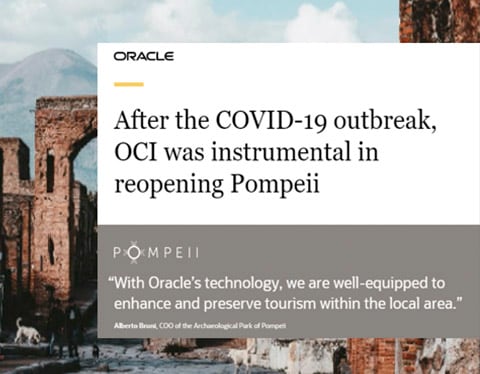
Featured OCI technical case studies

PRIO Energy is an electric energy provider. Looking to modernize its ERP system, PRIO turned to Oracle for its cloud-based automation platform. PRIO leveraged OCI Application Integration to deliver a multicloud application network solution that connected fueling stations with its ERP system. As a result, PRIO provided visibility into all transactions and offered a secure way to manage its multicloud integrations.

3i-Infotech, a Mumbai-based IT company, needed a reliable cloud partner to help bring its virtual desktop platform to market. 3i-Infotech selected OCI for its ability to provide low latency, high availability, and robust security. With its platform on OCI, 3i-Infotech’s customers can share files safely, use any device on any network, and disseminate information using secure edge devices.
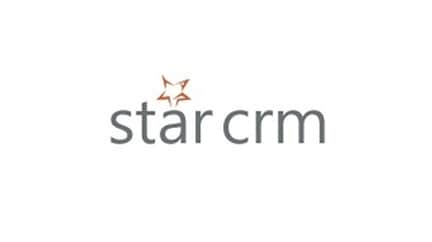
Star CRM is a Singapore-based provider of CRM software. The company previously hosted its CRM solutions on AWS, but faced challenges around database management, performance, and licensing complexity. After migrating its systems to OCI, Star CRM reports 40% productivity gains, 30% overall cost reductions, and 50% savings on licensing costs.
See OCI case studies
Technical case studies highlight the customer’s goals and the breadth and depth of their technical solution on OCI. Each technical case study features all applicable OCI products used, the customer’s cloud migration path, OCI solution architecture, and the results of their cloud transformation.
- Oracle Red Bull Racing
- The University of Melbourne
- Forth Smart
- Takamol Holding
- APL Logistics
- Integra LifeSciences
Oracle Red Bull Racing runs more than 1 billion race strategy simulations on OCI
The UK-based Formula One team needed a platform that could simulate billions of potential outcomes related to variables, such as weather conditions, pit stop times, and race crashes. During 2021, Oracle Red Bull Racing migrated their strategy systems from their preexisting infrastructure to OCI.
- Oracle Container Engine for Kubernetes
- High performance computing (HPC)
- Increased the number of simulations by 25%
- Improved the accuracy and speed of their predictions
- Accelerated simulation processing speeds by containerizing their simulation application
- Reduced overall infrastructure costs
The team’s 2022 season will further expand the use of OCI across its most significant area of operation including analytics-based race strategy and improving fan engagement.

IFFCO modernizes its IT estate with OCI, helping shape the future of agriculture in India
Indian Farmers Fertiliser Cooperative Ltd. (IFFCO) is the world’s largest manufacturer and marketer of fertilizers in the cooperative sector. IFFCO has worked with Oracle for more than two decades on their business-critical applications and databases. Most recently, IFFCO needed all of its systems, consisting of more than 100 applications, to be highly available. IFFCO partnered with Oracle to modernize their IT estate and provide maximized technological benefits to all stakeholders.
- OCI Compute
- Oracle Exadata Cloud service
- Oracle E-Business Suite (EBS)
- Custom applications on OCI
- Oracle Digital Assistant
- OCI Load Balancing
- OCI Web Application Firewall (WAF)
- OCI FastConnect
- A completed migration in 57 hours for Oracle E-Business Suite and 33 hours for custom applications
- Improved overall performance by 7X
- Better IT management
- Enhanced security
- Automated scaling for workloads during peak and off-peak seasons
As IFFCO aims to shape the future of the Indian agriculture industry, Oracle technology remains at the forefront of its roadmap.

University of Melbourne deploys Arm-based containers for fog computing
The University of Melbourne is a public research university located in Melbourne, Australia. Its researchers needed to build its open source framework on a platform that’s multicloud, widely available, and secure. After moving its FogBus2 platform onto OCI, the university’s computer science researchers throughout Australia are able to capture, analyze, and make predictions from Internet of Things (IoT) data.
- Identity and Access Management (IAM)
- Virtual cloud networks (VCNs) and subnets
- Security lists
- Virtual machines (VMs)
- OCI Bastion
- Autonomous Data Warehouse
- Oracle Machine Learning
- Increased performance and response times in applications by 20%
- Increased service startup time by 15% compared to other architectures
- Improved developer productivity due to data warehouse automation
- Improved scalability of CPU storage needed for IoT workloads
In the future, the university plans on leveraging OCI to improve the functionality of its FogBus2 platform by integrating container-orchestration techniques to automate management, along with other enhancements.

OCI and Maplesoft partnership creates digital twin virtual environment for modernized, real-time asset monitoring
Maplesoft is a leading provider of advanced modeling and calculation solutions for engineering, science, and mathematics. One of the company’s primary products is MapleSim, a flexible, multidomain platform that enables designers to create a virtual prototype. Looking to improve scalability and performance, Maplesoft saw an opportunity to work with OCI as a cloud partner to add capabilities to the simulations when applied to a fleet. By partnering with OCI, Maplesoft can extend the use of its MapleSim machine-level digital models to create digital twins that can scale up to represent a fleet of assets.
- OCI Object Storage
- OCI Streaming
- OCI Functions
- OCI Notifications
- OCI Anomaly Detection
- Ability to build a physics-based simulation of complex assets using MapleSim and to use that model during asset monitoring
- Ability to detect anomalies in real time (less than 0.2 seconds), allowing corrective action to be quickly determined with MapleSim
- Fast restoration of optimal business performance with OCI Anomaly Detection
- Improved scalability and latency for digital twin deployment
By partnering with OCI, Maplesoft is helping its customers better predict potential disruptions and optimize operational costs.

Thai conglomerate Forth Smart uses OCI, Autonomous Database, and Oracle Analytics to increase ad conversion rates by 3X
Forth Smart is a Thai service provider specializing in a wide range of financial payment services. Needing to automate manual processes, Forth Smart was looking for a cloud provider that offered IaaS, analytics, and machine learning. After evaluating other providers, the company chose Oracle Autonomous Data Warehouse, running on OCI without a database administrator. By partnering with OCI, Forth Smart was able to retrieve data in real time, reduce manual database administration, and easily create reports and data visualizations. Forth Smart leveraged the following services:
- Oracle Analytics
- Oracle GoldenGate
- Reduced the average query time from 3 hours to 2 minutes
- Improved its customer advertisement conversion rates by 3X
- Reduced its IT and database administration costs
- Gained access to real-time analytics for its more than 120,000 kiosk network
In the future, Forth Smart plans on leveraging Oracle’s more than 40 global cloud regions to move existing workloads from Ashburn to Singapore.

Takamol Holding adopts OCI and Oracle Kubernetes to boost innovation in Saudi Arabia, delivering high performance egovernment services with dynamic scalability
Takamol Holding is a Saudi Arabia-based government company that aims to serve various labor markets. Having previously used the cloud to manage and deliver workloads, the company needed to quickly find a managed provider that uses Kubernetes, while avoiding vendor lock-in. By leveraging OCI’s many managed services and features, Takamol Holding built out four core applications that streamlined the deployment of its egovernment services.
- Oracle Container Engine for Kubernetes (OKE)
- OCI Registry (OCIR)
- Network Load Balancer
- OCI Block Storage
- Oracle MySQL Database service
- Oracle Database Vault
- Improved the availability of services, reduced operations, and ensured fast disaster recovery
- Accelerated time to deploy IT infrastructure through the infrastructure-as-code (IaC) model
- Reduced the time it took to launch an egovernment service from a day to less than an hour
- Saved hours of maintenance work
In addition, Takamol has been able to meet the data residency and security requirements of the Saudi Arabian government.

APL Logistics modernizes with OCI, cutting costs and improving time to market
APL Logistics Ltd. (APLL) is a Japan-based freight forwarding and transportation company. To ensure business continuity in tandem with accelerating digitization, APLL turned to Oracle to help reinvent the user experience of a legacy online quotation application. The company was looking to automate processes, add self-service capabilities for customers and administrators, and improve overall cost effectiveness.
- Autonomous Transaction Processing (ATP)
- Oracle Cloud Infrastructure (OCI)
- Oracle Integration Cloud
- Significantly decreased time to market for its self-service quoting application
- Went from project to launch within three months
- Enabled the application team and engineers to focus more on business logic and innovation
- Secured proprietary information and boosted digital transformation efforts
In the future, APLL plans to migrate additional workloads, such as its chatbot service for shipments, payment enquiries, and incident reporting, to OCI.

Now Optics taps Oracle’s artificial intelligence services for insights that improve customer experience
Now Optics is a leading eyeglass retailer that markets in more than 20 states. With business growing, the company had accumulated a large volume of data, but had no tangible way to use that data to optimize the business and expand into new offerings. Now Optics turned to OCI to improve their customer engagement and experience. Now the company can identify the top issues that their customers feel strongly about and use that data for actionable insights.
- Oracle Artificial Intelligence (AI)
- OCI Language
- OCI Data Integration
- Automated the processing of customer feedback
- Improved business efficiency and reduced costs
- Increased customer satisfaction
- Converted unstructured textual context to structured context
Now Optics plans to further use OCI to flag various eye diseases such as glaucoma, diabetes, and cancer by only using pictures of the retina and eye.

SailGP processes 240K data points per second on OCI
SailGP is an international sailing league in which teams compete by sailing high-performance F50 catamarans around the world. With cloud technology in mind, SailGP wanted a provider that could help them better process data in real time to create better analytics and competitive advantages. SailGP’s main goal was to optimize both performance and fan experience. To achieve these goals, SailGP leveraged Oracle Cloud Infrastructure Streaming and Oracle Stream Analytics to process, analyze, and stream data during each race using sophisticated correlation patterns, data enrichment, and machine learning. SailGP enhanced their analytics with the following OCI services:
- Oracle Stream Analytics
- Oracle Autonomous Data Warehouse
- Oracle Cloud Infrastructure Object Storage
- Oracle Identity and Access Management
- Oracle Cloud Guard
- Oracle Cloud Infrastructure GoldenGate
- Analyze more than 240,000 data points collected from 800 sensors in seconds
- Transfer data from boats to Oracle Autonomous Data Warehouse at an average batch size of 20,000 messages, sent every 500 milliseconds
- Enhance the SailGP app by providing racing metrics in real time to crews and fans worldwide
- Detect anomalies and proactively manage the boat’s moving parts
In the future, SailGP plans to use OCI services such as AI and Oracle APEX to further enhance their customer experience and analytics capabilities.

CMRI uses Oracle AI to help cure children’s cancer, improves efficiency by 50%
Children’s Medical Research Institute (CMRI) is a premier Australian medical research institute and charity. With researchers collaborating across locations, CMRI knew it was time to change the way it historically managed data pipelines. The institute wanted to optimize its processes to improve performance, facilitate seamless collaboration, and get the most out of its data.
- OCI Data Science
- Reduce numerical simulation time from 30 days to 5 days
- Become 50% more efficient with resources
- Save approximately 30% in costs
- Encrypt all data and address key storage workload requirements
Due to its success with OCI, CRMI intends to use OCI Vision and OCI Data Labeling to automate workflows around bounding cells.

- Gadget Software
- Mutual Materials
Cloud native and DevSecOps at scale with Capgemini and Oracle Cloud
Capgemini has been an Oracle Platinum Partner for over two decades, helping customers with projects such as critical migrations and implementations. When a customer approached Capgemini with aging legacy systems, business change requirements, and strict deadlines enforced by a government directive (PSD2), Capgemini turned to Oracle Cloud. Capgemini delivered a rapidly developed, cloud native platform using these products:
- Oracle Identity
- Oracle API Manager
- Oracle Cloud Infrastructure Registry
- Achieved design to launch in 6 months
- Scaled its testing to 200% of expected maximum user concurrency
- Measured a response time averaging 77ms
- Delivered the PSD2 portal and PSD2 APIs on time and launched the debt register API a week ahead of schedule
The platform serves 300,000 API requests per day.

Gadget Software moves cloud native platform from AWS to OCI, increasing developer efficiency
Gadget Software offers a software-as-a-service (SaaS) platform for manufacturers to provide an optimized self-service support solution. The company's AI transforms instructions into intuitive, easy-to-follow information. With several gaps in their previous AWS environment, Gadget Software needed a cloud provider that offered speed, agility, high availability, and automation of manual processes. As a result, Gadget Software migrated their three core technologies to OCI to reduce costs, free up DevOps resources, and improve scalability.
- Oracle bare metal shapes
- OCI virtual cloud network
- Internet gateway
- NAT gateway
- OCI Logging
- OCI Auditing
- Enabled its development team to focus on high-value activities
- Automated management scripts for relational databases
- Reduced capital and operating costs
- Scaling on demand by expanding its compute as needed
With OCI’s capabilities and engineering guidance, Gadget Software is well-equipped to meet the needs of its customers.

HNI modernizes its technology stack with OCI and Flexagon
HNI is a leading manufacturer of workplace furnishings. Like other manufacturers, HNI has faced challenges such as increased demand volatility, rising supply chain costs, and customers that expect instant delivery. To better serve their customers and increase efficiency, HNI utilized an array of OCI services and FlexDeploy, a DevOps platform from Flexagon for end-to-end software development and delivery.
- Flexagon FlexDeploy
- Oracle E-Business Suite
- Oracle Integration Cloud (OIC)
- Oracle Identity and Access Management (IAM)
- Achieved a 50% reduction in development costs
- Improved project delivery time by 50%, improving its time to market
- Reduced deployment time by 60X
- Increased developer productivity by 90%
- Reduced deployment-related errors by 98% and decreased support by 2 hours a night
HNI improved agility and efficiency by using cloud technologies from Oracle and Flexagon.
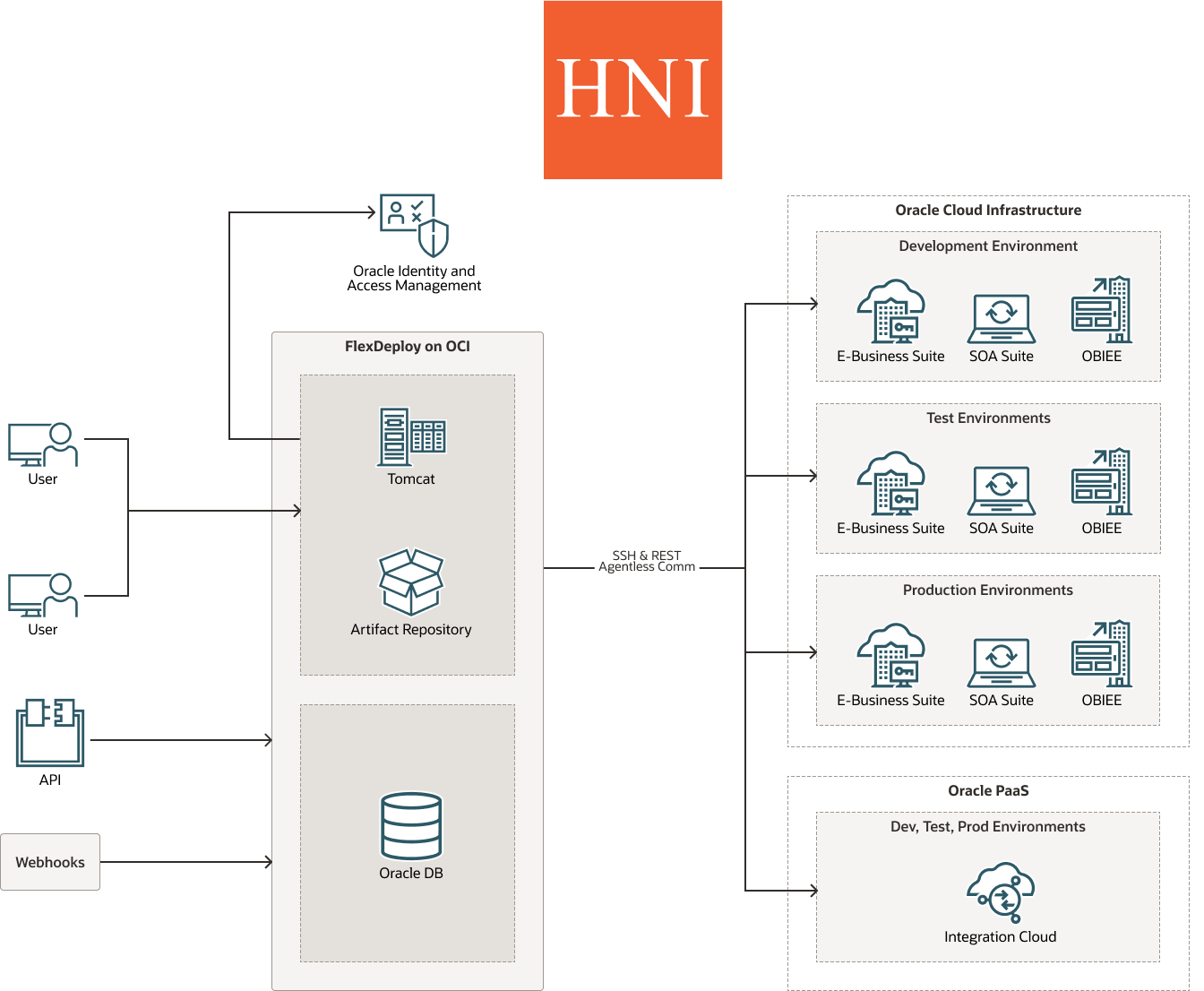
kompany delivers regulatory solutions 3X faster with OCI’s modern lakehouse
kompany enables their clients to automate and transform anti–money laundering compliance into competitive advantages. Their IT team was looking for an easy-to-use, next-generation data lakehouse to automate process flows for data ingestion from a wide range of sources quickly and efficiently. To achieve their cloud migration goals, kompany implemented a cloud native solution on OCI. Their IT team can now load any type of data from a wide range of sources, store it in their data warehouse or data lake, and leverage easy-to-use automation to transform, visualize, and analyze it using a single source of truth.
- Oracle Cloud Infrastructure Data Integration
- Oracle Analytics Cloud
- Reduced costs by 70%
- Achieved a 2X return on investment in 12 months
- Delivered new analytics 3X faster
- Automated their data pipeline without coding
Based on their success running their platform on OCI, kompany plans to triple the number of users by the end of the year and expand usage to seven other departments.
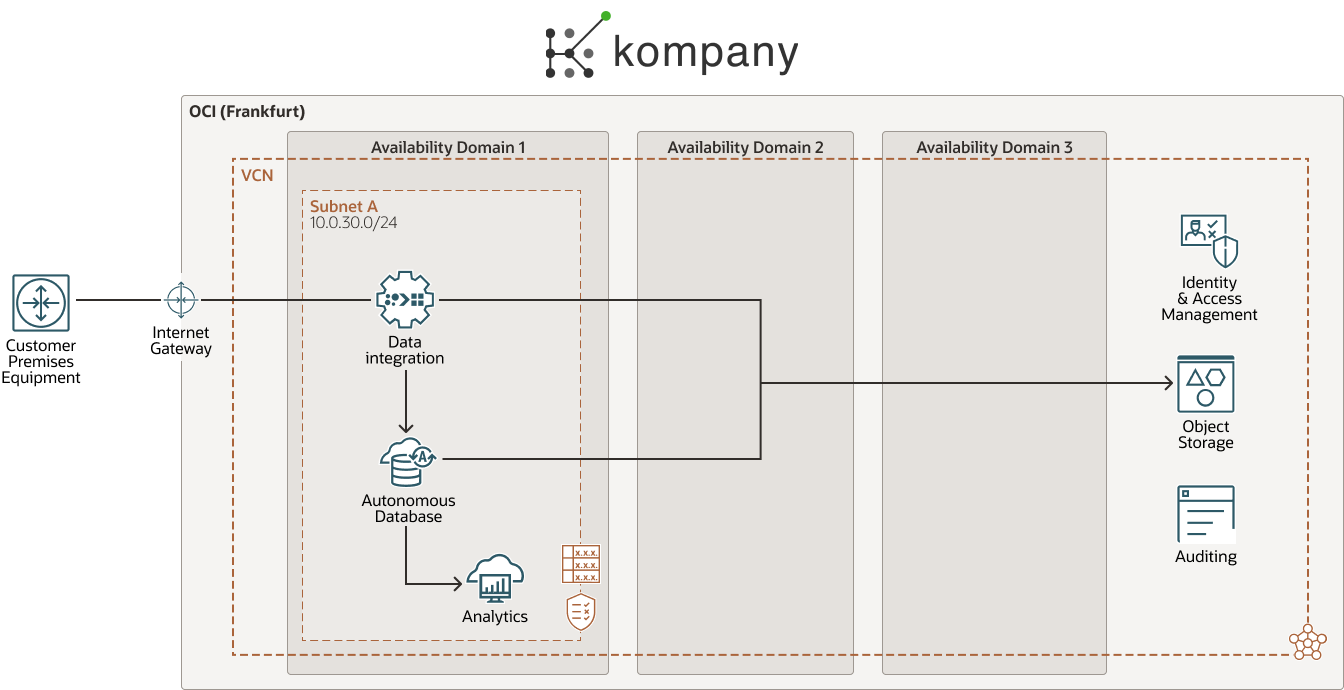
MESTEC launches robust multicloud strategy with Oracle Cloud and Microsoft Azure Interconnect
MESTEC is the world's first cloud-based SaaS manufacturing solution provider. They offer manufacturing execution system and advanced planning and scheduling software to manufacturers looking to improve efficiencies in critical aspects of the manufacturing lifecycle. The company deployed a multicloud strategy, leveraging solutions from Oracle and Microsoft. They rely on Oracle Autonomous Transaction Processing database connected to an Azure front end through the Oracle Interconnect for Microsoft Azure to deliver solutions that boost overall manufacturing processes without customization and typical up-front costs.
- Oracle Autonomous Transaction Processing
- Oracle Data Guard
- Oracle Cloud and Microsoft Azure Interconnect
- Oracle Cloud Infrastructure FastConnect
- Site-to-Site VPN
- OCI Dynamic Routing Gateway (DRG)
- Reduced labor and infrastructure costs by half compared to its on-premises environment
- Ran manufacturing workloads up to 600% faster with half as many CPUs
- Achieved a more secure and 100% compliant environment
- Implemented a diverse set of manufacturing environments quickly and reliably
- Committed higher-availability SLAs to its customers
With OCI, MESTEC optimized their manufacturing lifecycle and scaled to new infrastructure resources rapidly.
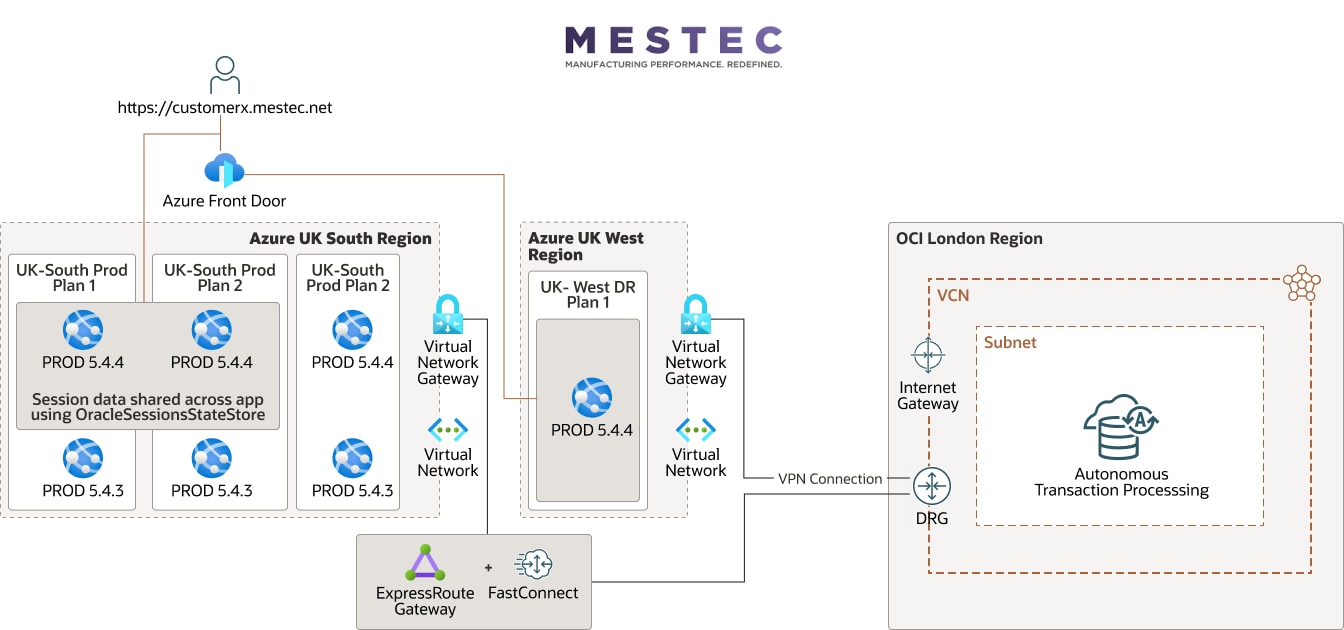
Mutual Materials uses OCI to meet a 30% increase in demand
Mutual Materials is a manufacturer of building bricks, blocks, pavers, and stone slabs. Now the largest supplier of masonry and hardscape products in the Pacific Northwest, Mutual Materials has facilities in Oregon, Washington, and British Columbia. As the demand in hardscape sales skyrocketed, the company needed a faster and more reliable way to process orders, increase production, and ship their finished products to customers. To scale their infrastructure to meet increased demand, Mutual Materials partnered with Doyensys to migrate to OCI. This partnership enabled a rapid lift and shift of legacy systems to the cloud and the implementation of a scalable IT solution.
- OCI virtual machines
- Virtual cloud networks (VCNs)
- OCI Block Volumes
- Oracle Customer Experience (CX)
- Saw an immediate 15% to 20% boost in application speed
- Increased year-over-year sales by nearly 20%
- Experienced zero downtime despite a 30% jump in orders
- Improved operational efficiencies to help drive up average order sizes
Overall, Mutual Materials saw improved productivity, reduced costs, and unconstrained scalability.
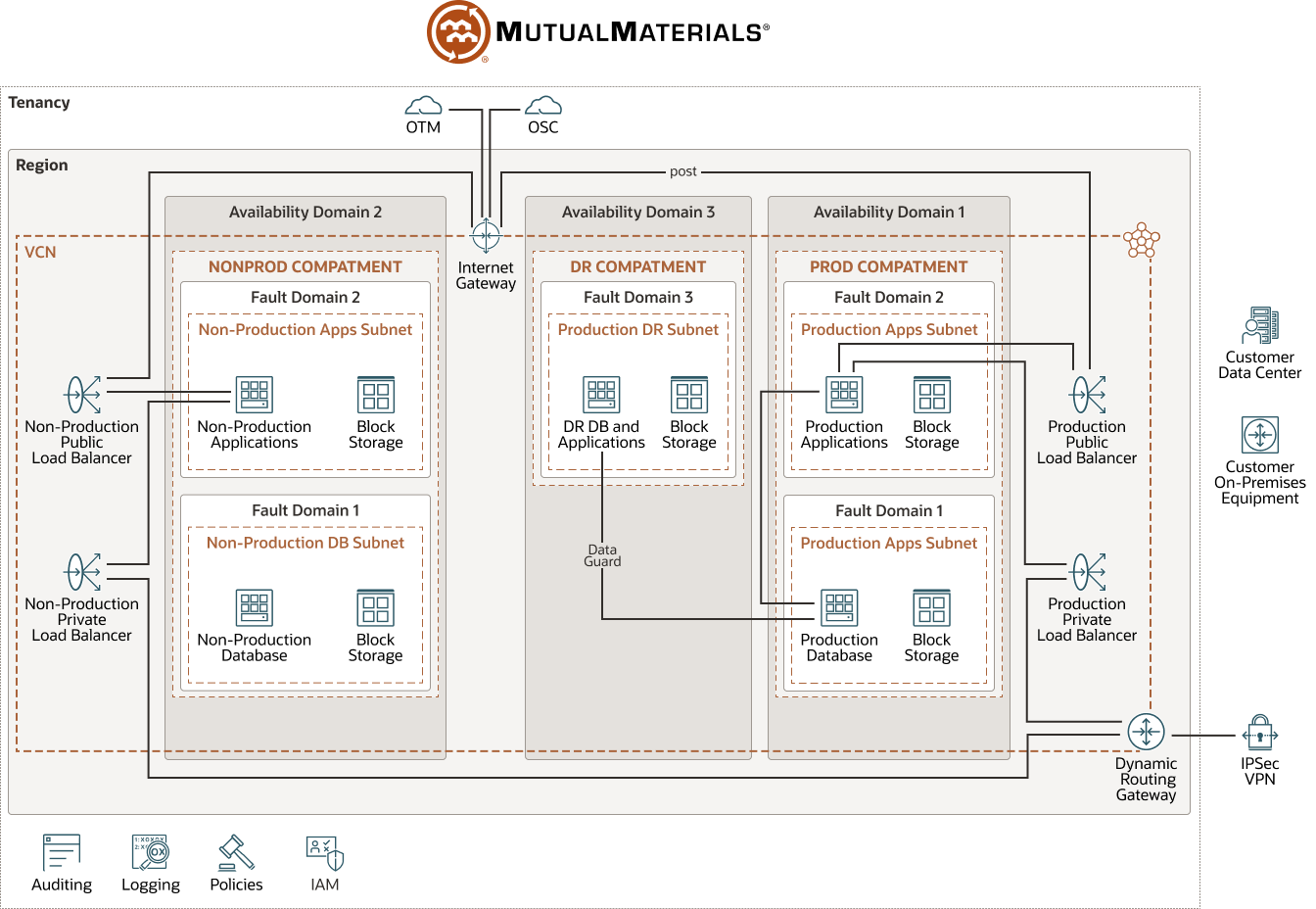
Mynet delivers exceptional mobile gaming experience with OCI, cuts costs by 80%
Mynet offers mobile game services by acquiring an existing game title, then redesigning and repackaging it to reach a broader audience. This business model enhances Mynet’s overall profitability and revenue. The company migrated to OCI for superior performance at a lower price and reduced overall costs by about 80%. As part of their multicloud strategy, Mynet also uses services from other cloud providers depending on game characteristics.
- OCI File Storage
- OCI Flexible Load Balancer
- Outbound OCI Data Transfer
- Oracle Cloud Infrastructure Email Delivery
- Oracle Cloud Functions
- OCI Internet Gateway
- About 80% reduced infrastructure cost
- Cost savings of over $1M in twelve months
- 6X improved processing time for a title—from about an hour to just 10 minutes
- Specific game titles running automatically and at scale without human intervention
- A unified view of cloud security posture across OCI tenancy
By deploying its mobile gaming experience on OCI, Mynet achieved notable improvements in overall game performance.

retraced deploys sustainability platform on OCI blockchain, improves sales by 400%
retraced is a leading sustainability management platform provider based out of Germany. The company enables their customers to ensure that they’re only using materials that have been manufactured using certifiably sustainable production methods. To build their cloud native platform, retraced wanted a technology environment that offered simplicity in operations, autonomous and managed services, and significant cost savings. After evaluating multiple cloud providers, retraced chose to run their platform on OCI.
- Oracle Blockchain Platform
- Oracle Autonomous JSON Database
- Autonomous Transaction Processing
- Oracle Cloud Infrastructure Compute
- OCI Storage
- Achieved 400% growth in sales
- Increased traffic by 750% in 2021
- Went from project start to launch in less than 12 months
With the use of blockchain on OCI, retraced has been able to track sustainability information more accurately, which in turn has helped the company build trust with current and future clients.
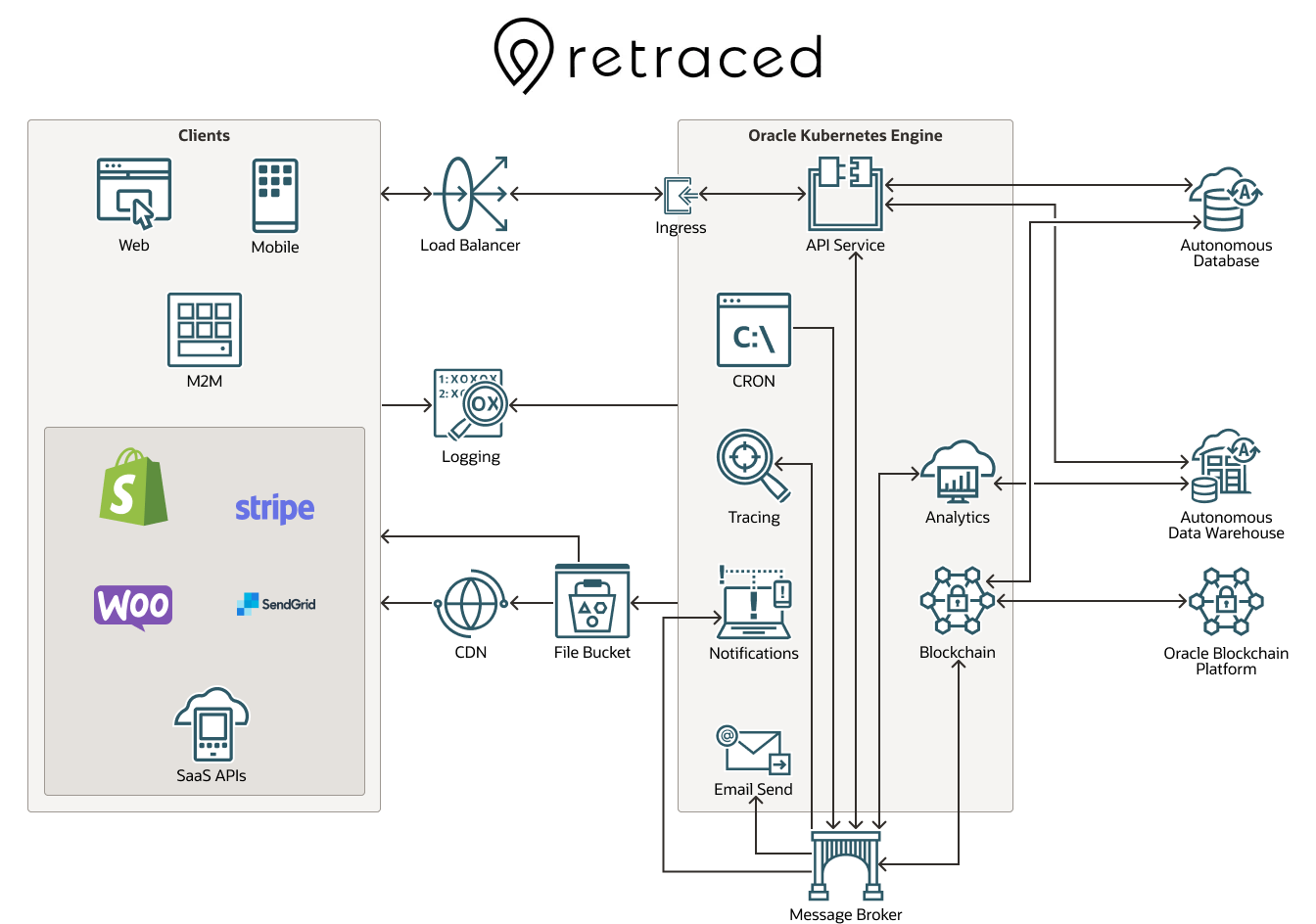
UniQreate scales intelligent data extraction product on OCI and saves 20% monthly
UniQreate is a leading data extraction automation company. UniQreate helps customers gain insights from their unstructured data by utilizing AI learning systems, intelligent workflows, and web-enabled interfaces. With their platform, UniQreate helps business users manage their data needs with the most-efficient workflows and the least-intrusive interactions. Needing stronger compute power and more block storage, UniQreate migrated to OCI for higher performance at a lower price, and reduced overall monthly costs by 20%.
- OCI Bare Metal Compute
- Oracle Virtual Cloud Network
- Oracle MySQL Database Service
- 20% monthly savings in infrastructure cost
- Easily scaled the volume and variety of different use cases with ease
- Migrated the entire setup to OCI in four days
- Provided maximum availability and uptime
- Efficiently maintained separate environments in the same region, helping maintain higher control
By migrating to OCI, UniQreate was able to achieve a cost-efficient, seamless, and robust infrastructure for its massive amounts of data extraction.
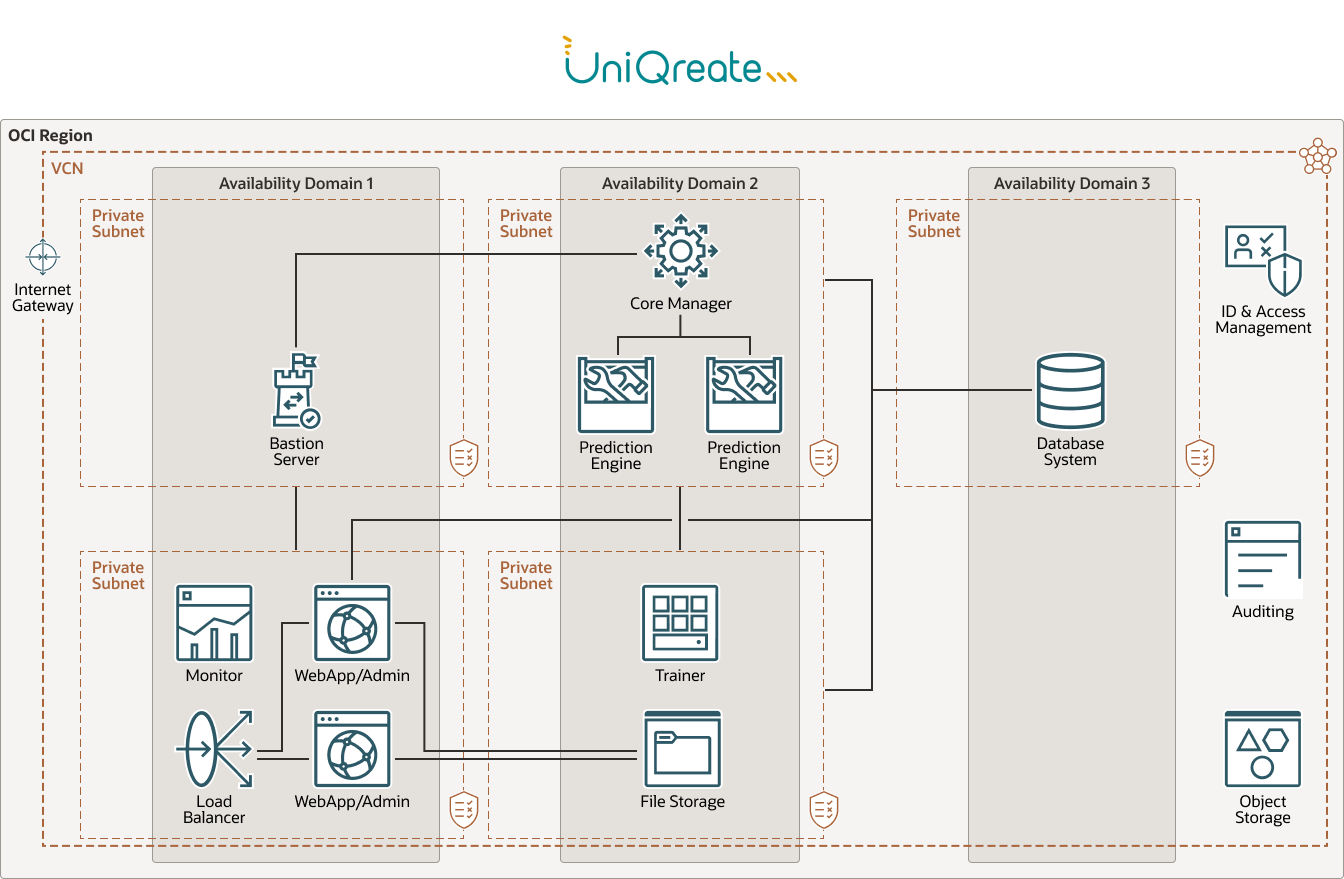
ETC achieves 300% performance improvement and increased efficiency after migrating to OCI
ETC is a leading intelligent transportation systems and smart mobility provider in the United States. ETC’s riteSuite provides a full range of tolling and mobility functions, from roadside data collection to back-end processing and payments. For their cloud migration project, the company wanted to reduce time to market, improve infrastructure provisioning, and reduce database maintenance by switching to a model that uses infrastructure as a service (IaaS).
- Exadata Cloud Service
- Block Storage
- Object Storage
- Data Transfer Appliance
- Dynamic Routing Gateway (DRG)
- Compartments
- Network Visualizer
- Replaced 90% of legacy infrastructure for ETC’s back-office clients
- Doubled performance by moving to OCI
- Reduced the time spent managing infrastructure to next to zero hours
- Achieved a 300% performance improvement
By moving to OCI, ETC has built a more cost-effective and efficient infrastructure. In the future, the company plans to use OCI’s cloud native technologies to further build out its infrastructure capabilities.
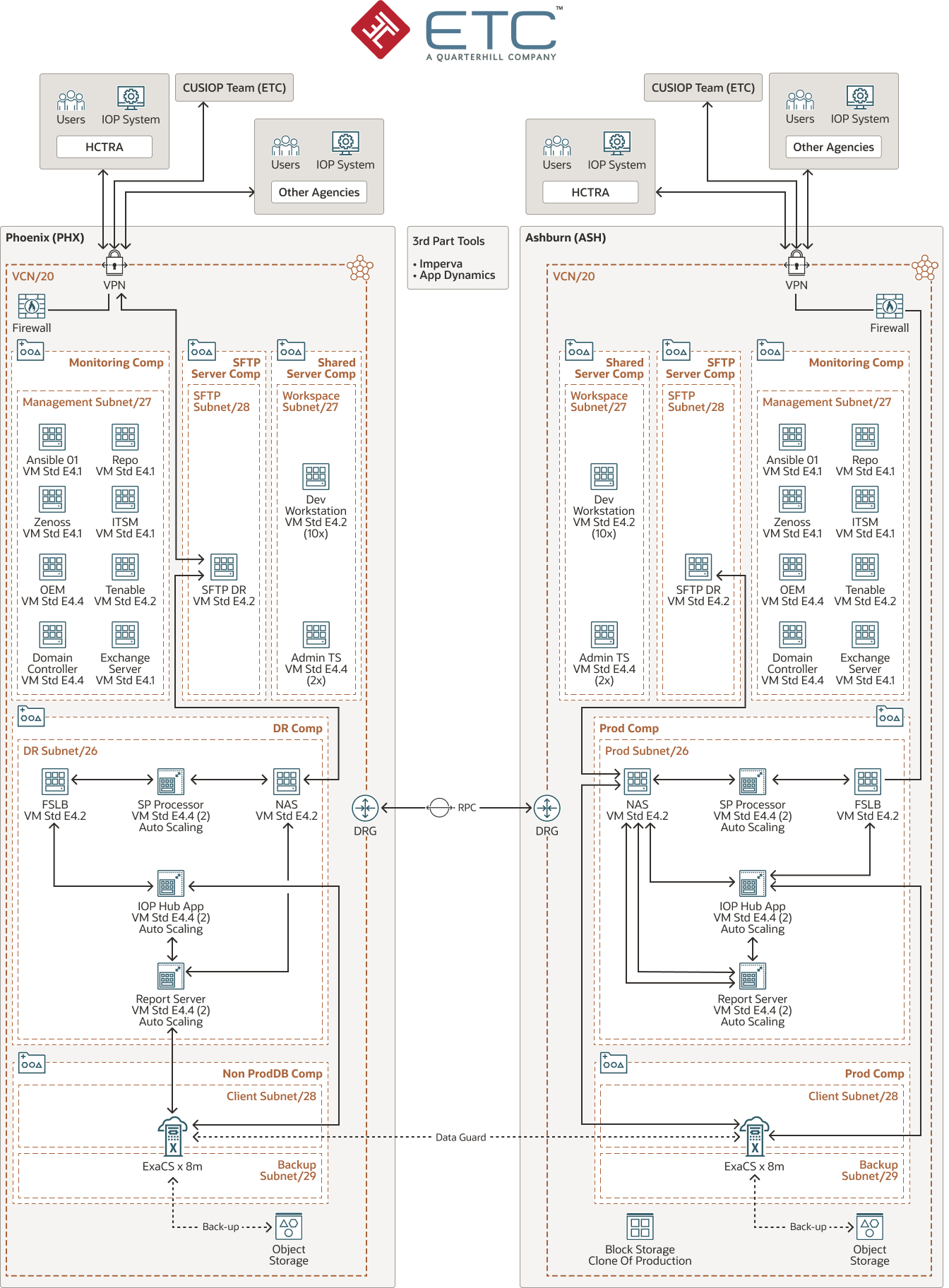
Archaeological Park of Pompeii taps OCI to reopen after COVID-19 lockdown
Following the pandemic, historical site Pompeii reopened using the MyPompeii mobile app, a solution built entirely on OCI with cloud native and API-first principles in mind. Pompeii used these OCI services, SDKs, and frameworks:
- Oracle Blockchain
- Oracle Autonomous Database
- Oracle Functions
- Container Registry (OCIR)
- Oracle Spatial Analytics
- A real-time heat map that enables information for points of interest, facilities, and social distancing
- Complete integration with online ticket sales application TicketOne, so visitors can scan a QR code on their tickets and access all the application’s content
- Visitor feedback through the application, certified through blockchain
The application has been downloaded by 20,000+ visitors in 2021.

Oracle Cloud helps accelerate COVID-19 testing in the US
In the early days of the pandemic, Oracle Consulting built a suite of public health management applications to help collect and analyze the data necessary for government health organizations and the medical community to understand the virus and its spread. Counties using the platform include Tarrant County, the third most populous county in the state of Texas. The platform not only helps Tarrant County’s testing facilities operate more effectively, but also provides valuable information to keep communities safe. These are the services used:
- Oracle APEX
- Oracle API Gateway
- Provide an online form and categorize each respondent’s risk as high, medium, or low
- Schedule appointments for people most likely to contract the coronavirus
- Allow patients to check in using a mobile app and QR code
- Allow patients to check out and provide the necessary data to testing partners
- Make the results from the testing partners available to patients
- Build customized dashboards with augmented and predictive analytics, data visualization, and intelligent insights
The platform provides Tarrant County with valuable information to keep its communities safe and COVID-19 cases down.

AgroScout improves development and DevOps with Oracle Cloud Native Services
AgroScout, a startup in the agritech sector, leveraged Oracle Cloud Native Services to migrate its application to Kubernetes and deliver an automated deployment pipeline. The AgroScout development team can easily manage its application, streamline its CI/CD platform, and achieve better performance on OCI. Facilities operate more effectively, but also provide valuable information to keep communities safe. These are the services used:
- Oracle Cloud Native Services
- Transition from a static application to a dynamic microservice-based app
- Cluster deployment time decreased from 23 hours to 2 minutes
- New version deployment reduced from 24 hours to minutes
- Enhanced ability to query thousands of images in seconds
AgroScout’s machine learning technology relies on OCI’s GPU instances proving the speed & performance that machine-learning workloads demand.

Integra LifeSciences enhances multicloud capabilities with OCI and achieves 90% time savings
Integra LifeSciences is a leading global provider of regenerative and neurosurgical devices and technologies, serving surgeons and hospitals worldwide. Between their outdated on-premises infrastructure and multiple failed migration attempts that disrupted business operations, Integra LifeSciences needed a more performant cloud provider to host their workloads, so they turned to OCI.
- Oracle Interconnect for Microsoft Azure
- Oracle Fusion Cloud Product Lifecycle Management
- Oracle Advanced Supply Chain Planning
- Oracle Cloud Observability and Management Platform
- Migrated Oracle E-Business Suite, Oracle Agile Product Lifecycle Management, and supply chain analytics and complete systems to OCI
- Improved report runtime by 87%, reducing it from an hour and 45 minutes to 13 minutes
- Reduced their general processing window from 8.5 hours to 3.5 hours
- Can now provision an environment in minutes compared to 10 to 14 days
- 90% time savings with in-memory database options
With the help of a proof-to-pilot deployment, Integra LifeSciences migrated more than 140 systems to OCI across environments for development, quality assurance, production, disaster recovery, and special projects.

- Stellar Cyber
- CWT Globelink
Waafi Bank launches their digital-only operations on OCI
Waafi Bank is a value-based bank, living up to the spirit of Waafi, which means faithful, trustworthy, and loyal. They were looking for a secure and robust infrastructure to implement their Core Banking System that would give them the flexibility to match resources to unpredictable demands without a huge capital expenditure investment. The infrastructure also had to be secure and compliant with various standards and regulatory requirements. Waafi Bank turned to OCI for the performance and operational efficiencies that they couldn’t achieve with another cloud provider.
- Oracle Data Safe
- OCI Flexible Network Load Balancer
- Oracle WebLogic Server for OCI
- Oracle Database service
- Oracle Identity Cloud Service
- Rapidly deploy resources to meet demands
- Only pay for what they consume
- Implement deliverables faster and serve customers better
- Optimize costs and boost performance
- Manage day-to-day security and compliance requirements more effectively and efficiently
As an easy-to-operate platform that minimizes downtime, OCI delivered unmatched performance for Oracle workloads with seamless integration across Waafi Bank’s stack.
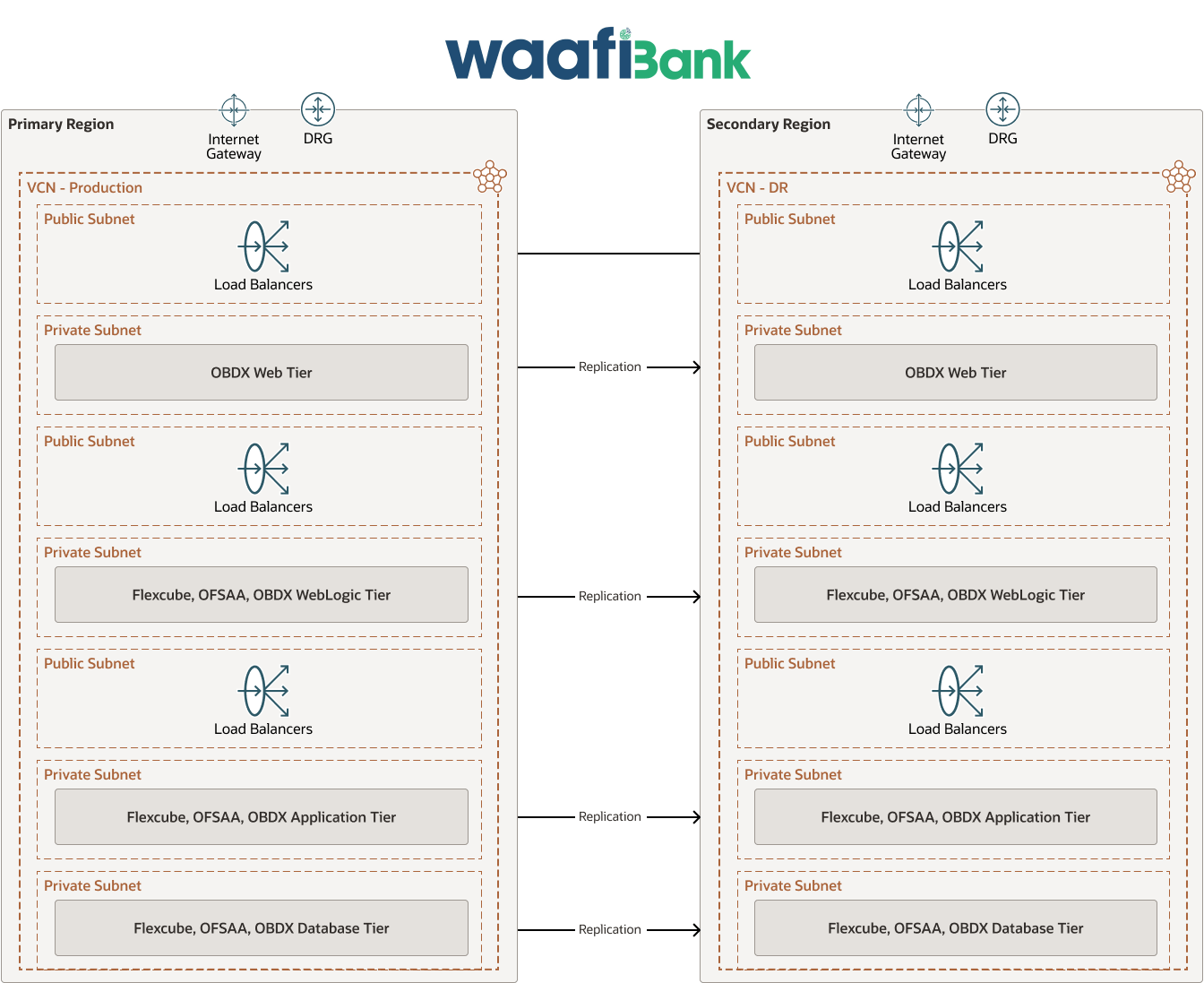
Stellar Cyber’s SaaS offering delivers a leading SecOps platform powered by OCI
Stellar Cyber provides a security operations software platform to help security teams automatically detect, investigate, and respond to cyberattacks. With Stellar Cyber, organizations quickly respond to attacks to help reduce the impact and risk to the business. To provide these services to their customers, Stellar Cyber knew they needed a trusted cloud partner to run their security platform, and their goal for migrating to OCI was to launch a high-performance, low-latency, and cost-effective SaaS offering of their Open XDR security operations platform.
- OCI Web Application Firewall
- OCI Identity and Access Management
- Scale up the cluster size without worrying about resource availability and network connectivity
- Roll out deployments in multiple regions with a uniform management experience
- Eliminate IT staff, saving them time, money, and resources
- Reduce their overall total cost of ownership and their customers’ costs
- Focus more on application logic
The Stellar Cyber platform running on OCI is a big data application using AI and ML to help identify attacks in real time.
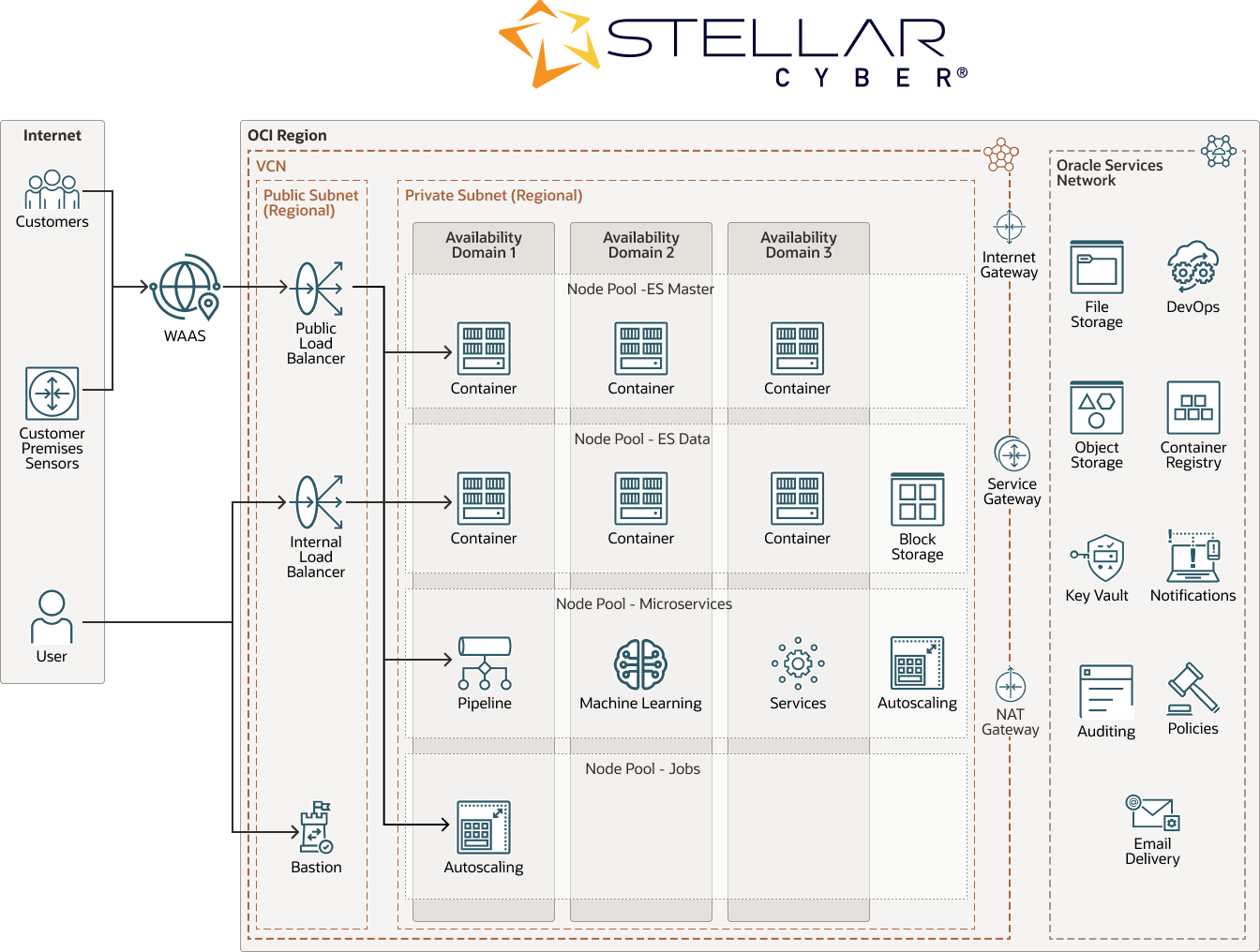
CWT Globelink transforms and delivers critical applications with OCI, APEX, and Autonomous Database
Formed in 1988, CWT Globelink is a global freight forwarder with a network of more than 100 offices in 32 countries. To keep up with their evolving products, CWT Globelink adopted a data-driven strategy with cloud technology at the forefront. Part of this strategy meant that CWT Globelink needed to build an effective, streamlined, and automated CRM application. To do so, the company needed a reliable cloud partner that could offer the technology required to build a modernized and customized client relationship management application, so they turned to OCI.
- OCI Certificates
- Improve price-performance, analytics capabilities, security, and operational efficiencies
- Cut development costs by 14%
- Reduce the cost of system updates and maintenance without any constraints on memory
- Automate previously manual processes
CWT Globelink was able to go live in only three months, and their IT team attributes the quick migration and technical implementation to Oracle’s customer service and engineering team.
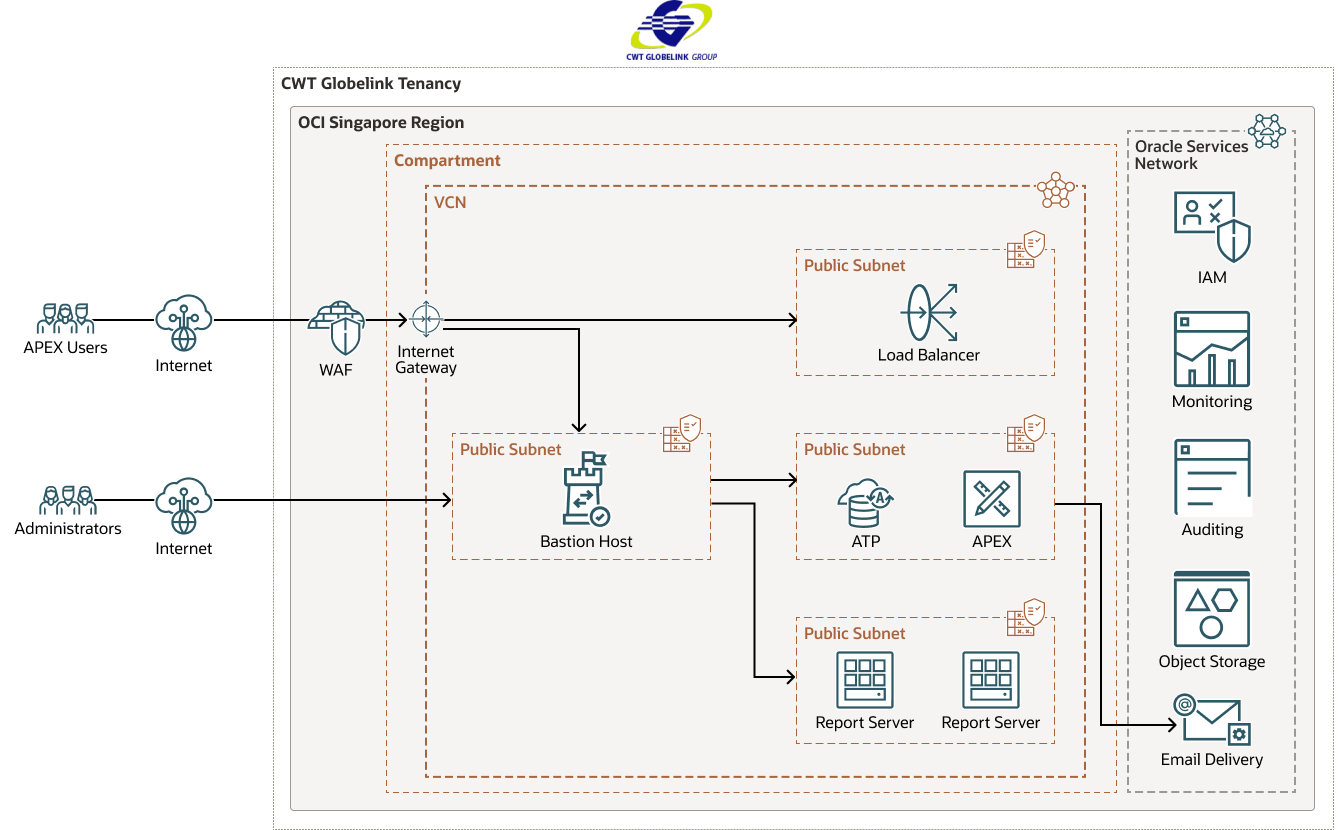
Featured customer successes
Why all clouds are not the same.
Explore how OCI can reliably support and scale the most critical cloud workloads.
Explore the cloud
Get started, connect with us.
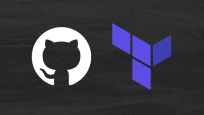
Access a collection of Terraform stacks available in GitHub. You can easily deploy your stacks on your tenancy and get your infrastructure up and running in minutes.
Built & Deployed on OCI
- Visit the OCI Architecture Center
Stay up to date with the latest deployments and updates on OCI architectures and hear how customers and partners are using OCI to drive innovation. Subscribe to the Built & Deployed series .
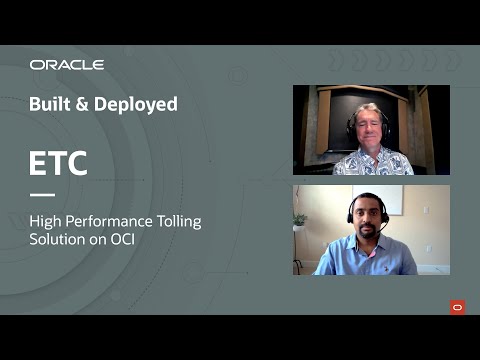
Get more details how ETC built a solution on OCI that executes, manages, and stores billions of electronic tolling transactions every year across millions of accounts.

Watch how Gadget software uses OCI to deploy their software-as-a-service (SaaS) platform, freeing their development team to focus on their core business.
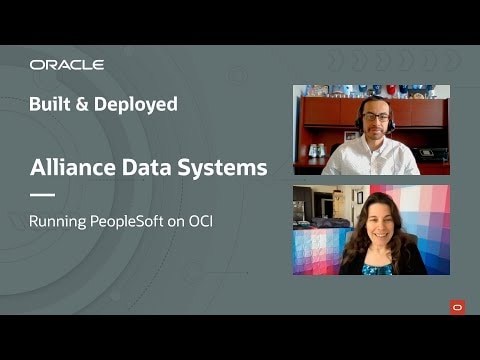
Explore how the leading global provider of loyalty and marketing services migrated PeopleSoft to OCI.

Explore how Alliance Data Systems increased efficiency and reduced costs by moving its on-premises financial applications to the cloud.
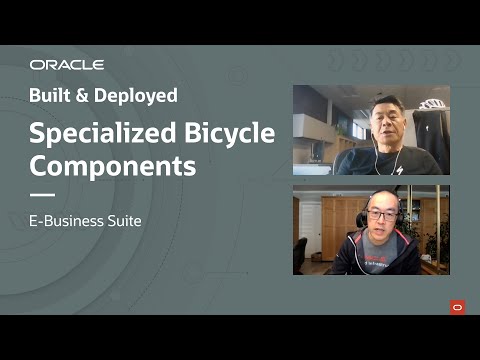
Explore how Specialized Bicycle Components, founded on the principle of performance and fueled by innovation, moved E-Business Suite to OCI.
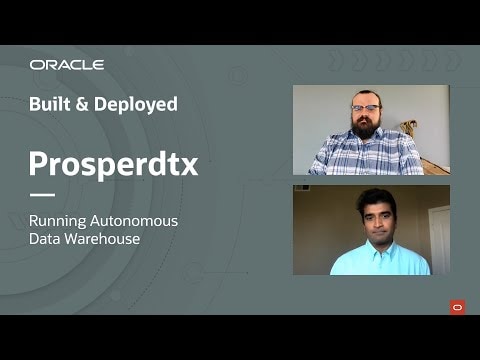
Learn how Prosperdtx CTO and his IT team use OCI to collect, curate, and analyze health care data of many different types by using Oracle Autonomous Data Warehouse (ADW).

Explore how BIAS Corporation reached out to Oracle to help guide them on a multi-region, ultra-secure, and highly available deployment to support a customer’s portfolio of mission-critical apps.

Read how BIAS used Oracle Identity cloud service with Microsoft Azure Active Directory to enable an end-to-end high-availability architecture for their authentication components.
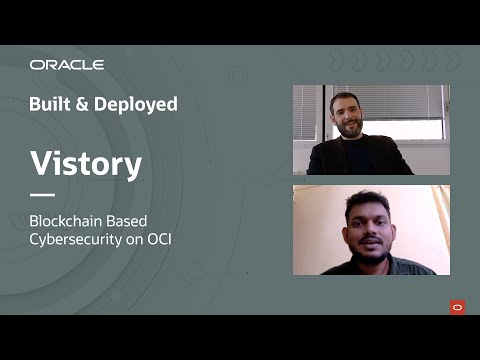
Watch how Vistory uses OCI to run its ultra-high security, blockchain-based cybersecurity service to protect against high-threat cyber-attacks.

Get more details on how Sonoco uses OCI to run its global consumer packaging and industrial products business. They chose OCI to deploy the network, its mission-critical apps, and the latest Exadata Cloud Service to help connect them to suppliers, customers, and distributors.

Explore how UniQreate uses OCI to run their “Document in, Data out” service, applying AI and machine learning (ML) to create order from unstructured data. They chose OCI to deploy their network and service behind a rapidly growing business.
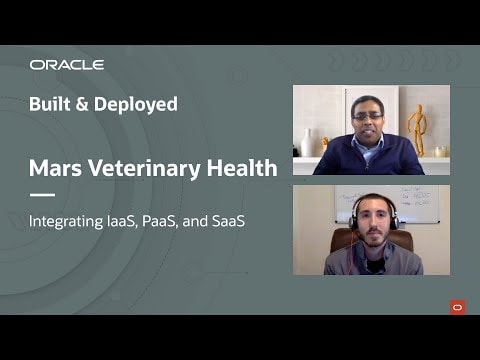
Read how the IT team at Mars Veterinary Health uses Oracle Cloud Infrastructure to run their global pet healthcare business by integrating disparate systems.
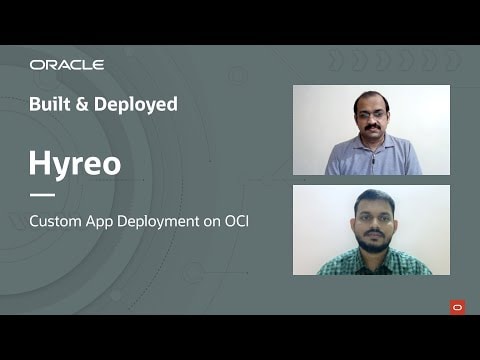
Watch how Hyreo use the Oracle Cloud Infrastructure to run its innovative candidate-centric HR platform & recruiting service while improving its economics compared to its previous on-prem & AWS deployment.

Explore how NetFoundry uses OCI to power their service, allowing their SaaS, ISV, and other clients’ customers to deploy and scale without networking or security restraints.
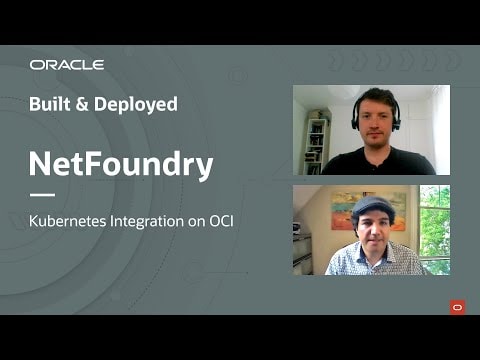
Read more about how NetFoundry leverages their Kubernetes integration on OCI—hosting any cluster services reachable inside a customer’s Kubernetes cluster, such as Kubernetes API or any pod service.
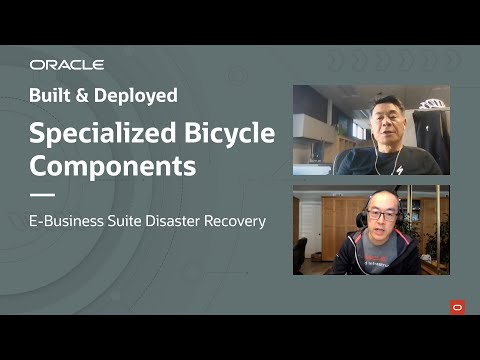
Learn how Specialized Bicycle Components leveraged OCI to deploy a multi-region DR and reporting system for its global operations.
Get started with OCI
Learn more about cloud lift services.
Get guidance from cloud engineers on how to plan, architect, prototype, and manage cloud migrations.
OCI Cloud Adoption Framework
Successfully plan and execute cloud migration.
Free training and certification
Learn how to build apps on OCI.
Already an Oracle customer? Reach out to your local sales representative to be featured in the Built & Deployed video series.
Case study: How ITIL 4 helped Wipro deliver value

Author Axelos Team
September 12, 2023 |
15 min read
1. Introduction
When discussing the business landscape from 2020 to 2021, it is impossible to ignore the challenges caused by the COVID-19 pandemic. It was a serious test of every organization’s business continuity, agility, and resilience. The pandemic exacerbated existing factors that had not been prioritized, but now had to be urgently managed.
However, some organizations were able to overcome these challenges and even increase growth during these uncertain times. This case study will explore how Wipro Limited, a leading global IT company, used ITIL® 4 to deliver greater value to the customer during the pandemic.
2. Wipro and its digital-first strategy
Wipro is a leading technology services and consulting company focused on building innovative solutions that address clients’ most complex digital transformation needs. Leveraging their holistic portfolio of capabilities in consulting, design, engineering, and operations, they help clients realize their boldest ambitions and build future-ready, sustainable businesses. With over 250,000 employees and business partners across 66 countries, Wipro delivers on the promise of helping customers, colleagues, and communities thrive in an everchanging world.
2.1 The four pillars of the digital-first approach
Wipro provides a range of services including digital strategy advisory, technology consulting, global infrastructure services, business process services, cloud, mobility and analytics services. In addition, the company offers custom application design, re-engineering and maintenance, systems integration, package implementation, research and development, and hardware and software design.
Wipro’s business strategy is about driving a digital-first approach via four pillars:
- business transformation
- modernization
- connected intelligence
Wipro’s aim is to earn client trust and maximize the value of organizations, by helping them to reinvent their operational model using the four pillars.
3. The disruption caused by COVID-19 requires agility
The World Health Organization (WHO) officially declared COVID-19 a pandemic on 11th March 2020. This led to dramatic changes to the global society and economy, which required a robust response from organizations.
It is impossible to ignore the challenges caused by the COVID-19 pandemic. Existing and underlying challenges were exacerbated, and new challenges were created. This was especially true of IT services, which directly affected Wipro and its clients.
In response, Wipro deployed a COVID-19 global crisis management task force in March 2020. The task force was chaired by the chief operating officer and consisted of several cross-functional teams, including business continuity, IT, and cybersecurity services. Most employees were asked to work from home with enhanced cybersecurity measures in place.
However, ensuring that Wipro maintained its operations continuity was not enough. The organization’s clients were also affected by the crisis, but in different ways. Wipro teams worked hard to support clients in their response to the pandemic. For example, as the COVID-19 lockdowns caused airlines to suspend flights worldwide, a large airport had to shut down international commercial air traffic while handling cargo planes containing essential supplies. In just 48 hours, Wipro enabled more than 800 airport employees to work from home with full access to business-critical applications and a suite of training resources for their remote work system.
Wipro has a strong business continuity plan framework that enabled the company to respond to the COVID-19 pandemic with agility. Approximately 90% of the workforce transitioned to home working and continued to serve clients, delivering on several time critical milestones and processes.
3.1 Using ITIL 4 to meet COVID-19 challenges
Wipro has been using ITIL guidance for years to optimize the management of its IT services. In 2019, the company started a programme to leverage ITIL 4, combining them with existing best practices.
ITIL 4 includes practice guides for incident management, change enablement, problem management, continuity management, and risk management. This enables organizations to effectively manage operations and minimize risks at all levels.
Wipro partnered with Quint Consulting Services, a global consulting and training organization, to be one of the first adopters of ITIL 4 since its launch in March 2019. The entire team of ITSM members were certified in the new ITIL 4 modules along with the MP Transition modules to bridge the knowledge from the previous ITIL V3 to ITIL 4. While most of the IT service providers were still struggling to stabilize the older ITIL V3, Wipro was already developing its new methodology on the new ITIL 4 value-based service approach.
Wipro has used ITIL 4 to meet the challenges introduced (and further exacerbated by the pandemic), including:
- Transitioning to digital Organizations across multiple industries are transitioning to digital business models. In a digital ecosystem, collaboration will become a key element of business strategies.
- New ways of working The pandemic accelerated changes to established ways of working, which required a new approach. Consequently, home/hybrid working became the norm and was enabled by collaborative technologies.
- Adaptable, agile, and resilient enterprise Wipro evaluated their technology stack to ensure that they could be flexible and agile, and work with partners who could respond and adjust quickly to changing circumstances.
- Optimization and automation The compulsory implementation of social distancing accelerated automation.
4. How Wipro uses ITIL 4 to maintain its industry position
To overcome these challenges and encourage resilience, Wipro relies on its values, culture, and people, which enable the creation and delivery of products and services to meet the current and future needs of stakeholders.
4.1 The four dimensions of ITIL 4
Organizations and people
Human capital has enabled Wipro to successfully meet its strategic objectives and the challenges described above. Therefore, Wipro must ensure that its workforce can meet the demand for digital and domain-specific expertise in the post-pandemic world, while supporting other types of capital (such as intellectual, social, and relationship) with the relevant knowledge, skills, and culture.
For example, an organization’s talent strategy depends on scaling global, diverse, local, and distributed talent. This includes scaling: those with T-shaped, pi-shaped, comb-shaped, X-shaped, or E-shaped skill sets, project managers, programme managers, process managers, product managers, scrum masters, site reliability engineers, automation engineers, multi-cloud experts, and full stack engineers. These roles should combine creativity with a business and product-centric mindset, to effectively innovate and deliver services.
Yet, what do we mean when we say that a person has a T-shaped, pi-shaped, comb-shaped, X-shaped, or E-shaped skill set? These terms are used to describe the type of skills possessed by employees, with each line in the shape representing a particular type and breadth or depth of skill. For example, a T-shaped person has a depth of specialized skill(s) or expertise in a particular area(s), represented by the vertical line in ‘T’. The horizontal line in ‘T’ represents their breadth of general knowledge in other areas, which means that their knowledge is shallower and not at an expert level but encompasses a much broader range, than that represented by the vertical line.
A X-shaped employee possesses what is known as the executive skill set. They possess a depth of expertise, represented by one diagonal line in the ‘X’, and strong leadership skills, represented by the other diagonal line in the ‘X’. An employee with an E-shaped skill set possesses four characteristics, which are expertise, experience, execution, and exploration. They possess a depth of knowledge, represented by the vertical line, and a breadth of knowledge, represented by the horizontal lines.
An E-shaped employee has skills in execution (delivering products and/or services) and exploration (continual improvement), as well as expertise and experience.
To support the workforce and talent strategy, Wipro transformed its organizational structure to develop the required competencies in its talent. This included introducing new roles, such as leaders of talent engineering and skill family:
- talent engineering leaders are responsible for the end-to-end processes of the people supply chain, including demand forecasting, workforce management, training and competency building, and coordinating hiring decisions.
- skill family leaders are responsible for developing the skills of all internal employees with training and certification.
Information and technology
Leveraging the available information and transforming to the latest technology to enable smooth operations became challenging during the pandemic. Wipro adopted technology such as migrating the user profiles to cloud and usage of auto pilot mode for enabling support staff to operate from remote, usage of VPN and secure token, usage of collaboration tools (Microsoft Teams, Cisco Webex), and use of knowledge management to enable a process-centric approach.
Suppliers and partners
Collaboration with various suppliers was needed to enable the team to work from remote locations. When the pandemic started, Wipro decided to introduce a crisis management team and ensured business critical support engines continued as part of business continuity. However, remote working became the new normal. The team was able to work from home by collaborating with various suppliers. Wipro demonstrated trust by being transparent, ensured data security and meeting all customer expectations as trusted partners.
Value stream and process
The pandemic demanded a change in operations. Adoption of remote working culture, enabling effective usage of collaboration tools and information required changes to the ways of working and processes. Wipro was quick in adopting an Agile approach, introduced daily operational huddles to monitor, review and track IPC operations. Any critical request/concerns were added into a backlog or prioritized after discussing in a daily huddle. This has provided more confidence and increased trust on the ways of working and processes.
4.2 Practice: incident management
It is not enough to have the best people and products; they must also be supported by effective and efficient operations. For example, an important aspect of the successful and secure delivery of IT services is how it is maintained, supported, and changed.
Wipro utilizes the ITIL 4 incident management practice for more than 200 clients. Wipro controls the incident management process for their clients as an end-to-end owner/executor/integrator. Over 200 priority one incidents are logged every quarter for small to large accounts. More than 250 incident managers are deployed on these accounts.
Although the objective of incident management is to quickly restore services, Wipro utilizes the restoration of services to create business value by using ITIL 4 to:
- enhance levels of customer satisfaction by improving turnaround times
- ensure effective communication between Wipro stakeholders during an incident
- ensure effective resolution during incidents and demonstrate the value of ‘One Wipro’
- ensure a consistent approach and methodology for handling incidents
- learn from previous incidents and share the knowledge across other teams/customers within Wipro.
Wipro encourages its support teams to spend more time on proactive incidents analysis, rather than only reacting to problems as they arise.
Incident data is a valuable source of quantified information about what is failing and why. Every quarter, Wipro consolidates and analyses the high priority incidents. The results are then shared with the customers to avoid similar incidents. The analysis seeks to:
- establish relationships in the data (who, what, when, where, and what)
- uncover patterns (why are things happening and what does it mean?)
- determine the best improvement opportunities
- process the information to determine top categories by volume and top categories by customer impact (downtime, number of users impacted).
Wipro has utilized the results of the analysis to make improvements, such as improving turnaround times. Consequently, Wipro has adopted certain approaches. One such approach is to quickly identify the symptoms of the incident, which are then used to discover the likely causes, resulting in a significant reduction in incident recovery time.
Yet, the data from previous incident resolutions is only useful if it can be accessed by the right people when needed. This is why basic knowledge management is so important. Wipro has found that successful incident management also requires a two-pronged approach to resolving incidents. It includes the proactive analysis of incidents and resolutions, and creating a collection of authoritative knowledge articles that describe the incident and how it can be resolved.
Wipro has found it useful to implement deadlines to resolve major incidents in a timely manner to prevent further disruptions. Moreover, Wipro has realized that when there is little progress in incident management, a change in approach and engaging further expertise can result in vast improvements.
The incident management data can also be used to identify improvement opportunities for services and find solutions to business needs. For example, Wipro has used the data to answer the following questions:
- What new or changed services could improve customer engagement?
- Where and how could new technologies or services relieve pain points for customers?
- Are there areas where additional user training could help? Can the training cost be justified by an increase in user effectiveness and less time spent with the service desk?
- What features of services cause the most questions and frustrations to customers, and what could be changed to make it less confusing and frustrating?
- How are customers using services in unexpected/creative ways that might indicate improvement opportunities?
- What workarounds are customers using to compensate for shortcomings in services?
- Where and how could a customer group benefit from leveraging what other customer groups are doing?
4.3 Practice: problem management
Wipro has implemented the problem management practice to great success, including greater customer satisfaction. For example, Wipro has adopted a centralized tracking system to help identify issues and to eliminate repeat issues at an organizational level.
Wipro has implemented the reactive, proactive, and predictive approach to problems. This has improved the effectiveness of the practice, permanently resolved certain problems, and avoided future problems.
The reactive approach
The fix for the service disruption is performed by technical expert consultants, who are not involved in the day-to-day work of that particular client. The solution must be effective to avoid repeat occurrences.
Successful solutions are documented, with a 98% to 100% document submission rate. The documents, alongside the work of technical expert consultants, has improved the level of customer satisfaction. Nevertheless, failure can also be a learning opportunity. Every year, documents from failed actions are consolidated and analysed to prevent similar failures.
As a result, there has been a 10% to 15% year-on-year reduction in service disruption despite the growth in the number of clients.
The proactive approach
Wipro decided to review its technology to reduce repeat problems. As a result, automation tools were deployed for certain clients. This led to a reduction in tickets and prevented human error and major incidents.
The use of bots also led to an annual reduction of 20% to 30% in time that employees would have otherwise spent in resolving the issue, as well as a 20% to 60% reduction of low priority incidents.
The predictive approach
Wipro analysed the configuration items to predict and prevent problems from ever arising in the first place. Various tools and prediction techniques were used, such as Densify and vROps.
4.4 Practice: change enablement
Wipro has successfully implemented the change enablement practice, previously called change management, resulting in greater customer satisfaction and an industry-leading success rate.
Effective change enablement is one of Wipro’s key priorities. Wipro implemented the change enablement practice for more than 150 of its managed services clients by acting as an end-to-end owner. This process was supported by over 200 change managers, who were deployed in accounts to manage the change process, governance, and control. More than 180,000 changes were executed within a year for cloud and infrastructure services, and over 1,900 of those changes were critical and categorized as high risk and high impact.
Wipro implemented the centralized critical change review and governance board to ensure that complex changes are planned, reviewed, and implemented with little or no impact on the customer. All changes are reviewed and approved by technology experts. This process has been in operation for five years now, leading to a higher success rate and minimizing disruptions to services.
To ensure that the change enablement is consistent and effective across Wipro, several initiatives were implemented. This includes designing a standardized change process with integrated tools at the account level. The customer was also involved in the change approval process.
Change types and the lead time were defined according to the customer business need. Wipro also implemented centralized change key performance indicators (KPIs) for all managed services clients and a postimplementation review (PIR) for unsuccessful changes. This was to avoid the recurrence of the same issues. Moreover, guidelines were established for the change review part of the technical assessment board and change advisory board (CAB) reviews. The guidelines were made available, along with other templates and example documents in a central pool, which includes a risk/impact assessment, freeze communications, change review guideline, templates, and so on.
Change managers were instrumental in implementing change enablement activities and in training staff in the new processes and continual service improvement (CSI) initiative for the process area.
The result of this work was clear; Wipro’s change enablement practice significantly exceeds the industry average as per a benchmarking assessment conducted by Pink Elephant EMEA during 2018 to 2019.
Parameter references as follows.
|
|
|
|
|
Volume of change records implemented in a month | 11,000 | 400 | 146.4 | 248 |
Percentage of emergency changes | 3.40% | 2.00% | 6.40% | 5.60% |
Percentage of successful change >= | 99.90% | 99.90% | 95.40% | 96.60% |
Changes implemented within agreed time window | 99.90% | 99.90% | 82.7% | 82.4% |
5. Benefits to customers
Strong governance and operationalization of ITSM best practices enabled customers to respond to business-critical events quickly and reduce MTTF (Mean Time to Failure) and MTTR (Mean Time to Resolve). This enabled root cause identification and elimination of repeated issues, strengthened change reviews leading to higher change success, process standardization and sharing best practices. This benefited multiple customer businesses with improved user experience, and resilience and reliability in IT infrastructure and services.
Wipro has successfully used ITIL 4 to address social, technological, and economic challenges, helping its clients transform their organizations. Wipro has transformed internally to develop and maintain a scalable, highly competent, and continually developing global workforce. The organization has successfully implemented the incident management practice, the problem management practice, and change enablement practice to deliver cost and time savings, as well as improving customer satisfaction.
7. Further reading
To explore this topic further, please see ITIL® 4 Foundation
8. Contributors
- Pratibha Ramesh, group head, Wipro FullStride Cloud, Wipro Limited
- Jigna Bhatt, head-IT service management, Wipro FullStride Cloud, Wipro Limited
- Ramanadha Kunda – delivery head, Wipro FullStride Cloud, Wipro Limited
- Yathiraja Prabhu – program manager, Wipro FullStride Cloud, Wipro Limited
- Soumya Acharya - senior project manager, Wipro FullStride Cloud, Wipro Limited
- Sunil Kumar N – global head, customer onboarding - IT service mgmt., Wipro FullStride Cloud, Wipro Limited
- Sandeep Gondhalekar, lead ITSM consultant, Quint Consulting Services Pvt. Ltd.
- Sunil Mehta, director - India, Middle East & Africa, Quint Consulting Services Pvt. Ltd.
How ITIL® 4 helped Wipro deliver value
- FINAL_Wipro_case_study_web.pdf

Del Monte Foods: A fresh approach to IT
- Call for Change
- When Tech Meets Human Ingenuity
- A Valuable Difference
- Related Capabilities
Call for change
Del Monte Foods, one of the top two businesses in a highly competitive packaged foods market, saw growth in their category slowing.
To stand out in a tightening market, keep pace with evolving customer expectations and prepare for the next phase of growth, Del Monte Foods started the journey into the future by transforming IT infrastructure and transitioning to the public cloud .
“We can now deploy resources to work on the most important things, which are developing new products for our customers.” — CHAD ANDERSON , CIO – Del Monte Foods
When tech meets human ingenuity
A fresh approach to operations.
With our help, Del Monte Foods moved 200 servers—including 50 complex SAP workloads—to Amazon Web Services (AWS) in less than four months.
From increased operational agility to streamlined business processes, Del Monte Foods’ employees now enjoy the benefits of operating in the public cloud. The ongoing standardization and automation of IT support services has reduced infrastructure-provisioning time, enabling Del Monte Foods to resolve IT issues in hours instead of weeks or months, and company leaders have more visibility into IT operations and spend than before.
We achieved a seamless transition
“Our vision was to make technology operations as efficient and scalable as possible.” — CHAD ANDERSON, CIO – Del Monte Foods
Complex workloads
In less than four months
A valuable difference
A new era of innovation.
While this transformation has had immediate operational benefits, it’s the long-term opportunities that are exciting for Del Monte Foods.
Del Monte Foods now has the flexibility to scale up its IT operations and can meet changes to demand across its yearly business cycle.
They’ve also been able to move away from making significant investments in ongoing operating expenditures. As a result, they have savings that can be put toward the company’s growth strategy.
All of these advantages are making Del Monte Foods future-ready and laying the foundation for a new era of modern growth and IT innovation.
“We can support our end users in a faster more live context, which allows us to be more innovative in our food industry.” — PJ BALSLEY, IT Director – Del Monte Foods
Related capabilities
Accenture aws business group, intelligent platform services for sap.

Transforming IT infrastructure organizations using agile
Many companies have accelerated application development by adopting agile principles and modern software-engineering best practices, such as automated testing. Yet it remains uncommon to apply these methods and tools to IT infrastructure and operations, even though doing so presents opportunities to increase productivity and the pace at which digital products and services are brought to market. The typical IT infrastructure organization continues to emphasize stability over speed. Requests for infrastructure services still often go through an assembly line-style process involving many handoffs, long delays, and frequent misunderstandings.
Stay current on your favorite topics
Traditional IT infrastructure processes made sense in the past. But now that the latest technology advances have eliminated the need for manual configuration work and consumers expect to interact with companies digitally, it has become essential for companies to modernize their IT infrastructure organizations, thereby accelerating IT deployments and shortening time to market for technology projects. Four shifts can enable IT infrastructure organizations to operate in a more agile and efficient manner. The first of these shifts involves managing infrastructure much as application developers manage code, by using software to configure environments in a swift, reliable way. The other three are organizational: forming cross-functional teams (or “squads”) of well-rounded infrastructure engineers that work using agile methods, simplifying processes for delivering infrastructure service offerings, and improving how infrastructure teams and development teams work together.
Using an agile transformation to modernize an IT infrastructure organization isn’t easy, but it is worthwhile. In our experience, agile approaches can enable IT infrastructure groups to boost their productivity by 25 to 30 percent in six to 18 months, depending on the size of the organization. The gains can increase further as automated solutions are built and fully adopted. Additional benefits often include improved infrastructure service delivery and shortened time to market for digital products and features. In this article, we explore how infrastructure organizations can modernize themselves using agile methods, starting with a glimpse of what the shift looked like at three companies. We also provide a look at the four shifts described above, along with practical recommendations for how to get the transition under way.
Three transitions to agile IT infrastructure
Three companies demonstrate how unique approaches to agile transformation, based on similar principles and tailored to their needs, can help modernize their IT infrastructure organizations while improving performance significantly. At a large provider of software and services, the infrastructure staff of several thousand people managed a global footprint capable of handling millions of active users and thousands of log-ins a second. The processes that the company had used to provide infrastructure services had grown more complex and labor intensive as the company grew, so it could take months to bring new products and features to market.
When the company’s IT infrastructure leaders modeled the effects of applying agile methods to their organization, they saw an opportunity to improve productivity by 20 to 25 percent in 12 to 18 months. Given the scale of the infrastructure group, the leadership team chose to roll out agile ways of working over that span of time iteratively, launching about 150 agile teams to bring new methods and technologies to the entire company. The leadership had teams focus first on improving the infrastructure department’s internal operations by simplifying and automating processes and then on developing self-service tools and application programming interfaces (APIs) that could be used more broadly.
A European financial-services company with a far smaller IT infrastructure organization also recognized that traditional processes for building and managing infrastructure were slowing the release of digital products and services, as well as the adoption of more efficient, sophisticated application-development practices and tools. This company too set out to introduce agile methods and to implement highly automated infrastructure service offerings within its organization. However, its approach was to roll out a new agile operating model to its entire infrastructure organization at once instead of iteratively, as the software-and-services company did. The company also chose to focus from the start on building an operating model and tools that would empower developers to manage the operations of their applications directly.
Another business—a large US-based financial-services company—also adopted an agile approach in its 250-person IT infrastructure & operations group. Like the European financial-services company, it rolled out a new agile operating model to its entire infrastructure organization at once. However, the company chose to focus initially on improving its processes. In six months, it completed a transformation that cut IT costs by more than 35 percent and doubled overall productivity. With the new operating model in place, the company now plans to focus on automating up to 80 percent of its operations work.
Principles for agile transformation
Despite the differences between their transformation approaches, these companies followed many of the same principles. In the sections below, we’ll explore those principles in four areas: technology, organization and talent, processes, and collaboration with developers (exhibit).
Technology: Defining infrastructure with software
One reason traditional infrastructure organizations operate slowly is that their technology systems require teams to configure infrastructure manually for each new application. To bring agility to the infrastructure function, companies can not only eliminate manual work by building automated systems that allow infrastructure to be defined by software but also provide “guardrails” that enable application-development teams to manage more of their own operations safely. And while it’s possible to build such systems with existing infrastructure, automation becomes easier as a company moves more of its infrastructure onto modern platforms, especially cloud platforms offering a wide array of enabling tools and technologies.
At the software-and-services company, even though the infrastructure team had standardized much of the hardware and virtualization architecture, it still spent a lot of time creating custom virtual-machine and operating-system configurations for product-development teams. Solution engineers reviewed the needs of each application with its developers and then set up the necessary environments, which often involved performing many steps manually.
Would you like to learn more about Digital McKinsey ?
As part of the company’s agile transformation, agile infrastructure teams implemented automated solutions to streamline the provisioning and configuration of servers. One agile team built and maintained a centralized platform that automated the provisioning of servers and could be accessed through self-service tools. Other agile infrastructure teams, each aligned with specific software-as-a-service (SaaS) products, automated the configuration of those servers for the products they supported, using a configuration-management tool to define the servers’ configurations entirely in code. This change reduced build times for environments from several months to about ten minutes. After these solutions were implemented, whenever a cluster of servers had to be updated or expanded, teams could make the necessary changes rapidly, with minimal manual effort and risk of error.
The European financial-services company chose to automate its IT infrastructure offerings using similar technologies. As part of a broad push to adopt DevOps principles, it also sought to empower application developers to manage their own operations as much as possible. IT infrastructure squads built automated, self-service infrastructure solutions for application developers and taught them how to use those solutions. Developers could then, for instance, produce code to tell the system how to configure or update servers given the unique requirements of their applications.
Organization and talent: Building cross-functional teams
At traditional companies, infrastructure organizations have long been structured around teams with narrowly defined responsibilities for specific technical functions (for example, managing relational databases or operating systems) or stages of the plan-build-run IT service life cycle. Neither this structure nor the specialization it promotes is conducive to efficiency or agility, because multiple teams must typically work on each service request. To become more agile, infrastructure organizations can organize their staffs into small cross-functional teams focused on providing well-defined services. They can also develop modern workforces of well-rounded engineers who can learn new skills rapidly and work across multiple functional domains to carry out the end-to-end delivery of infrastructure services, as we describe below.
CIOs and technology leaders should bear in mind that engineers in agile infrastructure organizations typically need more diverse skill sets than application developers do. For infrastructure, that makes agile transformations more challenging. The infrastructure organization at the European financial-services company found some of the well-rounded infrastructure engineers it needed by carefully screening existing employees. The most capable ones were offered roles on infrastructure squads charged with building the highly automated self-service solutions described above.
At the software-and-services company, the leaders of the infrastructure group chose to organize their staff into skill-focused “chapters” to help with capability building, professional development, and standard setting. Chapter leaders determined which new skill sets their areas needed and were asked to develop training or hiring plans to meet those needs. For working purposes, the company organized everyone from those chapters into two types of cross-functional agile squads led by product owners who defined and prioritized the backlog of activities that their squads would work on. Infrastructure squads focused on developing highly automated foundational infrastructure solutions (such as server provisioning) that other teams could use to set up, manage, and decommission infrastructure. Product squads were aligned closely with specific SaaS product-development teams and worked to engineer and automate hosting and operations for their applications, leveraging services from infrastructure squads when available.
Processes: Simplifying and integrating activities to minimize delays
The traditional IT infrastructure organization’s functionally oriented structure imposes a particular working style—specialized resources complete tasks in a prescribed order, with many handoffs between groups. This working style causes innumerable delays: every time a request is passed to a new group, it goes to the bottom of that group’s task list, where it might languish for days. Frequently, tasks are sent back to previous groups for clarification, increasing wait times even further.
Companies can eliminate many of these delays by creating small cross-functional teams as described in the previous section. Such teams can minimize or even eliminate process handoffs by managing the end-to-end delivery of specific service offerings. They should be empowered not only to deliver service offerings but also to improve their delivery by streamlining processes and engineering fully automated solutions.
The processes of the software-and-services company’s infrastructure group had become increasingly complex as the company grew and added new customer-facing products. That led to the use of project coordinators to help push service requests through the organization. After the company grouped its infrastructure engineers into agile squads, however, the waiting periods that had previously followed handoffs among functional groups vanished. That change alone halved the amount of time required to provide many core service offerings. The company’s squads also redesigned common processes to simplify workflows or eliminate unnecessary steps, such as certain approvals. The number of steps in virtual-server provisioning, for example, was cut by more than two-thirds, and the remaining steps were then largely automated through better engineering.
By contrast, the US-based financial services company mentioned earlier took a different approach to compensate for the limited development skills of its infrastructure organization. First, it set up cross-functional squads to simplify processes without automation. The resulting productivity gains bought employees enough time to learn more advanced engineering skills. Then they began planning the development of automated capabilities to address common requests.
Collaboration with application development: Fostering understanding and accountability
Traditional infrastructure organizations have minimal interaction with application-development teams. Collaboration between the two camps is normally limited to the initial setting up of systems for new applications and the resolution of critical incidents. As a result, typical infrastructure engineers know too little about each of the applications they support to help improve the stability of those applications. Moreover, developers lack the awareness of operational issues they would need to engineer robust, easy-to-support applications. Modern agile organizations, by contrast, make a point of increasing the level of collaboration between their application-development and infrastructure functions.
The European financial-service company described earlier exemplifies one collaboration style: making developers accountable for operating their applications. Involving developers in the incident-response and postoutage follow-up processes for their applications makes them more aware of issues in their application code. Involving developers in operations also encourages them to write code easy to manage and support—they can be awakened in the middle of the night if incidents occur.
The large software-and-services company demonstrates a contrasting approach. Its infrastructure organization continued to support operations for application-development teams but found a new way of doing so: closely aligning agile product squads and application-development teams. The alignment greatly increased coordination and collaboration. Many of the product squads were co-located, at least in part, with the application-development teams they partnered with. Core members of each product squad would attend some of the agile ceremonies of the application-development teams. In addition, the close alignment helped infrastructure engineers to gain familiarity with the applications they managed, so they had a stronger attachment to the success of those applications, which could now be better monitored and supported.

Bringing agile to IT infrastructure: ING Netherlands’ agile transformation
An approach to transforming infrastructure using agile.
In our experience, the challenges of modernizing IT infrastructure using agile can be overcome using a structured approach to designing, launching, monitoring, and enabling agile teams. (At larger organizations, applying that kind of approach in waves can help the transformation get under way quickly.) This can be effective as part of a broader effort to transform a company with agile methods, or as an effort that is solely focused on the IT infrastructure group. Either way, the key steps in structuring an agile transformation of an IT infrastructure function are as follows.
1. Create a vision for the new infrastructure organization, particularly how the organization should operate and how quickly it should evolve. Several key questions will help IT and business leaders to define their vision for the organization.
What infrastructure service offerings should the organization provide to application developers and business users? Establishing a catalog of infrastructure service offerings helps companies to design and define the scope of agile teams and to decide which of them should own the tasks of delivering and improving those services.
How should the infrastructure organization collaborate with application developers and how should the interaction model evolve over time? Teams that are closely aligned with application-development teams can be beneficial if the infrastructure organization has responsibilities related to operating applications (for example, deploying code).
How quickly should the organization push to engineer automated solutions and adopt cloud technologies? The structures, processes, and skills of agile teams that focus on operations can be very different from those that focus on engineering infrastructure offerings.
How will infrastructure leaders and business executives gauge the efficacy of the transformation? Going into an agile transformation of the infrastructure organization, business and IT leaders should set clear objectives for improving performance and value creation, so that they can track progress and results with well-defined measurements.
2. Segment and prioritize opportunities with respect to the potential to create value for the organization. It is important to assess demand for infrastructure by developing a data-driven understanding of past consumption patterns and projected future needs. Knowing how much work is involved in delivering specific infrastructure offerings helps with organizing the work into scopes appropriate for an agile team. If, for instance, demand for storage-related work calls for a workforce of 24 people—too many for a single team—the effort might be divided among two teams: one focused on block storage and another on file storage services.
Analyzing demand can also help with identifying the greatest opportunities for improving efficiency and with prioritizing the rollout of teams accordingly. For example, a company can realize a great deal of value in a transformation by assigning the first agile infrastructure teams to handle and improve frequently performed labor-intensive services.
3. Design each agile infrastructure team to match the focus of each team with the working methods it will use. Teams focused on developing automated infrastructure service offerings tend to be relatively small—typically with eight to 12 people. They usually find that they work best using the scrum methodology, developing solutions in two- to three-week development sprints. Teams focused mainly on operations (such as level-one support teams) might benefit from longer rosters of up to a couple of dozen people. These teams often use the kanban or scrumban methodologies, which are more appropriate for managing a continuous flow of unplanned or event-driven work.
Over the long term, it is often preferable to have the same infrastructure team own both the planned development work and the unplanned operational work for a specific offering. This approach encourages teams to identify operational issues and fix them. However, at the beginning of an agile transformation, separating out unplanned operational work can help newly established infrastructure teams to focus on engineering highly automated solutions.
4. Create a structured process for rolling out agile infrastructure teams. The process should give all the people involved enough time to prepare for the launch of their teams. Our experience shows that it is critical to provide time and guidance to train team members, develop a strong team charter, align key stakeholders, and build out an initial backlog.
At the software-and-services company, for example, before each agile squad launched, its product owner and scrum master received two days of role training on how to perform their new roles. They then completed a six-week self-organized program, facilitated by agile coaches, in which they designed their teams’ vision, scope, objectives, performance metrics, minimum viable product for improving delivery, and composition. Product owners also had to identify their key stakeholders up front and to review their plans with them and with the sponsors of the transformation so that everyone was aligned. Once the product owner and scrum master had finished these steps, the agile coach would lead the full team through a one-week “sprint zero,” when it received training on agile and built out an initial backlog of work. After the sprint zero, the agile coach attended key ceremonies during the first several sprints of the team to make sure it was stable.
5. Focus on the sustainability of the transformation. Soon after agile infrastructure teams have been launched, governance bodies (such as a committee composed of senior IT leaders) will probably be needed to ensure that the teams are advancing toward their goals, refreshing their objectives as the organization’s priorities change, and improving their use of agile practices. In addition, many infrastructure organizations quickly discover a range of opportunities to build on the agile transformation’s initial improvements. These include revising career models to support new agile roles, adopting more flexible budgeting processes, and making strategic planning more agile.
Addressing these improvement opportunities will take time, but senior IT infrastructure leaders can handle the work by using the same methods their newly launched teams do. They can organize themselves as a team, create a backlog of opportunities, determine priorities, assign owners, and carry out the work in sprints.
Legacy IT infrastructure processes common at companies that weren’t “born digital” can impede the rapid delivery of new digital products and features. Agile methods can speed up the process significantly, and the benefits often start to materialize within the first six months of an agile transformation. A modern IT infrastructure organization that collaborates closely with developers and uses automation to accelerate configuration and maintenance can greatly boost its own performance, along with that of the wider company. For incumbents facing the threat of disruption from digital challengers, this can help make the difference between success and obsolescence.
Santiago Comella-Dorda is a partner in McKinsey’s Boston office, Peter Dean is a senior expert in the San Francisco office, Vito Di Leo is an associate partner in the Zurich office, Nick McNamara is an associate partner in the Chicago office, and Pankaj Sachdeva is a partner in the Philadelphia office.
Explore a career with us
Related articles.

Beyond agile: Reorganizing IT for faster software delivery

How to create an agile organization
Advertise with us
- ARTIFICIAL INTELLIGENCE
- AUDIOVISUAL
- AUGMENTED & VIRTUAL REALITY
- BATTERY-LESS IOT SENSING
- BUSINESS INTELLIGENCE
- DATA ANALYTICS
- DATA GOVERNANCE
- DATA INTEGRATION
- DIGITAL ACCESSIBILITY
- DIGITAL TRANSFORMATION
- DIGITAL TWIN
- E-WASTE MANAGEMENT
- HIGH PERFORMANCE COMPUTING
- INSIGHT ENGINES
- INTERNET OF THINGS
- MOBILE APPLICATION
- PREDICTIVE ANALYTICS
- REMOTE TECH
- SOFTWARE TESTING
- VIRTUAL DATA ROOM
- WEB DEVELOPMENT
- CAPITAL MARKETS
- CONSTRUCTION
- CONTACT CENTER
- LAW ENFORCEMENT
- MANUFACTURING
- MEDIA & ENTERTAINMENT
- PHARMA & LIFE SCIENCES
- PUBLIC SECTOR
- TRAVEL & HOSPITALITY
- BUSINESS PROCESS MANAGEMENT
- CLOUD COST MANAGEMENT
- CLOUD COST OPTIMIZATION PLATFORM
- COLLABORATION
- CONVERSATIONAL
- CUSTOMER ENGAGEMENT
- CUSTOMER EXPERIENCE MANAGEMENT
- CUSTOMER RELATIONSHIP MANAGEMENT
- CYBER SECURITY
- DATA CENTER
- DATA PRIVACY
- DATA SECURITY
- DIGITAL ASSET MANAGEMENT
- DIGITAL EXPERIENCE
- DIGITAL MAILBOX SERVICES
- DIGITAL SIGNAGE
- DIGITAL VIDEO AUTHENTICITY
- DISASTER RECOVERY
- DOCUMENT MANAGEMENT
- ELECTRONIC DATA INTERCHANGE
- END-TO-END-ENCRYPTION
- ENTERPRISE ASSET MANAGEMENT
- ENTERPRISE CONTENT MANAGEMENT
- ENTERPRISE DATA MANAGEMENT
- ENTERPRISE DATA QUALITY MONITORING
- ENTERPRISE INFORMATION MANAGEMENT
- ENTERPRISE MOBILITY
- ENTERPRISE PERFORMANCE MANAGEMENT
- ENTERPRISE RESOURCE PLANNING
- ENTERPRISE RISK MANAGEMENT
- FACILITY MANAGEMENT
- FIELD SERVICE
- GAMIFICATION
- GEOGRAPHIC INFORMATION SYSTEM
- IDENTITY AND ACCESS MANAGEMENT
- IDENTITY GOVERNANCE AND ADMINISTRATION
- INTELLIGENT DATA CAPTURE
- IT SERVICE MANAGEMENT
- IT SERVICES
- KNOWLEDGE MANAGEMENT
- LEGACY MIGRATION AND MODERNIZATION
- LOW CODE PLATFORM
- MANAGED COMMUNICATIONS
- MANAGED IT SERVICES
- MANAGED PRINTING
- MOBILE PAYMENT
- OBSERVABILITY
- PAYMENT AND CARD
- PRESCRIPTIVE ANALYTICS
- PROCESS ORCHESTRATION
- PRODUCT LIFECYCLE MANAGEMENT
- PRODUCT MANAGEMENT
- PROFESSIONAL SERVICES AUTOMATION
- PROJECT MANAGEMENT
- QUALITY MANAGEMENT
- RISK ANALYTICS
- SCHEDULING SOFTWARE
- SMART INFRASTRUCTURE
- SUBSCRIPTION AND BILLING
- TRANSLATION SOFTWARE SOLUTION
- UNIFIED COMMUNICATIONS
- VIDEO SOLUTIONS
- CONTRACT MANAGEMENT
- DIGITAL MARKETING
- HUMAN RESOURCE
- PROCUREMENT
- SUPPLY CHAIN
- Whitepapers
- Conferences

Improve operations and lower IT infrastructure costs

How to strengthen the county’s disaster recovery strategy
Veeam Software

Focusing on the time and work management of the workforce with the real-time reports
Aryavrat Infotech

Case Study on Financial Services

How to manage documents and contents at user level

Redundant Power and Cooling
Ragingwire Data Centers

Increased business efficiency and resilience thanks to cloud-based storage of information
Pioneer Infotech

How to increase the horizontal support for cloud services
On the deck.
IT Infrastructure Services 2019
Top Vendors

IT Infrastructure Solution 2019

IT Infrastructure 2018

IT Infrastructure 2017

IT Infrastructure 2016

IT Infrastructure 2015

I agree We use cookies on this website to enhance your user experience. By clicking any link on this page you are giving your consent for us to set cookies. More info

However, if you would like to share the information in this article, you may use the link below:
https://it-infrastructure.cioreview.com/casestudy/
- Blue economy
- Capital markets
- Communications, media & technology
- Consumer goods
- Information services
- Life sciences
- Manufacturing
- Oil & gas
- Transportation & logistics
- Travel & hospitality
Discover industry-specific solutions and expertise.
Ignite peak performance and efficiency in your business.
Add gen AI to your manufacturing competitive advantage.
Accelerate growth with customer-focused solutions.
Industry blog posts
Explore insights tailored to your industry.
- Connectivity
- Product engineering
- Business process services
- Data & AI for financial services
- Digital banking
- Paycheck protection program
- Payment hub modernization
- Real-time payments
- Retail & commercial banking
- Temenos system integration services
- Blue energy
- Blue transport
- Asset management
- Client onboarding
- Data integrity & control
- Data strategy roadmap & rollout
- Fees & billing
- Front-office optimization
- Investment banking
- Market information providers
- T+1 settlement solutions
- Wealth management
- Communications
- Media & entertainment
- Apparel & footwear technology
- Consumer durables technology
- Consumer electronics
- Digital merchandising solutions
- Food & beverage
- Home & personal care
- Trade promotions management
- Cognizant security services
- Digital healthcare payer
- MLOps for healthcare
- Pharmacy benefit managers
- Virtual health solutions
- Cognizant policyholder connect
- Data & AI for insurance
- Digital life & annuity
- Digital maturity diagnostic
- Digital property & casualty operations
- Duck Creek implementation services
- Guidewire cloud solution
- Guidewire digital transformation services
- Insurance innovation as a service
- Insurance intake automation
- Insurance platform modernization
- Life & annuity
- Open claims audit
- Property & casualty
- RPA as a service
- Workers compensation care analysis
- Clinical development
- Digital health solutions
- Discovery & preclinical
- Managed markets
- Manufacturing solutions
- Medical devices
- Pharmaceuticals & biotech
- Pharmacovigilance
- Regulatory compliance
- Sales & marketing
- Shared investigator platform
- Cognizant digital after-market services
- Digital order management
- Industrial manufacturing
- Process manufacturing
- Digital workforce mobility
- Operations intelligence platform
- Cognizant customer concierge Solution
- Department stores
- Discount stores
- Grocery stores
- Omnichannel solutions
- Retail enterprise services
- Retail stores
- Retail supply chain
- Specialty retailers
- Logistics providers
- Mail & express
- Outbound logistics suite
- Cognizant adaptive spaces
- Cognizant OrderServ
- Digital restaurant order management
- Real estate & property services
- Restaurants & food services
- Travel suppliers & intermediaries
- Electricity
- UtilityOne Engage
- UtilityOne Insights
- Application services
- Cognizant Neuro
- Data & AI
- Enterprise platforms
- Internet of Things
- Quality engineering & assurance
- Software engineering
- Sustainability
Deep industry expertise to propel your business into the future.
Put AI to work and turn opportunity into value.
Accelerate time to value for industrial edge AI.
Maintain high integrity across the AI lifecycle.
- Rewire for AI
From transforming customer and employee experiences to supercharging marketing and sales, find out how you can channel the strengths of generative AI into tangible business outcomes.
- Neuro CX Automation
- AI business accelerators
- AI model training
- Business operations to scale new ideas
- Digital finance and accounting solutions
- Employee experience services
- Marketing operations
- Omnichannel customer care solutions
- Performance imperatives AI
- Trust and safety
- Cognizant Skygrade
- Microsoft business group
- Cognizant Neuro AI
- Cognizant Neuro IT operations
- Advanced AI Lab
- Artificial intelligence
- Data management
- Data modernization
- Evolutionary AI
- Generative AI
- Pandemic response
- Cloud integration brokerage
- Customer service transformation
- Salesforce data cloud navigator
- SAP services
- Supply chain management
- Future of customer experience
- Operations+
- Cyber threat defense
- Identity & access management
AI insights to inspire enterprise transformation.
Leaders must invest in people to unlock the power of AI.
Building trust in AI reveals new business opportunities.
Explore the future of business with our Gen AI insights.
AI native businesses are here
Established businesses can’t become AI natives, but they can learn from them. Discover how businesses can gain insights from AI natives to stay competitive in the evolving world of AI.
- Modern business
- Sustainability & resilience
- Tech to watch
- Future-ready cities
- Gen AI: New work, new world
- The future of us
- The future-ready business benchmark
- The metaverse
- Think like an AI-native business
- Case studies
- About Cognizant
- Annual report
- Awards & accolades
- Board of directors
- Client briefing program
- Corporate governance
- Culture & values
- Diversity & inclusion
- Intuition engineered
- Leadership team
- News & press releases
- Partnerships
- Public policy
- Sponsorships
- Sustainability & corporate citizenship
- Talent worldwide
- World economic forum
- Education Education
- Information services Information services
- Application services Application services
- Consulting Consulting
- Quality engineering & assurance Quality engineering & assurance
- Sustainability Sustainability
Cutting edge IT improves service quality

The challenge
A leading U.S.-based healthcare system encompassing several hospital campuses and a school of medicine had its clinical data housed in disparate systems. The organization wanted to create an integrated IT ecosystem that would consolidate all cross-department data. It needed a solution that could support rapid deployment of both production and non-production environments in a Microsoft Azure infrastructure-as-a-service (IaaS) setup. The organization approached Cognizant to improve its service delivery and to build a comprehensive, agile, scalable and cost-effective engineering solution.
Our approach
The client wanted to avoid any issues and errors at the point of origin in non-production environments and to achieve effectiveness through an agile development approach , for which it sought continuous integration support. Stringent compliance with security, privacy and regulatory requirements also was a critical priority.
Combining our deep domain expertise and digital infrastructure leadership, Cognizant helped the client optimize its IT infrastructure , reduce administrative overhead and enable its team to focus on other business priorities by provisioning the organization’s environment and automating the build-and-deployment process. Using a host of leading-edge Microsoft Azure-based technologies designed to accelerate engineering throughput, we deployed tools such as Azure PowerShell scripts to automate environment creation and customization tools including Chef and Jenkins to automate deployment into Azure virtual machines. We used SonarQube to implement quality assurance and optimization at the same time. To protect the virtual machines, we deployed the Nexpose vulnerability scanner.
Related case studies
- /content/cognizant-dot-com/us/en/case-studies
- cognizant:industries/healthcare
Leveraging cloud for cost savings
With automated environment provisioning on Microsoft Azure, the organization benefits from an integrated technology backbone and better control over its revenues with a highly scalable, available, secure and HIPAA-compliant environment. Leveraging Cognizant’s Healthcare Cloud Conversion Factory (HCCF), the hospital network realized 20% cost savings by eliminating the need to hire more resources—which in turn helped to reduce manual errors. Additionally, our solution helps the organization deploy build with the latest application code base in under 20 minutes, virtually eliminating lead time and accelerating time to market. Cloud-based provisioning also results in faster, more secure data transfer between on-premises and Azure data centers.
20% cost savings
by eliminating the need to hire more resources
time to deploy build with the latest application code base
Faster, more secure
data transfer between on-premises and Azure data centers
This site is protected by reCAPTCHA and the Google Privacy Policy and Terms of Service apply.
Thank you for your interest in Cognizant.
We"ll be in touch soon
We are sorry. Unable to submit your request.
Please try again or post your inquiry to inquiry@cognizant.com.
Palmer Johnson Enterprises Unifies Subsidiaries with IT Project Management Case Study
In this case study, see how Managed IT Services from Impact helped Palmer Johnson Enterprises streamline its IT infrastructure and more.
May 27, 2021
Palmer Johnson Enterprises has been in the distribution business for over 100 years. As of 2020, the company is a consolidation of three brands working together in the power and engine space.
As the new organization came together, the teams needed consistent, streamlined systems for sharing data and processes across the different subsidiaries. That’s why Palmer Johnson turned to Impact’s Managed IT department.
“The main thing we’ve had here is having that partner to engage with, because we’re able to leverage the full depth and breadth of the Impact team … [because of the fixed-fee contract], we were able to stop worrying about whether this or that wasn’t covered and address the issues at hand and hit the ground running.”
Read on to discover:
- How Impact approached this issue
- The technology solutions chosen to
- The results and how Palmer Johnson unified its IT Infrastructure and streamlined its processes
Access the Full Case Study
Unlock detailed insights and strategies from our IT project management experience by getting the full study.
How Impact United Palmer Johnson's IT Infrastructure
When Palmer Johnson Enterprises found Impact, the newly consolidated organization had a few goals: integrating the ERP, CRM, and other key systems used across the company, shifting subsidiary employees to the new service model, and establishing the new Palmer Johnson Enterprises brand, for example.
Like many organizations with a lean IT staff, the company found that managing day-to-day IT operations and implementing an extensive rollout of new systems and infrastructure was an overwhelming amount to take on. According to Palmer Johnson Enterprises IT Manager Phil Turnquist, working with Impact helped the company avoid “a decrease in morale, lost sales and poor customer service” that could have resulted from a lack of streamlined systems support.
Access the case study to learn more about the streamlining opportunities Impact’s business assessment revealed and to see the results of our partnership to date.
Then, learn more about Impact’s comprehensive Managed IT Services program to visualize what solutions may be helpful for your unique organization.
The Story Behind Palmer Johnson and Impact
- Integrating CRM, ERP and other systems across the company
- Reviewing and strengthening vendor management relationships
- Establishing the new Palmer Johnson Enterprises brand
- Shifting subsidiary employees to the new service model
Business Challenges
The decision to consolidate meant the need to unify the IT infrastructure of the offices for all of the subsidiary companies, which were located in five states, with others in Canada. The IT Manager, tasked with leading this project while managing day-to-day IT tasks, quickly realized how difficult a successful rollout would be without the help of additional IT staff, including engineers and vCIOs.
Having previously worked with a small managed service provider out of Iowa, they concluded that in order to support their expansion, they needed an MSP with more coverage capabilities. The IT Manager wanted to focus more on the integration goals, with products like Salesforce and ERP platforms used by members of the various teams needing to be connected.
To do so, they needed to manage support agreements with their vendors, balance the shift of employees to new service models and address support requirements with limited help desk services. In their search for a new MSP, the team connected with Impact for a more in-depth assessment of their IT infrastructure and their goals to support expansion.
“We needed support and standardization. If we couldn’t do that, there would be a decrease in morale, lost sales and poor customer service.”
Phil Turnquist, IT Manager at Palmer Johnson Enterprises
The Partnership
Assessment .
The consolidation presented a unique challenge for the Impact team, who, in order to do a completely thorough assessment of Palmer Johnson, assessed eight locations within five states, all within five days. IT specialists interviewed team members and found common pain points, as well as gaps that came about due to a lack of existing IT staff.
Key Findings
- Need for an onboarding plan for multiple locations, all coming in within six months
- Current MSP lacked nationwide presence and experience with scaling IT services for a growing organization
- Struggle to manage vendor relationships and support needs
- Lack of maintenance, leading to outdated and inconsistent hardware across different locations
- Lack of standardization in the acquisition process
The Solution
Impact MIT experts recommended the CompleteCare package, which gave Palmer Johnson’s IT Manager and their team access to the IT staff and support they were missing. They immediately began working together to establish standards for not only the locations currently under Palmer Johnson, but also for upcoming acquisitions for a more proactive approach. This involved going to all 13 locations across five states and two continents.
Service Package
- 24/7 support services
- Business and disaster recovery plans
- Cloud-based applications
- Access to a full team of experts, including vCIO, service desk and field network engineers
- Industry-leading hardware and software, customized by Impact
The Results
- Employee Onboarding: Impact introduced IT best practices and set up secure access controls so new employees could connect safely and quickly to Palmer Johnson’s network when entering the company.
- Vendor Relationships: Now managed by the Impact team, they ensured that business-related systems aligned with IT standards, supported Palmer Johnson’s business needs and were flexible enough to scale when the organization unified its subsidiaries.
- Hardware: New equipment was installed in each location, making the tech consistent across every location and managed locally by Impact, who could proactively monitor and remediate any issues as they came up.
- IT Best Practices: The team established cybersecurity-focused standards for both hardware and software to protect against threats and give employees at all locations rules to reduce potentially risky behaviors within the growing network.
- Maintenance: With new hardware installed at each location, the Impact MIT team now handles any ongoing updates, fixes and troubleshooting for any particular location, taking this responsibility off of Palmer Johnson’s IT Manager.
Since the establishment of the partnership, the Impact MIT team has continued to assist Palmer Johnson in scaling their IT alongside their continued growth. With three new acquisitions within the US and Canada already co
“Instead of worrying about costs and coverage, we could hit the ground running and address the issues at hand.”
Key Benefits
- Successful onboarding of employees, complete with IT standards and best practices
- Ongoing planning with Impact engineers to track progress, determine future projects and remediate issues
- Documentation and tracking for all hardware at every location
- Future plans to build out more strategic objectives and roadmaps
- IT security activities, including pen testing, reviewing systems and integrations, to ensure all locations are following the same security practices
- Dashboards with unified systems information for real-time monitoring and faster diagnostics
Discover the breadth of Impact's robust IT program through an exploration of our expansive range of solutions .
Impact Insights
Sign up for The Edge newsletter to receive our latest insights, articles, and videos delivered straight to your inbox.
More From Impact
Case Studies
Over the past 20 years, EIRE Systems has successfully completed hundreds of assignments for our clients in the Asia Pacific region. The following are some examples of those assignments completed for our local and well as multinational clients, spanning sectors including:
Banking & Insurance, Chemical & Pharmaceutical, Computer & IT, Mass Media, Manufacturing, Retail, Petrochemical, Food & Beverage, Hospitality, and Others
- Cloud Solutions
- IT Consulting & Management
- IT Security
Domain Migration using Microsoft Azure
EIRE Systems was engaged to build a secure and fully-featured environment in Azure for managing our client's user devices, including laptops and smartphones. Creation of [...]
Cloud Solutions – US Foods Industry Company
Case Study EIRE Systems has assisted many small to medium sized corporations to implement cloud solutions using both Microsoft Azure and Amazon Web Services (AWS) [...]
IT Infrastructure Project Management – Major US Software Company
Case Study Through an RFP process, EIRE Systems was awarded the IT Project Manager role by a major US software company, for the fit out [...]
Small-to-Medium Enterprise (SME) Support
Case Study EIRE Systems currently provides a one-stop-shop IT solution for over 80 small-to-medium enterprise (SME) clients across Tokyo, Hong Kong and Singapore. These clients [...]
IT Security – Global Retail Chain
Case Study EIRE Systems was selected to implement a cloud-based security solution for a global retail Chain. As part of this project, EIRE Systems provided [...]
Office Relocation – Global Investment Bank
Case Study This project was completed for a leading global investment bank serving institutional, corporate, government and high net worth clients. The project was to [...]
Managed Service – IT Support – Global Pharmaceutical Company
Case Study EIRE Systems was appointed as the deskside and infrastructure support vendor by a global pharmaceutical company with 5,000 users across Japan in over [...]
Field Support Services – Multinational Financial Information Provider
Case Study Our client is an innovator in global finance information servicing the needs of financial clients around the world. Our client based Field Support [...]
Data Center Operations Support – Large US Investment Bank
Case Study EIRE Systems is the primary provider of data center operations support to a large US investment bank with multiple data centers across the [...]
MAC Support – Large US Investment Bank
Case Study EIRE Systems was selected by a leading US investment bank with a strong Asian presence, to implement their BAU and project Moves, Adds [...]
Large Scale Data Center Build-Out – US Investment Bank
Case Study EIRE Systems was selected by a leading US investment bank with over 50,000 employees worldwide, to implement an offsite data center solution. The [...]
Business Analysis for IT – Large US Financial Institution
Case Study EIRE Systems was commissioned by a large US financial institution to conduct a regional data center analysis, with the object of formulating a [...]
Co-location Data Centre for – Global Integrated Resort Operator
Case Study This project required the construction and commissioning of a new 130 Rack Data Center on-campus in Singapore to support the surveillance infrastructure. The [...]
Business Continuity Planning – Global Insurance Company
Case Study EIRE Systems was awarded a contract to implement a BCP/DR solution for a leading international insurance company operating worldwide, offering a diverse range [...]
- About HashRoot
- CEO Message
- Global Approach
- Capabilities
- Life at HashRoot
- Sustainability Strategy
- Corporate Social Responsibility
- Empowerment of Employees
- ServerAdminz
- RapidBrains
- LearningBerg

Case Study : IT Infrastructure Management
Saved 70% costs on complete infrastructure management of a North American Data center having 14 world wide data centers and networks.
About the client
The client is a well known data center headquartered in Chicago with 14 data centers across North America and Europe. They provide Colocation, Dedicated Servers, Private Cloud, Game Servers, CDN, VPN, Virtualization and Hosting Services round the globe.
Requirements
Team Requirements
- A R&D Team for restructuring the complete infrastructure
- 24/7 Technical Support Team for handling support tickets through client CRM.
- The team should handle all server related technical issues ranging from Level 1 to Level 3 including escalations
- 24/7 Sales Support Team for handling sales, billing and abuse department
- A Software Development Team for developing, maintaining and upgrading web applications
- A Digital Marketing Team for handling SEO, Social media marketing and content writing
- A Designing Team for website development, branding and elemental design
24/7 Dedicated Team
Client want to outsource their entire infrastructure management to HashRoot. An expert team of technical and sales engineers for handling technical, sales and billing department through helpdesk with the following features
- L1, L2, L3 and Escalations
- Server Monitoring
- Unlimited Servers
- Unlimited Tickets
- 15 Min Average response time
- 3 Hours Average resolution time
- White Label Support
- Server, Cloud and Virtualization administration
- Server Setup, Migration, Hardening and Optimization
- Server Audit
- Shell/Bash Scripting
- Automation & Devops
- Dedicate phone extension
- Dedicated Skype Room
- Chat Support
Technologies & Platforms Used

Key Results
- Clients have saved upto 70% in payroll after outsourcing to HashRoot
- Client integrated all services under one company
- Client has improved work quality and response time
- Saved time and effort in interviewing and selecting appropriate candidates
- Client reduced operating cost and management fees including HR, admin, client servicing, accountancy etc.
- Client has easy access to trained pool of prescreened resources
- Client can scale up or down at short notice
- Client can take the team onsite for short periods
- Zero Risks : Whether 5 or 500 employees, HashRoot fund the entire startup phase including the recruitment process
Download Casestudy
Complete Infrastructure Management of a Data center
Let's discuss your project
Subscribe our newsletter to stay updated!
Need Support or Consultation?
By calling this number, you consent to receive calls from, or on behalf of, HashRoot per our Terms of Use and Privacy Policy .
Welcome back
To join via sso please click on the key button below, case studies and insights.
- Save for later
- Share on Facebook
- Share on Twitter
- Share on Linkedin
- Share by email

Case studies and insights Tech Trends 2020
Read insights from thought leaders and success stories from leading organizations. Get inspired by new ideas on ways to apply emerging technologies to reach business ambitions.
Acknowledgments
Senior contributors, macro technology forces.
Andries van Dijk Director Deloitte Consulting B.V.
Hans van Grieken Independent adviser Deloitte MCS Limited
Nicholas Reed Senior manager Deloitte MCS Limited
Ethical technology and trust
Dan Frank Principal Deloitte & Touche LLP
Kirsty Hosea Partner Deloitte Touche Tohmatsu
Dalibor Petrovic Partner Deloitte LLP
Yang Chu Senior manager Deloitte & Touche LLP
Anand Ananthapadmanabhan Manager Deloitte & Touche LLP
Anu Widyalankara Manager Deloitte MCS Limited
Finance and the future of IT
Tony Caink Director Deloitte MCS Limited
Jacques de Villiers Managing director Deloitte Consulting LLP
Richard Walker Principal Deloitte Consulting LLP
Stephan Kahl Senior manager Deloitte Consulting GmbH
Kelly Gaertner Manager Deloitte Consulting LLP
Digital twins: Bridging the physical and digital
Saul Caganoff Principal Deloitte Services Pty Ltd
Chandra Kiran Reddy Narra Managing director Deloitte Consulting LLP
Tim Paridaens Director Deloitte Belgium CVBA
Sandeep Sharma Managing director Deloitte Consulting LLP
Andreas Staffen Director Deloitte
Jimmy Asher Senior manager Deloitte Consulting LLP
Rick Burke Specialist leader Deloitte Consulting LLP
Eduardo Pereira Master lead specialist Deloitte & Associados, SROC S.A.
Markus Stulle Senior manager Deloitte
Oleg Tyschenko Senior manager Deloitte MCS Limited
Piotr Kurek Manager 3 Deloitte Advisory sp. z o.o. sp. k.
Paulo Mauricio Manager Deloitte & Associados, SROC S.A.
Vikram Tuli Senior consultant Deloitte MCS Limited
Dan Lu Consultant Deloitte MCS Limited
Hermann Tsang Consultant Deloitte MCS Limited
Human experience platforms
Scott Mager Principal Deloitte Consulting LLP
Steve Rayment Partner Deloitte Touche Tohmatsu
Robbie Robertson Partner Deloitte Touche Tohmatsu
Tânia Conceição Manager Deloitte & Associados, SROC S.A.
Architecture awakens
David Sisk Managing director Deloitte Consulting LLP
Dan Spar Managing director Deloitte Consulting LLP
Vishveshwara Vasa Managing director Deloitte Consulting LLP
Peter Long Director Deloitte MCS Limited
João Faria Senior manager Deloitte & Associados, SROC S.A.
Debi Kar Specialist leader Deloitte Consulting LLP
Thiago Sartorio Senior manager Deloitte MCS Limited
Lori Olson Specialist leader Deloitte Consulting LLP
Laks Venkateswaran Specialist master Deloitte Consulting LLP
Maciej Żwirski Specialist lead Deloitte Advisory sp. z o.o. sp. k.
Horizon next: A future look at the trends
Sonal Naik Managing director Deloitte Consulting LLP
Cover image by: Vasava
Topics in this article
Today, business and technology are inextricably linked. And keeping pace with the emerging technology landscape can be difficult for even the most tech-savvy leaders. Deloitte can help. Our technology professionals have deep experience applying technologies to help you achieve your business goals.

- Scott Buchholz
- Emerging Technology research director and Government & Public Services chief technology officer
- Deloitte Consulting LLP
- [email protected]
Related content

Digital twins
Explore the collection.
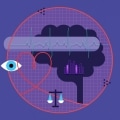
Share article highlights
See something interesting? Simply select text and choose how to share it:
| Email a customized link that shows your highlighted text. | |
| Copy a customized link that shows your highlighted text. | |
| Copy your highlighted text. |
Case studies and insights has been saved
Case studies and insights has been removed
An Article Titled Case studies and insights already exists in Saved items
To stay logged in, change your functional cookie settings.
Social login not available on Microsoft Edge browser at this time.
Connect Accounts
Connect your social accounts
This is the first time you have logged in with a social network.
You have previously logged in with a different account. to link your accounts, please re-authenticate., log in with an existing social network:, to connect with your existing account, please enter your password:, log in with an existing site account:.

IT Infrastructure Projects: A Framework for Analysis
The framework laid out here provides background to enhance understanding of the types of infrastructure projects, present capabilities, analyze benefits and risks, develop a cost model, and, by comparing alternatives, develop the value proposition for infrastructure projects for presentation to decision makers.

Jerry Grochow, Senior Advisor to NET+, Internet2; and Consultant, IT strategy in higher education
This article represents a condensed version of the July 2014 ECAR Research Bulletin by the same name. —Editor
Just as maintaining a healthy infrastructure of water delivery and roads is essential to the functioning of cities and towns, maintaining a healthy infrastructure of information technology is essential to the functioning of universities. Deterioration in IT infrastructure can lead to deterioration in research, teaching, and administration. While this is self-evident to IT professionals, it may not be as obvious to senior administrators who more commonly deal with other types of university infrastructure. Given the importance of information technology to all functions of the university, IT professionals must be strong advocates for appropriate life-cycle processes for IT infrastructure.
One responsibility of IT leaders is to provide executive staff with appropriate background, analysis, and recommendations about IT infrastructure, focusing on the impact that inappropriately maintained or out-of-date IT infrastructure may have on the academic, research, and administrative functions of the institution. This article develops a framework to assess the need for IT infrastructure projects; analyze the issues and risks in implementing and maintaining IT infrastructure; and engage other university officials in better understanding the impact of IT infrastructure projects.
Outline of the Approach
The basic approach (see figure 1) is to show how to value a project by looking at the capabilities to be implemented or updated, the benefits to different parts of the university community, the risks entailed in undertaking the project (or not undertaking it), and the costs (including ongoing maintenance and operational costs) — all based on a fundamental understanding of the different types of infrastructure projects and their purposes.
For existing infrastructure, begin by making a determination of its status (or "health") before determining what type of project is necessary. The type of project — initial implementation (for new infrastructure), maintenance, reimplementation, or technology migration — dictates the factors to be considered in the analysis. After capabilities are studied, the bulk of the analytical effort is spent in assessing benefits, risks, and costs. Finally, a Value Scorecard brings together the analysis and compares the project under consideration with alternatives, including maintaining the status quo.
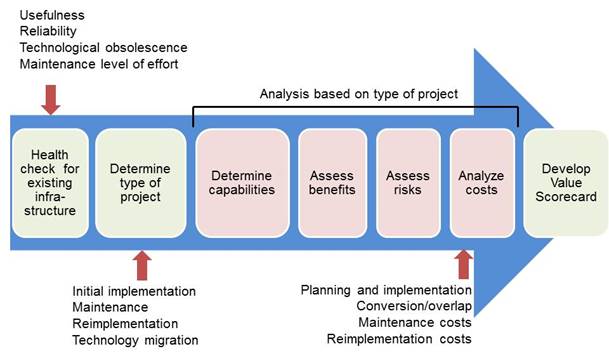
Figure 1. Approach to infrastructure project justification
Definitions
The term infrastructure (or "below the structure") is widely used for public works such as water and electric delivery systems, roads, and bridges and, even more generally, to refer to any systems that support society or an organization. IT infrastructure is the stuff on which we build and operate IT applications . Note that while people are specifically excluded from this definition, the costs of people to implement and maintain infrastructure are included in analyzing IT infrastructure projects.
Two related terms deserve mention. Critical infrastructure refers to those infrastructure assets critical to the functioning of society. While this traditionally has referred to infrastructure dealing with necessities such as the water supply, electricity, transportation, and food supply, the federal government now includes information technology in critical infrastructure, both in terms of the organizations that supply IT and the organizations that use IT. 1
Cyberinfrastructure has at least two popular definitions. First used in the academic community in an NSF-sponsored report over a decade ago, the term highlights the importance of information technology to the future research environment. The report defined cyberinfrastructure as a "layer of enabling hardware, algorithms, software, communications, institutions, and personnel" between hardware and the applications. 2 In the more recent National Infrastructure Protection Plan , cyberinfrastructure is defined for a more general audience: "Cyber infrastructure includes electronic information and communication systems, and the information contained in these systems." 3 Note that the first definition includes institutions and people, while the second includes data and information.
Analyzing Types of Infrastructure Projects
Infrastructure projects are not just about developing new infrastructure. They are also about maintaining current infrastructure, deciding when to replace infrastructure, and even about moving to the cloud. For example, when wireless networks were starting to be installed almost a decade ago, this was seen as totally new infrastructure, and it was not clear whether they would replace or augment wired networks. Universities that installed wireless networks then had to maintain them, fixing anything that broke and upgrading network wiring and routers that connected those access points. These maintenance projects were sometimes very large infrastructure projects in themselves. This life cycle of build-maintain-upgrade-replace-reimplement results in the different types of infrastructure projects. The factors to be analyzed for each type of project are similar, but different types of projects require different levels of justification, with each type addressing capabilities, benefits, risks, and costs in its own way (see table 1).
Table 1. Analysis factors for different types of infrastructure projects
| Project Type | ||||
|---|---|---|---|---|
| Initial Implementation | Maintenance and Upgrade | Reimplementation | Technology Migration | |
| Capabilities | Basic capabilities | Additional capabilities | New design | Old capabilities vs. new capabilities |
| Benefits | To different constituencies | Use of anecdotes | Reliability and performance improvements | Capability, reliability, and performance improvements |
| Risks | New technology acceptance | Impact of upcoming technology shift | Impact on related infrastructure and systems | New technology acceptance |
| Costs | Maintaining prior infrastructure | Cost changes with maintenance frequency Maintenance costs vs. replacement costs | Impact on related infrastructure and systems | Phased cost model Migration costs |
Initial Implementation Projects
When approaching completely new infrastructure, most IT organizations focus on the capabilities the project will bring to campus. In the wireless network example, the core capability was to provide Internet access throughout the campus without having to connect to a wall outlet. This capability provides different benefits to different constituencies: students can use their laptops anywhere; staff can access systems and the Internet as they hold meetings across campus; researchers can work wherever they gather; office layouts do not have to be driven by where network outlets are available; and so forth.
In addition to those immediate benefits, IT staff often raised the possibility of an additional benefit: that wireless networks would reduce or even eliminate the need for most wired networks, thus lowering the cost of that infrastructure. Because wires had to reach all those wireless access points, however, the wired network would still need to go everywhere wireless went (although not necessarily to each desktop). Moreover, dozens of new wireless devices would keep demanding more and more bandwidth, and the wired network would need to keep up. Another factor to consider was the relative newness of wireless technology, and the likely need to replace the entire infrastructure in 3–4 years.
This is common in IT — install a new infrastructure and end up maintaining the old one for a long time, or install a new technology and discover that a new version supersedes it in short order. So while you can expect various benefits from new infrastructure, there is always a risk that those benefits will not be realized. A thorough risk analysis will look at the impact of expected benefits not being realized, as well as other potential risks, including cost overruns and impact on other systems or departments. Meeting with staff from multiple departments is one way to help avoid surprises and demonstrate to decision makers that risks have been studied broadly.
With a completely new infrastructure, benefits and risks will have to be described without much data to draw upon. This means the analysis will be highly qualitative and anecdotal, although some factors might be quantifiable. 4 Subjective assessments may come from anecdotes or interviews or surveys, or experiences at other campuses. For example, in a 2012 ECAR study on research computing, participants agreed (anecdotally) that "having research computing resources makes an institution more competitive in recruiting and retaining faculty with research computing needs." 5
In addition to capabilities, benefits, and risks, the other important part of the analysis is the cost model. This will include the costs for the initial project, as well as expected operational costs for several years (typically 3–5) and any major expected upgrades or replacements if they occur within that time. Costs should be determined for planning, design, and implementation. If it is possible to put a time frame on when the technology will become obsolete (or at least obsolescent), then costs can also be estimated for replacement or major upgrade and can be included in the overall cost model as well.
Ongoing maintenance costs should be considered, including hardware, software, other equipment, construction, and personnel. Personnel costs (both contractors and employees) are often a significant figure and should include full- and part-time people involved in the project, both from IT and any other departments involved, such as the construction department.
Maintenance and Upgrade Projects
Analysis of maintenance projects includes the same basic factors as new infrastructure projects: capabilities, benefits, risks, and costs. Maintenance projects run the gamut of simple software upgrades to complex efforts that might involve retesting entire networks, systems, or databases. One of the facts of life is that there is never enough money to maintain or upgrade all infrastructure to the highest and most productive level, requiring organizations to establish priorities. This, in turn, requires understanding the benefits of maintaining and the risks of not maintaining IT infrastructure. For example, the failure to maintain networks means that fewer people will have high-speed access to online research facilities and that, as a result, fewer multi-institutional research projects will take place. In one instance, a physics professor asked the CIO at his institution for a written commitment that the university would increase bandwidth to keep pace with other institutions in the physics research community because he wanted to submit that document with a grant application! Without this commitment, he felt that he was unlikely to win the grant.
Before going forward with a particular maintenance project, an institution must consider several key questions:
- How often should the maintenance be performed?
- When should replacement be considered instead of maintenance?
- Is there a new or emerging technology on the horizon that might change the approach to maintenance?
The answers to these questions can help an organization decide what and how much maintenance is appropriate, which provides the basis for a cost model for infrastructure maintenance.
Reimplementation Projects
There comes a time in the life cycle of any software, hardware, or network system when it is appropriate to start over. Technology refresh cycles in the IT infrastructure realm can be as short as 2–3 years or as long as 5–7 years. 6 Moreover, whereas some network routers, for example, have a useful life in the upper end of that range, newer equipment may have 10 to 100 times the capability for the same or lower price. When maintenance costs start to equal replacement cost, and the capability/cost ratio declines significantly, it is time to reimplement, taking into account the ongoing maintenance costs of new infrastructure, which may be higher or lower than current maintenance costs. However, replacement is rarely as simple as a "forklift upgrade." The related impact on facilities, networks, and other systems has to be taken into account. If current computer hardware requires power of 5kW per rack but new hardware requires 10 or 20kW, the cost of upgrading electrical and cooling equipment can equal or exceed the cost of replacing the computer hardware. Replacing software infrastructure such as the database system could impact hundreds of applications, perhaps requiring replacing these systems as well. The implications of reimplementing infrastructure can be far reaching, and all those reaches must be part of the analysis.
Technology Migration Projects
Sometimes a reimplementation project is based on technology so dramatically different that the infrastructure project is essentially a new implementation — except that the old infrastructure has to be migrated to the new. When universities started to shift from "plain old telephone service" (POTS) to IP-based telephony or from on-premises servers to cloud-based servers, the migration of services from one infrastructure to another was a major factor in the reimplementation. In this type of situation, the cost analysis has to show the overlap of both services, as well as costs attributable to the migration effort (see figure 2).
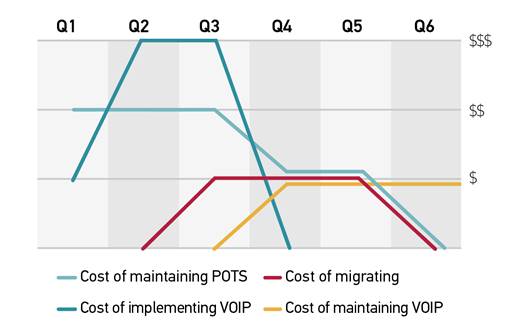
Figure 2. Example of technology migration project cost model
Assessing Existing Infrastructure via a Health Check
One of the questions in justifying infrastructure maintenance or replacements is, Why do this now? While a leaking roof is a sure sign of the need for building maintenance (although not necessarily for roof replacement), the need for maintenance on other types of infrastructure may not be so obvious. The building trades and other engineering professions have established many types of metrics and standards to guide such decisions. IT hasn't achieved that level of standardization, but we can develop an approach to assessing infrastructure systems by measuring their usefulness, reliability, and technological obsolescence.
Ratings can be established in various ways, ranging from subjective opinions of people knowledgeable about the system to detailed technical analyses performed by outside consultants. Once individual measures have been assessed, the infrastructure system or component can be given an overall rating or "health check score" depending on the decisions to be made:
- Maintenance level of effort: an indication of the level of effort (low, medium, high) needed to bring the infrastructure up to some established level of performance
- Maintenance time frame: when significant maintenance will likely be necessary
- Useful life time frame: when the infrastructure is likely to fall below the acceptable threshold for usefulness, reliability, or technological obsolescence
In preparing for an annual budget review, one university IT department performed a health check on its infrastructure systems, using subjective ratings from multiple staff members. After collecting data on four criteria (meeting known needs, outage frequency, how up-to-date the technology was, and cost to maintain it), the department applied its knowledge of the technology environment and expectations of user needs to rate each infrastructure component on whether it would require significant maintenance or upgrade over specified time frames: 1–2 years, 3–5 years, or greater than 5 years (see table 2). According to the university's CIO, "This made a powerful presentation going into the governance committees, particularly when we could show some systems past end of life or using completely outdated technology." The health check was updated for subsequent annual budget reviews.
Table 2. Example health check rating of infrastructure systems
| Infrastructure System | Meets Need (Usability) | Outage Frequency (Reliability) | Up-to-Date Architecture (Tech Obsolescence) | Cost to Maintain | Health Check Rating |
|---|---|---|---|---|---|
| Service management system | 1 | 3 | 2 | 2 | 2.0 |
| Enterprise storage | 2 | 2 | 3 | 3 | 2.5 |
| Web server | 3 | 3 | 3 | 1 | 2.5 |
| Wireless network | 4 | 3 | 2 | 3 | 3.0 |
| Database | 3 | 3 | 3 | 5 | 3.5 |
| Identity and access management | 4 | 4 | 4 | 4 | 4.0 |
| Wired network | 4 | 5 | 4 | 4 | 4.3 |
| Printing management system | 5 | 5 | 4 | 4 | 4.5 |
| Emergency response system | 5 | 5 | 5 | 4 | 4.8 |
|
|
|
|
|
|
|
|
|
|
|
|
Justifying Infrastructure Projects
Justifying an infrastructure project means presenting the value proposition. Although cost reduction is often the justification for infrastructure investments, other goals are also involved, such as improved capability or risk reduction. Infrastructure projects will compete with all the other demands on the IT budget, however, and sometimes suffer in comparisons because benefits and risks are thought to be difficult to explain or quantify. A value analysis can be helpful in this regard and need not be costly or difficult to develop.
Return on Investment, as a Scorecard
Consider the value proposition for adding a redundant switch in your campus network. Having this redundancy will reduce the likelihood of an outage, but by how much, and how likely is an outage without the redundant switch? What is the cost of an outage? In other words, how do you calculate the value of this infrastructure project? In practice, many risks and benefits can only be translated into financial terms by making gross assumptions on financial value that would be nearly impossible to verify. That said, in some situations a financial return-on-investment (ROI) analysis is useful, and those instances shouldn't be ignored. For example, maintenance or reimplementation projects are often cost-savings projects, in which case ROI may be the only justification needed. ROI might only rarely be a key decision metric, but when it is, it is an important part of the analyst's toolkit.
So how do you create the value proposition for infrastructure where a single financial ROI is not readily calculable? Create an ROI scorecard using all that you know about the project. Some benefits and costs can be presented in quantifiable terms and some not, but all should enter into the decision-making process. Describe who benefits — specific groups of faculty, students, or staff. ROI is all the different types of returns — positive and negative, financial and nonfinancial — that accrue from implementing a project. If ROI is presented as a scorecard rather than a single number, then all types of benefits and costs can be presented.
Finally, it is important to know your audience. Who are the decision makers who will evaluate your analysis? What measures will resonate with them? If it is faculty, then the most important aspects might be how the infrastructure will aid their ability to do research, obtain research grants, or better teach students. If your audience is the CFO, then an argument with at least some discussion of financial return will be useful.
Justification via Comparison
An infrastructure project under review must be compared to other projects. Alternatives likely also exist, such as procuring equipment from different vendors or moving to the cloud. The option of doing nothing also has benefits, risks, and costs and should be evaluated with other alternatives. This evaluation should compare all the factors discussed, from general capabilities to benefits to risks and costs. Table 3, while not exhaustive, lists many of the criteria that can be used in such a comparison.
Table 3. Analysis and comparison matrix template
| Framework | Criteria | Alternative 1 | Alternative 2 | Status Quo |
|---|---|---|---|---|
| General | Primary purpose of the infrastructure |
|
|
|
| Type of infrastructure |
|
|
| |
| Specific capabilities |
|
|
| |
| Value/Benefits | Primary beneficiaries; how they benefit |
|
|
|
| Ancillary beneficiaries; how they benefit |
|
|
| |
| Reduction of complexity or dependencies |
|
|
| |
| Impact on research |
|
|
| |
| Impact on teaching and learning |
|
|
| |
| Impact on administration |
|
|
| |
|
| Benefits not achieved |
|
|
|
| Reputation risk |
|
|
| |
| Compliance (legal) risk |
|
|
| |
| Schedule slippage (time risk) |
|
|
| |
| Cost overruns |
|
|
| |
| Unintended consequences |
|
|
| |
| Increased complexity or dependencies |
|
|
| |
| Cost Analysis | One-time costs of planning and implementation: external, including external personnel (range of cost) |
|
|
|
| One-time costs of planning and implementation: internal, including internal personnel, amortization, nonbudgeted costs (range of cost) |
|
|
| |
| Cost of conversion/overlap: external (range of cost) |
|
|
| |
| Cost of conversion/overlap: internal (range of cost) |
|
|
| |
| Annual (ongoing) costs: external, including external personnel (range of cost) |
|
|
| |
| Annual (ongoing) costs: internal, including internal personnel, amortization, nonbudgeted costs (range of cost) |
|
|
| |
| User costs (range of cost) |
|
|
| |
| User savings (range of cost) |
|
|
|
IT leaders often opine that it is difficult to make a case for spending money on infrastructure systems, certainly much more difficult than making a case for spending money on application systems. The value proposition for infrastructure spending is undoubtedly complex, involving both financial and nonfinancial factors. This framework helps analyze and present that value proposition, thus helping IT practitioners justify the need for individual infrastructure projects. It provides background to enhance understanding of the various types of infrastructure projects, present capabilities, analyze benefits and risks, develop a cost model, and, by comparing alternatives, develop the value proposition for presentation to decision makers. With this presentation, decision makers will be in a better position to appreciate the value of IT infrastructure and approve necessary projects.
Where to Learn More
Bellman, Richard. " Equipment Replacement Policy ." Journal of the Society for Industrial and Applied Mathematics , no. 3 (1955): 133–136.
Devaraj, Sarv, and Rajiv Kohli. The IT Payoff: Measuring the Business Value of Information Technology Investments . Upper Saddle River, NJ: Financial Times-Prentice Hall Press, 2002.
Lane, Cara, Janice Fournier, and Tom Lewis. Scientific Advances and Information Technology: Meeting Researchers' Needs in a New Era of Discovery . Case study. Boulder, CO: ECAR, 2010.
Ribes, David, and Thomas Finholt. "The Long Now of Technology Infrastructure: Articulating Tensions in Development." Journal of the Association for Information Systems 10, no. 5 (May 2009): 374–398.
Westerman, George, and Richard Hunter. IT Risk: Turning Business Treats into Competitive Advantage . Boston: Harvard Business School Press, 2007.
- Department of Homeland Security, National Infrastructure Protection Plan: Partnering to Enhance Protection and Resiliency , 2009.
- NSF, Revolutionizing Science and Engineering Through Cyberinfrastructure: Report of the National Science Foundation Blue-Ribbon Advisory Panel on Cyberinfrastructure [http://www.nsf.gov/cise/sci/reports/atkins.pdf], 2003.
- DHS, National Infrastructure Protection Plan .
- There are many examples of project teams spending much time developing quantifiable measures for just about everything, even when that analysis is of dubious quality or does not have any actionable value. Sometimes, qualitative analysis provides more than enough information to allow actions to be taken. For example, rather than trying to calculate "lost productivity" of a network outage to help justify some number of duplicate routers, it might be equally useful to note that having your university on the front page of a local or national newspaper for having a prolonged network outage is a reputational risk the president and trustees might not want to take very often. Different options for mitigating this risk can then be compared by analyzing costs and other factors.
- Jacqueline Bichsel, Research Computing: The Enabling Role of Information Technology , research report (Louisville, CO: ECAR, 2012).
- Replacement cycles for application systems are often longer, sometimes much longer. It is not unusual to hear of accounting systems still in use after 20 years or more.
© 2015 EDUCAUSE. This EDUCAUSE Review article is licensed under the Creative Commons Attribution-NonCommercial-NoDerivs 4.0 license .

Vehicle solutions manufacturer transforms global IT infrastructure
Our client is a Fortune 500 leader in the worldwide manufacturing of power and energy solutions for vehicles. It currently employs more than 36,000 people globally and generates $8+ billion in annual sales revenue.
THE CHALLENGE
International growth leads to scalability hurdles.
When the client approached UST, they were experiencing significant international growth that had resulted in scalability challenges. As they rapidly expanded their global footprint, their internal teams and Network Operating Center (NOC) needed enhancements to enable more streamlined operations and efficient network monitoring, particularly for remote locations.
Specifically, the client was in need of a global partner that could support 24/7 remote network monitoring and a risk mitigation strategy for knowledge and process retention during employee turnover.
THE TRANSFORMATION
Streamlined systems management and enhanced process standards.
UST partnered with the client through a managed services model that made it possible to significantly enhance their NOC’s operating agility and team scalability.
First, UST worked to address the biggest existing pain point: network infrastructure monitoring. UST built new processes around network monitoring to better coordinate with support partners and reduce network downtime. These new processes, together with UST’s global network, enabled the client to scale up the international support system for their NOC and resolve issues occurring outside the United States with equal efficiency and effectiveness.
Additionally, UST was able to implement proven best practices around knowledge and talent retention to reduce new employee on-boarding time, create smoother transitions, and scale up the team more effectively.
Stronger and better-supported global IT operations
The client’s partnership with UST has enabled them to increase their global infrastructure footprint by 100% while also managing their NOC network with streamlined teams, processes, and IT operations.
As a result, backup compliance reached 98%, a 17% increase from previous assessments. Job abends decreased by 96% and threats and vulnerabilities saw a 60% reduction. Server patchings that once took 200+ hours can now be completed quickly and efficiently in a single batch.
Most importantly, leaders at the client organization can now confidently focus on more strategic initiatives and core business functions.
EXPERTISE & RESOURCES
Discover our resources.
Learn more about the expertise and resources that helped us achieve success on this project.
Business Strategy Implementation Solutions & Services | UST
Scaled Business Operation Services and Solutions - UST
ADB is committed to achieving a prosperous, inclusive, resilient, and sustainable Asia and the Pacific, while sustaining its efforts to eradicate extreme poverty.
Established in 1966, it is owned by 68 members—49 from the region..

- Annual Reports
- Policies and Strategies
ORGANIZATION
- Board of Governors
- Board of Directors
- Departments and Country Offices
ACCOUNTABILITY
- Access to Information
- Accountability Mechanism
- ADB and Civil Society
- Anticorruption and Integrity
- Development Effectiveness
- Independent Evaluation
- Administrative Tribunal
- Ethics and Conduct
- Ombudsperson
Strategy 2030
Annual meetings, adb supports projects in developing member countries that create economic and development impact, delivered through both public and private sector operations, advisory services, and knowledge support..

ABOUT ADB PROJECTS
- Projects & Tenders
- Project Results and Case Studies
PRODUCTS AND SERVICES
- Public Sector Financing
- Private Sector Financing
- Financing Partnerships
- Funds and Resources
- Economic Forecasts
- Publications and Documents
- Data and Statistics
- Asia Pacific Tax Hub
- Development Asia
- ADB Data Library
- Agriculture and Food Security
- Climate Change
- Digital Technology
- Environment
- Finance Sector
- Fragility and Vulnerability
- Gender Equality
- Markets Development and Public-Private Partnerships
- Regional Cooperation
- Social Development
- Sustainable Development Goals
- Urban Development
REGIONAL OFFICES
- European Representative Office
- Japanese Representative Office | 日本語
- North America Representative Office
LIAISON OFFICES
- Pacific Liaison and Coordination Office
- Pacific Subregional Office
- Singapore Office
SUBREGIONAL PROGRAMS
- Brunei, Indonesia, Malaysia, Philippines East ASEAN Growth Area (BIMP-EAGA)
- Central Asia Regional Economic Cooperation (CAREC) Program
- Greater Mekong Subregion (GMS) Program
- Indonesia, Malaysia, Thailand Growth Triangle (IMT-GT)
- South Asia Subregional Economic Cooperation (SASEC)
With employees from more than 60 countries, ADB is a place of real diversity.
Work with us to find fulfillment in sharing your knowledge and skills, and be a part of our vision in achieving a prosperous, inclusive, resilient, and sustainable asia and the pacific., careers and scholarships.
- What We Look For
- Career Opportunities
- Young Professionals Program
- Visiting Fellow Program
- Internship Program
- Scholarship Program
FOR INVESTORS
- Investor Relations | 日本語
- ADB Green and Blue Bonds
- ADB Theme Bonds
INFORMATION ON WORKING WITH ADB FOR...
- Consultants
- Contractors and Suppliers
- Governments
- Executing and Implementing Agencies
- Development Institutions
- Private Sector Partners
- Civil Society/Non-government Organizations
PROCUREMENT AND OUTREACH
- Operational Procurement
- Institutional Procurement
- Business Opportunities Outreach
Ideas for Developing Asia and the Pacific
Principles of infrastructure: case studies and best practices, share this page.

Infrastructure is a priority around the world for all stakeholders.
Infrastructure projects can continue for several years, from planning and construction to the provision of services. As development in Asia and the Pacific accelerates, governments must invest more in infrastructure to ensure continued economic growth.
This book draws on lessons and case studies from Japan and worldwide, covering broad and long-term infrastructure projects. It describes the principles of developing quality infrastructure and focuses on the various steps of a project—from design, planning, and construction to operation and management. It also discusses overseas development assistance, taking examples from Asian Development Bank and World Bank projects. This book is an important reference tool for policy makers in Asia who are planning and implementing large-scale public infrastructure.
- Introduction by Hideo Nakamura
- Chapter 1: Various Infrastructure Systems and Their Development by Hideo Nakamura
- Chapter 2: Principles for Infrastructure Development by Hideo Nakamura
- Chapter 3: Infrastructure Commercialization and Business Entity by Kotaro Nagasawa
- Chapter 4: Infrastructure Planning and Decision Making by Atsushi Hasegawa
- Chapter 5: Development of Infrastructure by Atsushi Hasegawa
- Chapter 6: Operation and Maintenance of Infrastructure by Kotaro Nagasawa and Kazuaki Hiraishi
- Chapter 7: International Cooperation for Developing Infrastructure Projects by Kazuaki Hiraishi
- Afterword by Chul Ju Kim, KE Seetha Ram, and Kai Xu
Additional Details
| Editors | |
| Type | |
| Subjects | |
| Countries | |
| ISBN |
- Policy Maker E-Training Course: Applying Principles of Quality Infrastructure Development in Asia
- Podcast: Rethinking engineer training is vital to meeting Asian infrastructure demand
- Publication: Financing Infrastructure in Asia and the Pacific: Capturing Impacts and New Sources
- Publications: Infrastructure for Asian Connectivity
- Publication: Infrastructure for a Seamless Asia
- Think-Asia Theme: Infrastructure
- Video: Principles of Infrastructure: Case Studies and Best Practices
- Other ADBI Books
Advanced Search
Publication RSS
ADBI Publications
Subscribe to our newsletter to get the latest news and find out about our upcoming events and job openings..
Follow adbi on social media..

COMMENTS
Case Studies. Previous Next. Real-time IT Infrastructure Information System. Our client is a comprehensive IT management company specializing in documenting and visually managing all enterprise assets, critical infrastructure and interconnectivity between systems, networks, users, locations and services. ...
Learn how an urban Aboriginal agency in Canada improved its IT infrastructure and capabilities to support its digital transformation and growth amid the pandemic. The case study outlines the challenges, solutions and outcomes of the IT modernization journey, as well as the role of the interim CIO.
The case study underscores the importance of a well-planned and executed IT infrastructure upgrade. Case Study 2: A Healthcare Provider's Leap into the Future. The second case study takes us to the healthcare sector, where a leading healthcare provider embarked on an IT infrastructure upgrade journey. The provider was dealing with fragmented ...
IT Infrastructure Case Study: Auxis Helps Carve-Out Beat Aggressive Separation Deadline from Global Healthcare Corporation. Explore our IT infrastructure case study to see how a healthcare corp engaged with Auxis for the buildout of the new standalone company's IT infrastructure.
Case study: Updated IT Infrastructure Makes Technology & Business Innovation Possible. Nothing lasts forever, and for any business, keeping up with and staying ahead of the competition means having to overhaul the company's IT infrastructure on a regular basis. Technology, the way we do business, and consumer demands, are changing so fast ...
Learn how Oracle Cloud Infrastructure (OCI) helps customers achieve their business goals with real-world examples and best practices. Browse technical case studies by industry, use case, or OCI product to see how OCI delivers performance, scalability, security, and cost savings.
Wipro is a global IT company that adopted ITIL 4 to respond to the challenges of COVID-19 and support its clients' digital transformation. Learn how Wipro leveraged ITIL 4 practices, such as incident management, change enablement, problem management, continuity management, and risk management.
The modernized contact center platform also includes Cognizant Intelligent Interactions, Amazon Lex and voice biometrics. Cognizant worked with the bank to develop a clear IT and cloud migration strategy closely aligned with its overall business goals. This included creating an IT operating model, evaluating cloud platforms and tools, reviewing ...
With our help, Del Monte Foods moved 200 servers—including 50 complex SAP workloads—to Amazon Web Services (AWS) in less than four months. From increased operational agility to streamlined business processes, Del Monte Foods' employees now enjoy the benefits of operating in the public cloud. The ongoing standardization and automation of ...
Learn how three companies applied agile methods and modern software-engineering best practices to modernize their IT infrastructure organizations and boost productivity and speed. Explore the four shifts and principles for agile transformation in technology, organization and talent, processes, and collaboration with developers.
Read IT Infrastructure case studies from leading tech companies for latest analysis and opinion about technology innovations. CIOReview is a leading print and digital magazine that bridges the gap between enterprise technology vendors & buyers. As a knowledge network, CIOReview offers a range of in-depth CIO/CXO articles, whitepapers, latest ...
Cognizant helped a U.S.-based healthcare system create an integrated IT ecosystem on Microsoft Azure IaaS. The solution enabled automation, agility, scalability and compliance for the organization.
Learn how Impact helped Palmer Johnson Enterprises unify its subsidiaries with IT standardization and streamlined systems. Access the PDF case study to see the technology solutions, results and approach used by Impact.
Case Studies. Over the past 20 years, EIRE Systems has successfully completed hundreds of assignments for our clients in the Asia Pacific region. The following are some examples of those assignments completed for our local and well as multinational clients, spanning sectors including: Banking & Insurance, Chemical & Pharmaceutical, Computer ...
Case Study : IT Infrastructure Management. Saved 70% costs on complete infrastructure management of a North American Data center having 14 world wide data centers and networks. About the client. The client is a well known data center headquartered in Chicago with 14 data centers across North America and Europe. They provide Colocation ...
Tech Trends 2020 technology case studies | Deloitte Insights. Article 1 minute read 15 January 2020. Case studies and insights. 15 January 2020. Read insights from thought leaders and success stories from leading organizations. Get inspired by new ideas on ways to apply emerging technologies to reach business ambitions.
Learn how to assess the need, benefits, risks, and costs of different types of IT infrastructure projects, such as initial implementation, maintenance, reimplementation, and technology migration. This article provides a comprehensive guide for IT professionals and decision makers to justify and plan IT infrastructure projects.
The client's partnership with UST has enabled them to increase their global infrastructure footprint by 100% while also managing their NOC network with streamlined teams, processes, and IT operations. As a result, backup compliance reached 98%, a 17% increase from previous assessments. Job abends decreased by 96% and threats and ...
Learn from Japan and worldwide examples of how to plan, design, construct, operate, and manage infrastructure projects. This book covers various infrastructure systems, commercialization, decision making, and international cooperation.